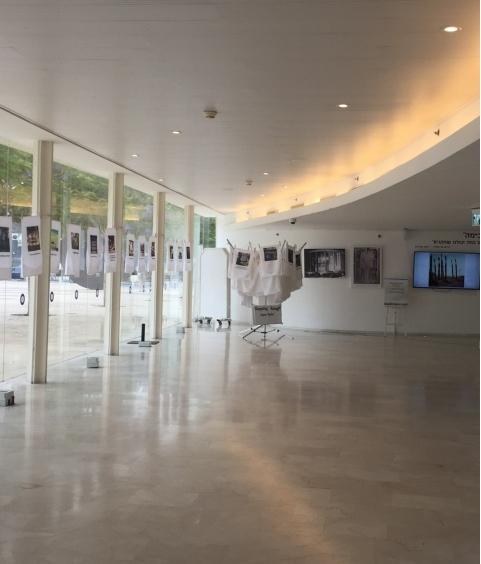
Cover: Sleepy People by JULIA HADRICH KAYLA HUNNICUT ANDRII CHERNOVIL MARGARIDA NAVES WARWICK SAMUEL SUZANNE GIBBS BRIAN ORD LAURA AHOLA-YOUNG DANA TAYLOR LandEscape A r t R e v i e w Anniversary Edition C o n t e m p o r a r y
My process begins with the moment. The energy, the emotion, a thought or a message.
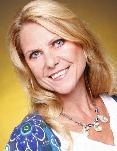
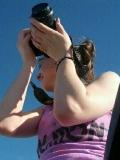
A vision arises in my mind, then I take that image and convey it with acrylic paint on stretched canvas for a final piece that encapsulates everything from that instance.
I use a technique I named fluid fractal where I manipulate the paint with breath, essentially breathing life into it. Fluid fractal is used as representation of energy just like vivid colors are influences to the emotion.
The phrase ‘Impossible Interiors’, attempts to describe the nature of Brian Ord’s most recent work. Involving impossible interiors & exteriors, this new two dimensional work has evolved in recent years, from decades of sculptural activity. The works originate as small scale hand worked collage, appropriated from a wide variety of printed sources. These collages are then photographed at high definition & digitally printed, sometimes on a different scale, directly onto canvas. The canvases are then reworked with a range of materials and techniques, including polyester resin & oil paint.
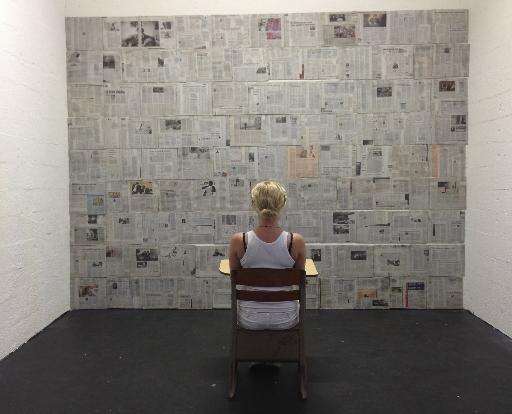
I try to explore the paradox of the human being living alone in community. Whom are we representing and who are we in reality? Already in our personal lives, we have troubles to answer this question in a satisfactory way. My responsability is to pick it out as a central theme. In order to achieve this, not only the facial expressions, the colours and „moods“ are important, but also the confrontation of every personality with their own contexts. The subleties operate as counterpart of the basic forms.
The artist Andrii (Abhinava)

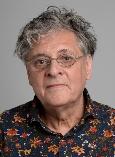
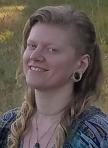

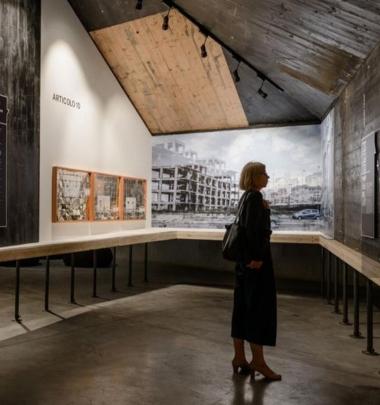

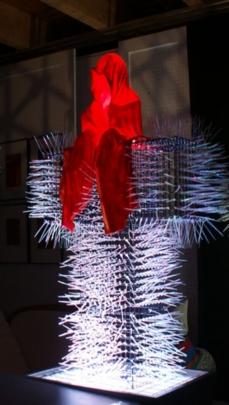

Chernovil in his artworks uses original shooting target paper his canvas, the allegory of aiming and achieving, or not, the goal. The artistic relationship between a symbol so clearly known to be the target, the aim, the goal and the beauty in freedom of artistic expression. This symbiosis of images, those we easily see and those that are only available to be seen within the works of the artist, immerses the viewer into the depths of the subconscious.A special technique of color transfer integral to the artist enhances the mysterious images on canvas and immerses the viewer in a mystical dimension.
Israel / United Kingdom
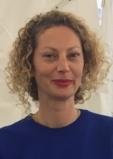
I was born and raised in Tel Aviv, which is a vibrant, colourful, hectic and exciting city. I was lucky enough to have an exceptional upbringing, which was based on free thinking, unconditional love and acceptance of self and others. I was constantly exposed to a variety of art forms and was surrounded by great minds, extraordinary talents, passionate and exceptional individuals who spoke their minds freely, and confidently exposed their souls, so from a very young age I understood and appreciated the importance and power of creativity, diversity, critical thinking, self- reflecting, freedom of expression etc... and so I chose to walk in the same path, while skipping and balancing both intellectual and emotional aspects.
Julia Hadrich is an aspiring photographer living in Peoria, AZ. Majoring in photography and a minor in photo-editing, she received an Associate in Arts from Rio Salado College. From camera obscura to the immensely challenging world of digital, Julia has been emerged herself in the history of photography. Not only does Julia continue to learn different techniques, she challenges her photography skill by entering online photography sites such as; Viewbug but also, in local art competitions. In February 2012, during the Arizona Centennial, her photographs were displayed at the Phoenix Art Museum.
SUMMARY
Kayla Hunnicutt
C o n t e m p o r a r y A r t R e v i e w
Ukraina / Qatar
USA
Suzanne Gibbs Andrii Chernovil
Special Issue
USA
Brian Ord United Kingdom
scape Land CONTEMPORARY ART REVIEW
USA / United Kingdom
Dana Taylor
Julia Hadrich
My work centers on my attempt to pay attention to signage in the natural world.Through mark making, I am attempting to capture singular instances of temporary phenomenon, consciously and unconsciously transcribing patterns. I research and aesthetically study geography, plant physiology, mining and environmental issues in an attempt to mimic the structures and represent science through meticulous and labored marks. I have named my most recent collection of paintings
Prodromes in relation to an internal, structural and organizational system of signage and warnings. Through paint, I am attempting to capture these instances of signs as symptoms: fleeting, a speck, a circumstance, a neural, biological, philosophical, sensory occasion.

The involvement of the viewer in the painted image seems to have always existed. From the age of 15unusually young with hindsight – I have painted outdoors, plein air.
Over the years the lessons all artists learn the hard way have been honed into a process involving large scale drawings, (to prevent being drawn into detail) small scale water colour studies and later, when more understanding is needed, a plein air oil painting.
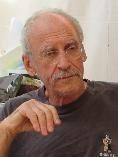
In the studio all this information of composition, tone and colour are slowly merged into a painting which takes on its own life and direction.
Margarida Naves, was born in Lisbon, Portugal, and has graduated in Industrial Design, having later completed a Master's Degree in Interior Design, and a degree in Photography. This artistic medium was an old passion, and she decided to devote herself to the development of her personal writing, where her work portrays the daily landscapes with a poetic approach, close to the oneiric universe. Her practice creates a dialogue where the real and the imaginary are combined, in an abstract or accurate form, giving place to a fictional nature and narrative.

Special thanks to Haylee Lenkey, Martin Gantman , Krzysztof Kaczmar, Joshua White, Nicolas Vionnet, Genevieve Favre Petroff, Sandra Hunter, MyLoan Dinh, John Moran, Marya Vyrra, Gemma Pepper, Michael Nelson, Hannah Hiaseen and Scarlett Bowman, Yelena York Tonoyan, Miya Ando, Martin Gantman , Krzysztof Kaczmar and Robyn Ellenbogen.
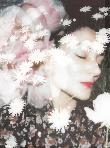
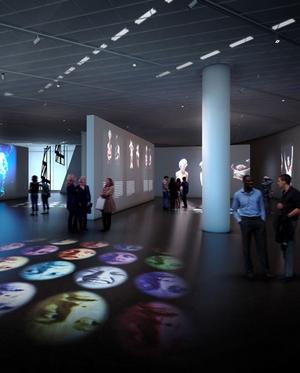
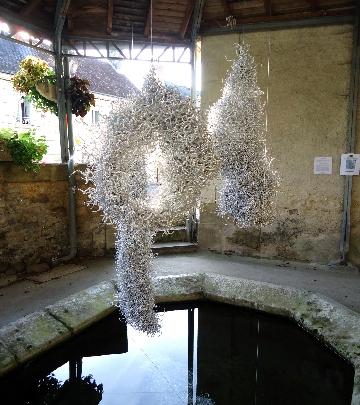
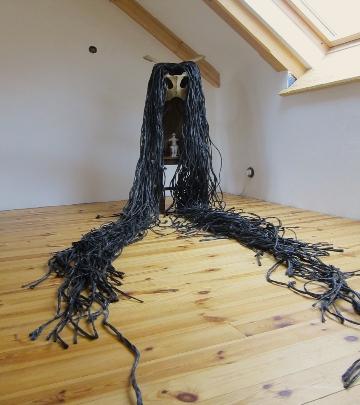
Special Issue 4 26 Andrii Chernovil lives and works in Doha, Qatar Brian Ord lives and works in Tynemouth, Northumbria, UK Laura Ahola-Young lives and works in the USA Dana Taylor lives and works in Tel-Aviv, Israel Warwick Samuel lives and works in the United Kingdom Margarida Naves lives and works in Lisbon, Portugal Suzanne Gibbs lives and works in California and in England Kayla Hunnicutt lives and works in Portland, Oregon, USA Julia Hadrich lives and works in Peoria, Arizona, USA 54 82 108 132 158 188 210
SUMMARY scape Land CONTEMPORARY ART REVIEW United Kingdom USA
Margarida Naves Portugal
Laura Ahola-Young Warwick Samuel
LandEscape meets
Andrii Chernovil
TARGETS
Tiny and big goals.
Important and yet not so. Our own and those of others. The momentum of human drive towards... Moments of challenge.
Lifetimes of determination.
The artist Andrii (Abhinava) Chernovil in his artworks uses original shooting target paper his canvas, the allegory of aiming and achieving, or not, the goal.
The artistic relationship between a symbol so clearly known to be the target, the aim, the goal and the beauty in freedom of artistic expression. This symbiosis of images, those we easily see and those that are only available to be seen within the works of the artist, immerses the viewer into the depths of the subconscious.
A special technique of color transfer integral to the artist enhances the mysterious images on canvas and immerses the viewer in a mystical dimension. About The Artist The Artist Andrii (Abhinava) Chernovil (included in the TOP 10-spiritual Ukrainian artists) was born 03/20/1977 Odessa, Ukraine. In 2000 was graduated Art University by M.B. Grekov. Odessa, Ukraine. His teacher was the famous artist Vitaliy Alikberov whose works are in private and museum collections, as well as The Guggenheim Museum (New York). Since 2014, Andrii lives and works in the Middle East (Doha, Qatar) and Since 2016, he has organized the world art movement for peace "Qtargets". The project travels the world, and was exhibited at The Saatchi Gallery London, in New York, Art Basel, Qatar, Ukraine, India, and is scheduled to be presented at the Venice Biennale in October 2019.Andrii’s paintings are sold at auctions and adorn many private collections around the world, as well as in the Sheikh Faisal and Emir Qatar Sheikh Tamim Bin Hammad Al Thani Museum.
Hello Andrii and welcome to LandEscape. Before starting to elaborate about your artistic production and we would like to invite our readers to visit https://www.chernovol-art.com in order to get a wide idea about your mulifaceted
artistic production, and we would start this interview with a couple of questions about your multifaceted background. You have a solid formal training: you studied under the guidance of the famous artist Vitaliy Alikberov and you graduated from the Odessa State Art Collage: how did those formative years influence your evolution as an artist and help you to develop your attitude to experiment in fields as in interior
scape Land CONTEMPORARY ART REVIEW
An interview by Josh Ryder, curator and Melissa C. Hilborn, curator landescape@europe.com
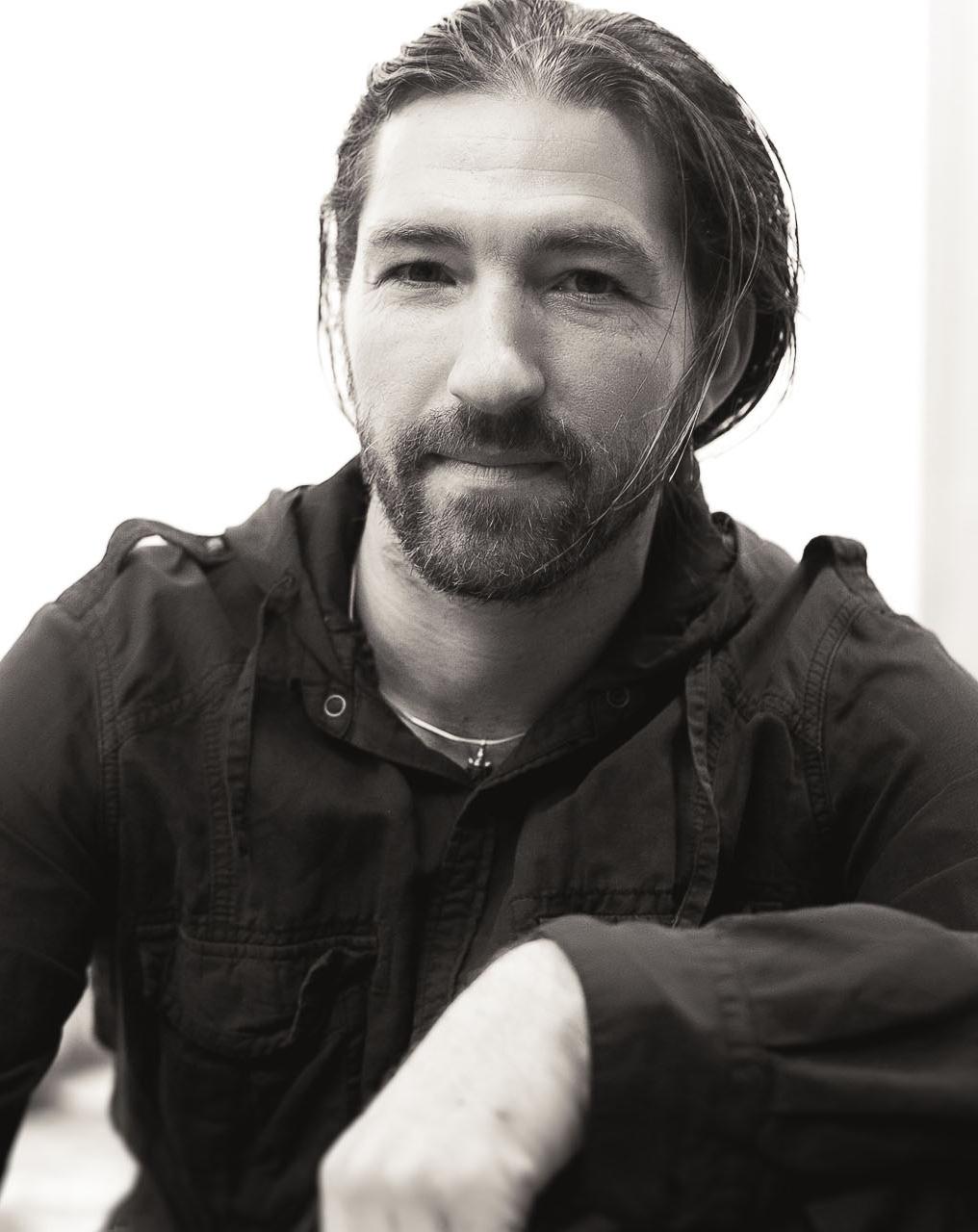
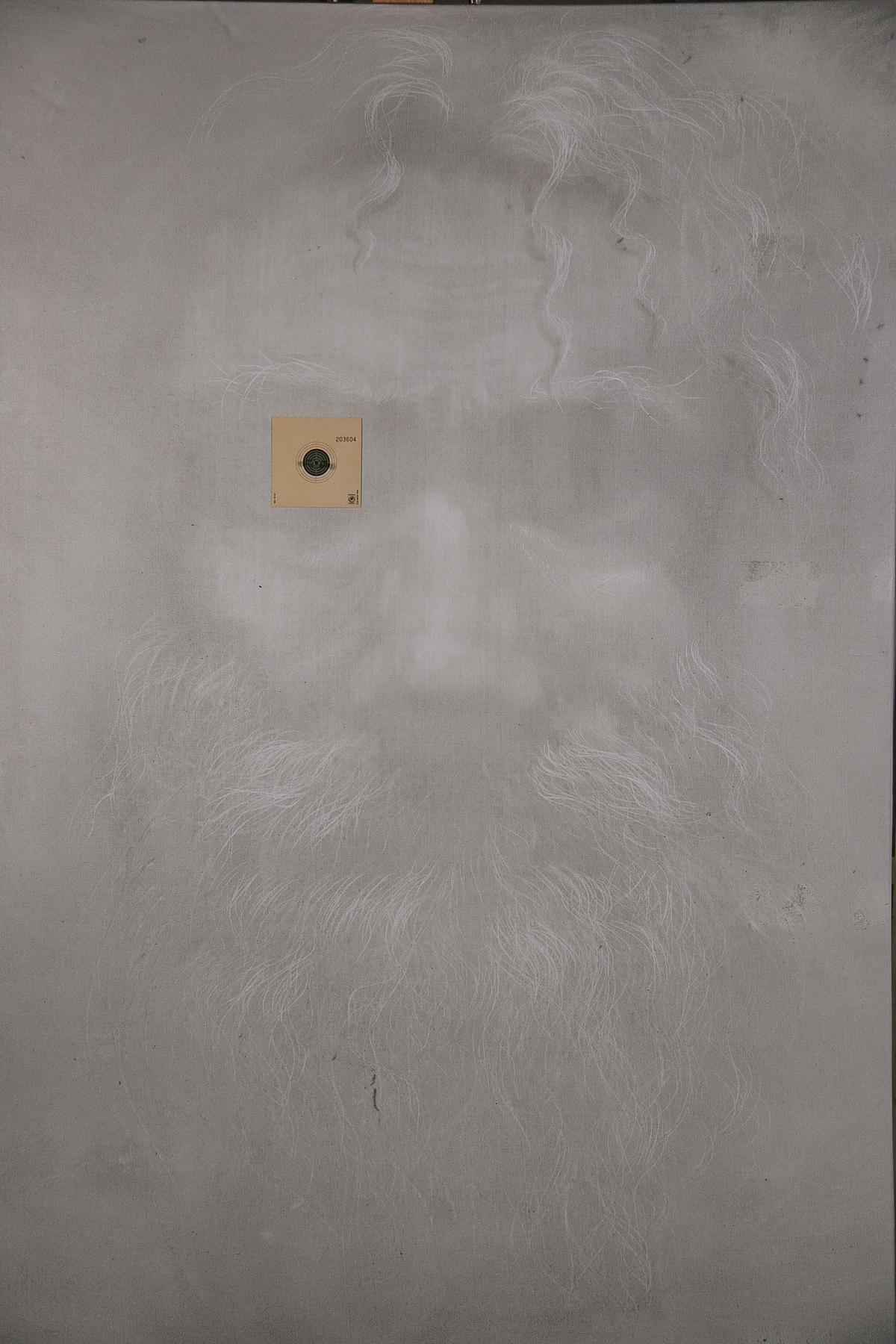
Eclipse
design and decoration projects?
Andrii Chernovil: Even before I enrolled into the Art College, my artistic taste was being formed under the influence of various ethnic cultures, as well as literary works about the world of mysticism, metaphysics and esotericism. In the first couple of years at the Art College, most time was spent on the acquisition of techniques, painting and drawing methods and skills. The ability to express my ideas and visions on a canvas was greatly influenced by my contact with a renowned master, Vitaliy Alekberov. At the same time, I found myself forming a very strong bond with philosophical painting through the meaningful images with a spiritual message. Together with my friends, all like-minded people, and my wife-to-be, Nadezhda, we experimented a lot on coming up with creative images, colours and shapes. Upon graduating from the Art College, already having a family, we started expressing our abilities to create stylized interiors and exteriors using various ornaments, decorative panels, sculpture and epochs. We had to do a lot of research to create sketches with numerous details and elements.
Owing to the active designer work and stylizing, the constant search of ideas and materials, I attended many international seminars and exhibitions, was lucky to meet interesting and creative people, as well as various specialists in the field. Travelling has become a part of me: Europe, America, India, China and the Middle East are the regions and countries that have had a huge impact on me and constantly inspired me to create a great deal of interesting art pieces. A series of spiritually themed works was born after visiting Nepal. With the time, travelling around the world helped me to shape and deepen my visions of the world together with my art manner.
The body of works that we have selected for this special edition of LandEscape has at once impressed us of for the way you provide the
viewers with such a multilayered visual experience: when walking our readers through your usual setup and process, would you tell us how do you usually develop the initial ideas for your artworks?
Andrii Chernovil: There are no conditions or regulations for creative ideas to be born. At times, you get a ‘ready’ image that does not require any additional development, also at times you would get a ‘ready’ idea which is shaped and complete. However, occasionally, you get an image, just like a seed, which is then formed and raised by reasoning or a spontaneous intervention of the equivocality. Occasionally, an image pops up which is transformed as you go just like the shapes would in one’s dream until it acquires the final endlessness.
It is worth mentioning that quite often the creation of image and paintings results from the inspiration one gets from the seen or heard, be it a piece of music, art, or nature.
For instance, working on the Abduction of Europe started intuitively like an abstract motion of colour patches made in the a la prima technique which eventually, with the help of multi-layered painting, turned out to have virtually invisible images with the symbolic and allegoric character. Even though the image of a woman is encased into a silhouette of a mighty animal, the bull represents the power hidden in every woman which at any moment can abduct a woman herself. A woman embraced in her desires thrives to achieve the goals. (This is how, gradually, a certain message to the viewers was created).
Your artworks are marked out with such sapient combination between geometric patterns and a variety of tones, that provide your works with a unique aesthetic identity. New York City based artist Lydia Dona once stated that in order to make art today one has to reevaluate the conceptual language behind the mechanism of art
Andrii Chernovil scape Land CONTEMPORARY ART REVIEW
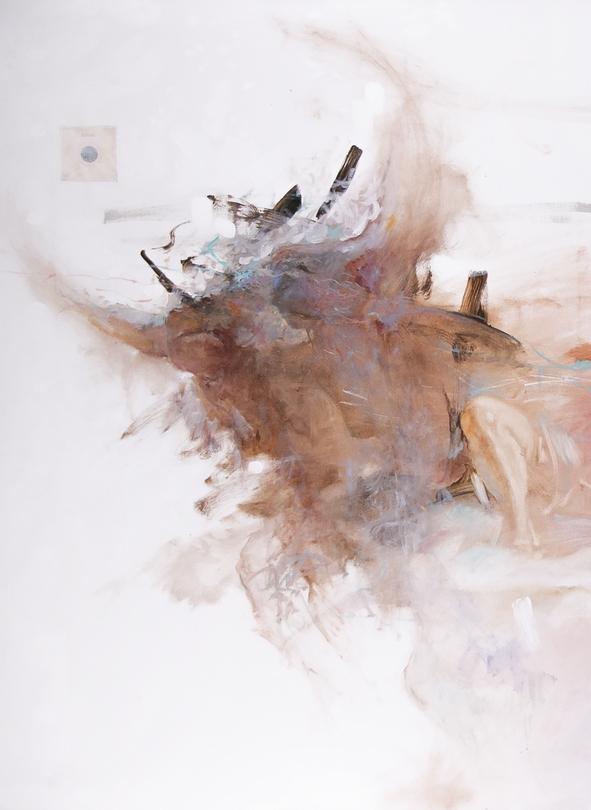
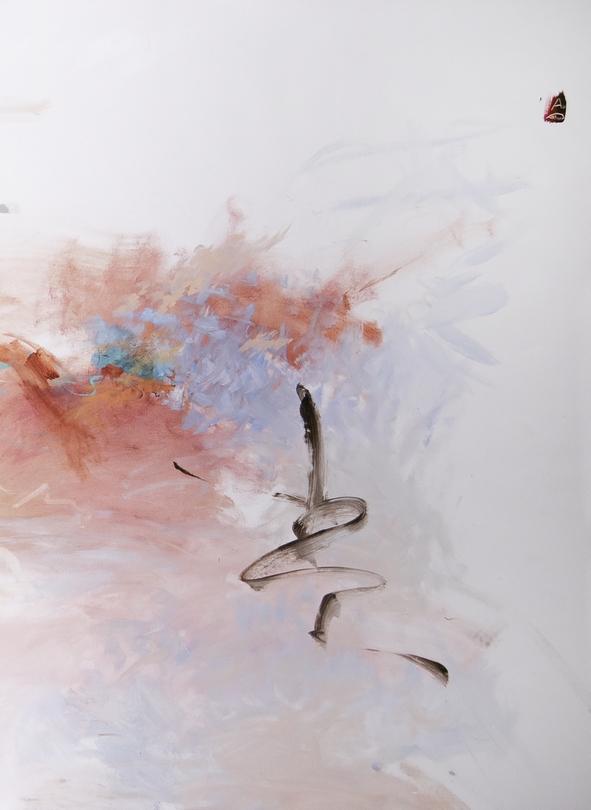
The Abduction of Europe
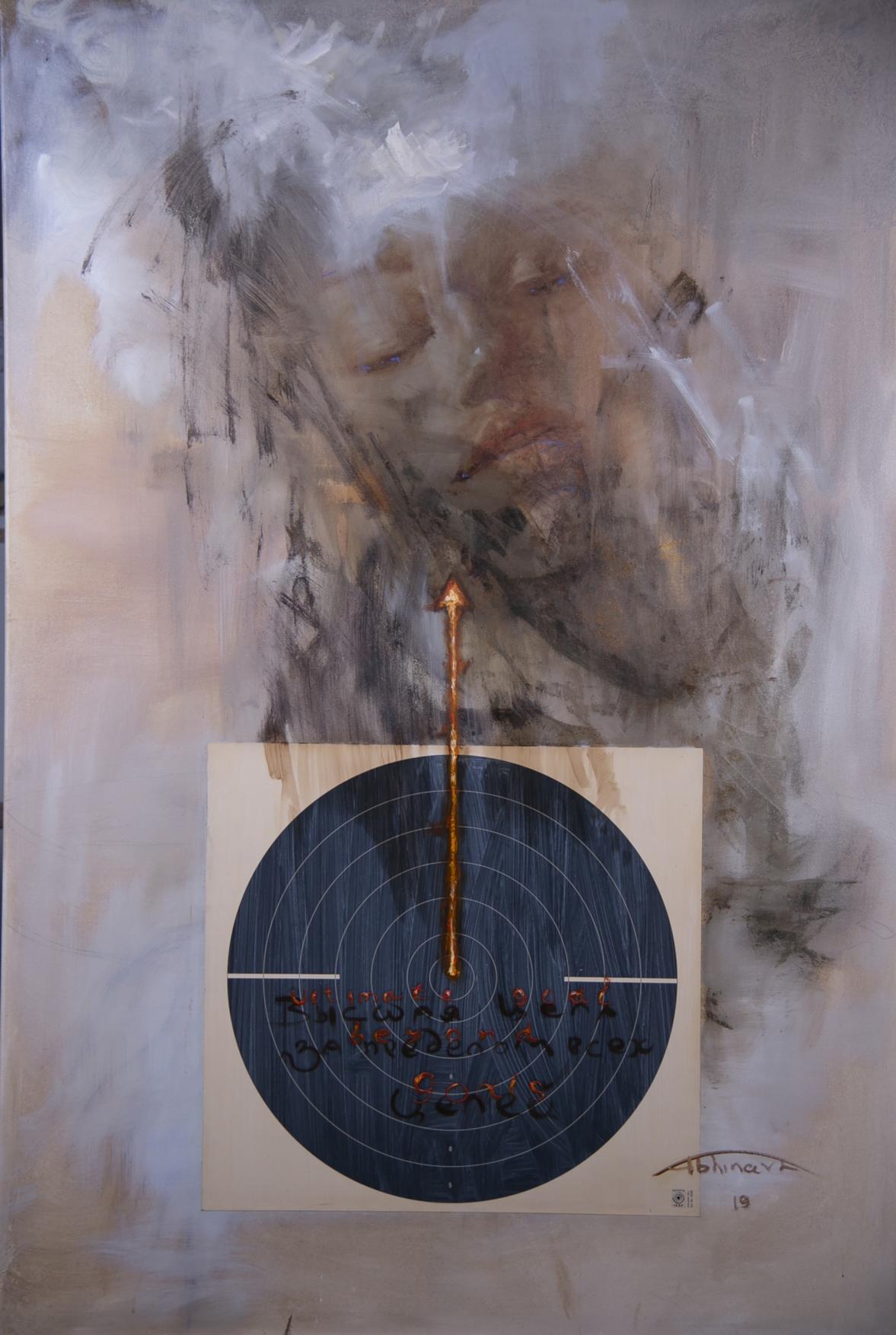
goal beyond_goals
Ultimate
making itself: do you create your works gesturally, instinctively? Or do you methodically transpose geometric schemes? In particular, how do you consider the relation between the nature of the concepts that you explore in your artistic research and the physical aspect of your daily practice as an artist?
Andrii Chernovil: I can use different methods of representing ideas on a canvas. At times, a complete image pops up in my mind and the only thing I need to do is to recreate it on a canvas, which will then lead to a creation of a series of works filled with its own meaning.
Another method that I particularly enjoy is a spontaneous movement of colour and shape on a canvas performed by a variety of techniques and tools. Afterwards, looking at the composition of colour and tonal stains and lines, in my mind, through my vision, a multi-levelled image with a myriad of images and moods is created. Only after this, I implement my academic knowledge and skills, yet, still I continue working half-intuitively to finish a piece, though I tend to have some sort of incompleteness in my creations. The desire to add geometric patterns, symbols and calligraphy into the paintings, as a rule, comes at the last stage of creating the works. The plexus of various concepts and philosophies, which can be seen in my paintings, originate in my inner world and partly in my subconsciousness. On the physical level my creative practices in the art closely interweave with numerous esoteric notions, such as yoga, meditation and contemplation.
We have really appreciated the vibrancy of thoughtful nuances that mark out your artworks, and we like the way they create tension and dynamics: how did you come about settling on your color palette? And how does your own psychological make-up determine the nuances of tones that you decide to include in a specific artwork in order to immerse the viewer into the depths of the subconscious?
Andrii Chernovil: Colour is crucial for me in painting, since colour is a fine substance which enables to convey the deepness and emotional depth of a painting. Depending on the state of mind while creating an art work, the colour combinations transmit, as though encoding in each tone, emotions and inner promises, which are conveyed on a subliminal message and turn out to be even deeper and meaningful than the expression through symbols and allegory.
It's important to remark that you use original shooting target papers, as in the interesting DNA, See Goal and Seed of Insight, and we like the way you artworks, as the interesting Ultimate goal beyond goals, convey such a stimulating combination between figurative elements and captivating surrealistic feeling: how would you consider the relationship between abstraction and figurative in your practice? In particular, how does representation and a tendency towards abstraction find their balance in your work?
Andrii Chernovil: The concept of the painting The Highest Target Beyond Targets is that even the most significant and far-fetched target still remains in the dimension of its achievement. Here, however, the highest target, which is beyond all the target, does not possess the qualities of a target since it may not be comprehended intellectually and, thus, becomes that of a transcendental truth. In other words, achieving the highest worldly and spiritual targets is something like a training, or, if you will, a game in the dimension of individual consciousness. It is when the absolute is present in everything and is realized by means of mercy only.
In order to depict that in my creation I used abstract as well as figurative approaches and expressions. Along with the readable and comprehensible symbols, one can notice abstract expressive dynamic.
Rich of symbols and marked out with sapient
Andrii Chernovil scape Land CONTEMPORARY ART REVIEW
DUALITY
combination between narrative style and surreal atmosphere, Freedom_Inside provides the viewers with such a multilayered visual experience, developing the expressive potential
OF INSIGHT
of symbols that you included in your work: how importance do play symbols and metaphors in your artistic research?
Andrii Chernovil: The language of allegory and

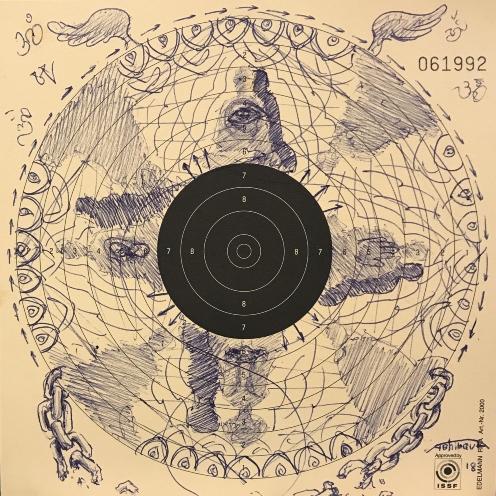

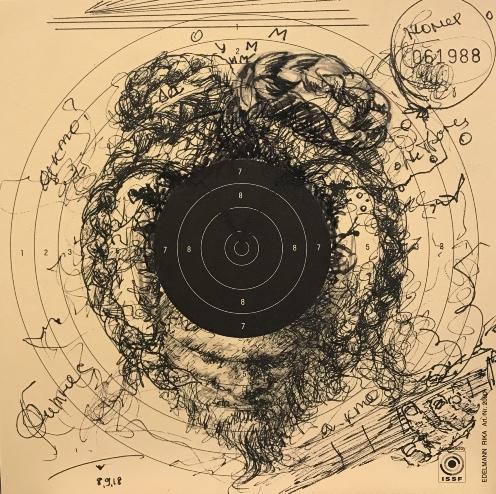
scape CONTEMPORARY ART REVIEW Land Special Edition
DNA
SEED
Karl Lagerfeld
symbols is very close to me. Most of my paintings are expressed through a marriage of associative images and elements. This is an ancient, logical and, at the same time, intuitive language which

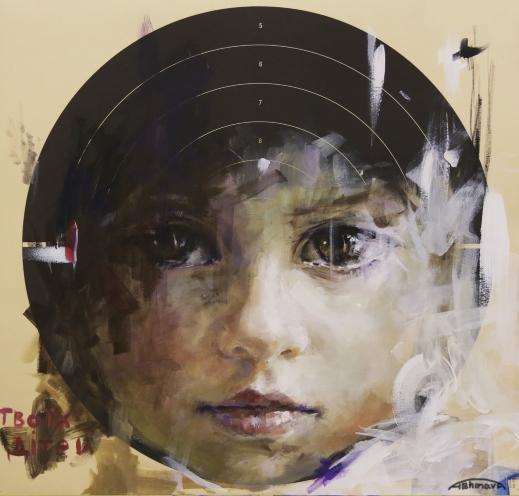
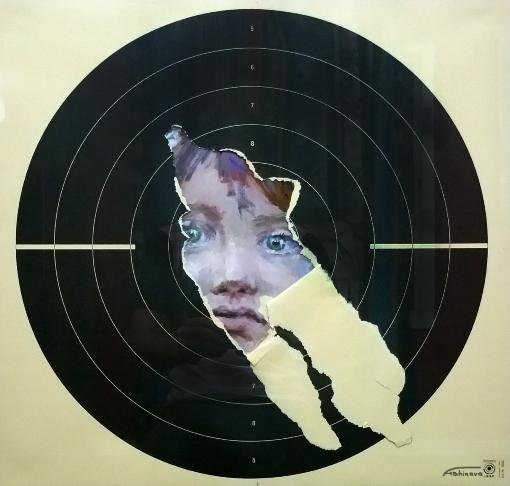
can convey a great deal of information. This is a sort of multi-layered cipher which enable a special contact with a viewer who is offered to solve riddles. This is also reinforced by incompleteness of
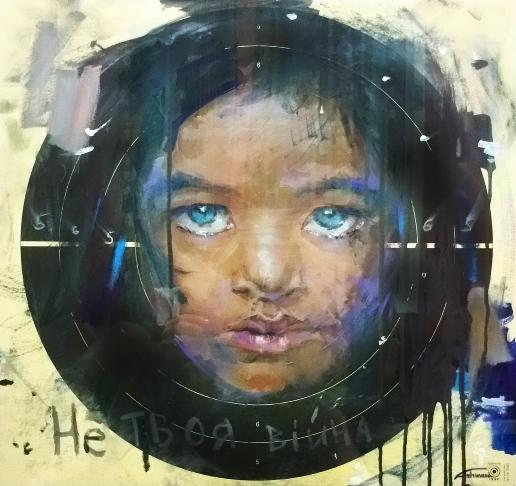
scape Land CONTEMPORARY ART REVIEW
Andrii Chernovil
a work, which, in its turn, engulfs a viewer even more into the process of acknowledging the meaningfulness of the messages.
With their unique visual identity, your artworks challenges the viewers' perceptual parameters: we daresay that your artistic practice seems to aim to look inside of what appear to be seen, rather than its surface, providing the spectatorship with freedom to realize their own perception. Austrian Art historian Ernst Gombrich once remarked the importance of providing a space for the viewers to project onto, so that they can actively participate in the creation of the illusion: how important is for you to trigger the viewers' imagination in order to address them to elaborate personal interpretations? In particular, how open would you like your works to be understood?
Andrii Chernovil: The ancient Vedic scriptures quite often mention that ‘all visible, the essence of the manifestation of the invisible’. The modern sciences agree with the statement, the quantum physics in particular. I invite a person not just to look at a pretty drawing, but to involve them into some sort of admiration, turn on their intuition, fantasy led by the feelings. These very feelings and emotions trigger an alchemic process of co-creation and belonging, which help the inception of one’s own interpretations and meanings. The lighting, psychological and emotional state at the very moment are crucial. Hence, every viewing of the painting provokes new impressions.
You travel a lot and you use to take your canvas and paints in every place you live, from whose culture and traditions you draw inspiration for the themes and the characters that we can admire in your artworks. How does your travels and your everyday life's experience fuel your creative process? In particular, how do you conider the relationship between experience and imagination playing within your artistic practice?
Andrii Chernovil: My family and I are travelers, cosmopolitans. Every new destination gifts us with new impressions. In order to spot something peculiar

scape CONTEMPORARY ART REVIEW Land Special Edition
Roots of desires
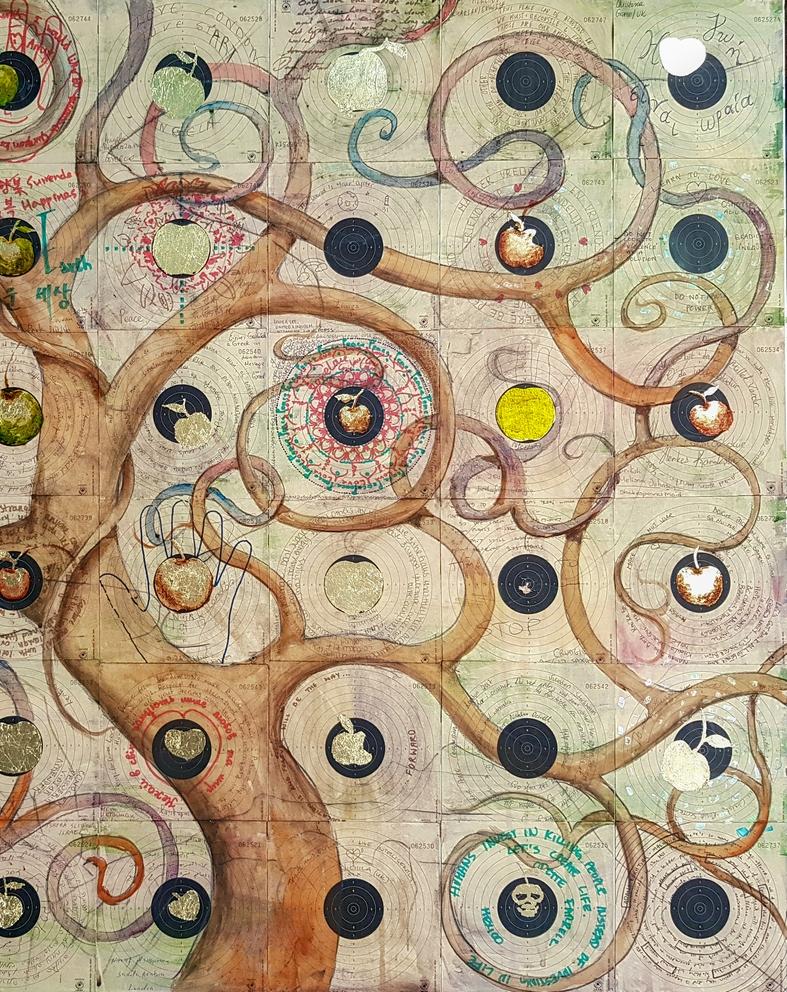
Andrii Chernovil scape CONTEMPORARY ART REVIEW Land
while travelling, one must remain relaxed, yet, with slight cautiousness. Your very attention may
immerse you into deep experiences, especially when it comes to different cultures and unfamiliar
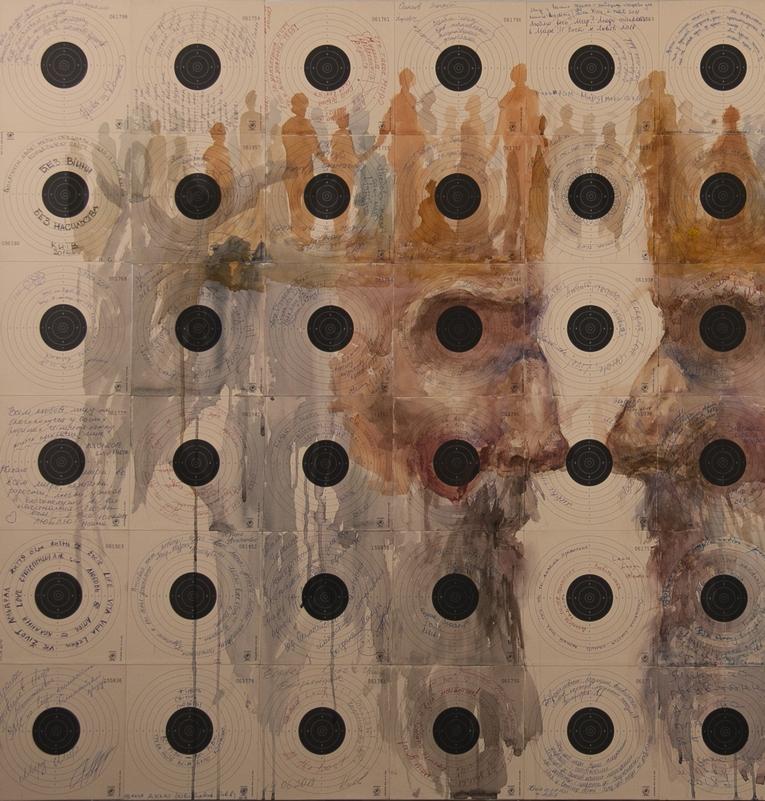
scape CONTEMPORARY ART REVIEW Land Special Edition
The Game of Thrones
places. People’s faces, their eyes in particular, attract me a lot. I sense that through eyes people of different
nationalities speak a common language. Admiring ancient art pieces of different cultures can also immerse you into special mystic states through the creative energies they carry. As though, whatever I can see outside echoes inside of me. The experience and my academic education give me a firm hand in my creativity. For instance, when an image spurs up in my mind, there is no need for me to concentrate on the techniques and on how to visually represent it. Here, at times, I just ‘switch off’ my brain and follow my imagination only, whereas the hands ‘remember’ the techniques to collaborate with paper or canvas. I have heard that there is a similar school in Japan where they teach a student the art of painting for 10 years. Once completed, the student is not allowed to even tough paper or canvas, but is encouraged to do any other job not related to the art. And, only after 10 years of doing another job, they start creating again. This kind of art education was created in order not to let technical knowledge interfere with the artist’s creativity development and growth. And this is true, indeed. From my own experience, I know, that even while being a student, learning methods and techniques, it was difficult to let them go and start using your vision and generate new creative ideas.
You are an established artist: your works are in private collections all over the world and over the years your artworks have been showcased in a number of occasions, at The Saatchi Gallery London, in New York, Art Basel, Qatar, Ukraine, India, and you are scheduled to be presented at the Venice Biennale in October 2019: how do you consider the nature of your relationship with your audience? By the way, as the move of Art from traditional gallery spaces, to street and especially to online platforms as Instagram increases, how would in your opinion change the relationship with a globalised audience?
Andrii Chernovil: Owing to the travels, exhibitions and social art projects, a great deal of
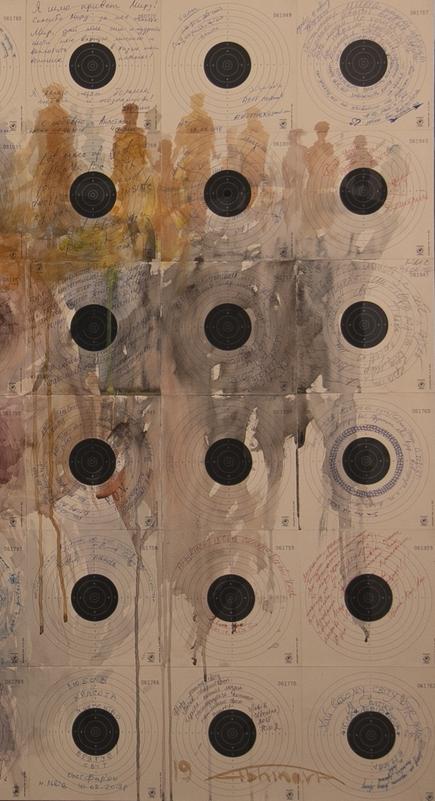
Andrii Chernovil scape Land CONTEMPORARY ART REVIEW


Andrii Chernovil scape Land CONTEMPORARY ART REVIEW
Middle Way
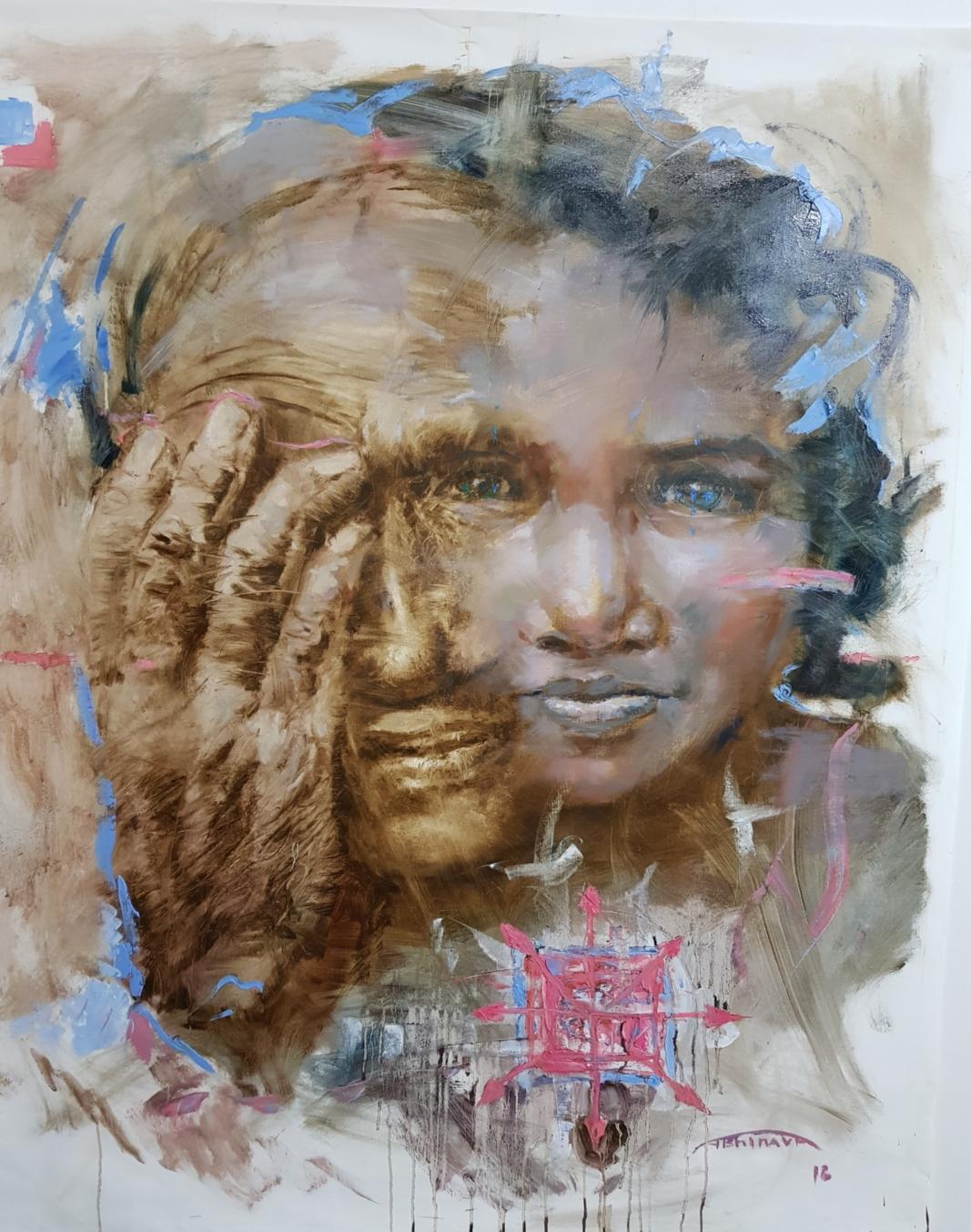
Land scape CONTEMPORARY ART REVIEW Special Edition Sea your self in one
people involved in the art and not really are my target audience. For instance, ‘Q’targets message for peace’ counts thousands of people from all the world, of different nationalities, interests and confessions who participated in the project. Every participant of the project records their positive message to the world on a shooting target, which are later compiled into a huge canvas and are united by one big positive message. The paintings are performed using translucent paints so that the messages written by the people can be read. What makes the project unique is that every
shooting target has its unique number synchronized to Instagram so that every person can find their message using their unique numbers to track where in the world there message currently is, in which painting or which gallery. This way, people not only participate in the project, but also co-create the art works by making a historic contribution to the development of arts and culture.
The use of the real shooting targets in painting, as a basis to express new significances, ideas and
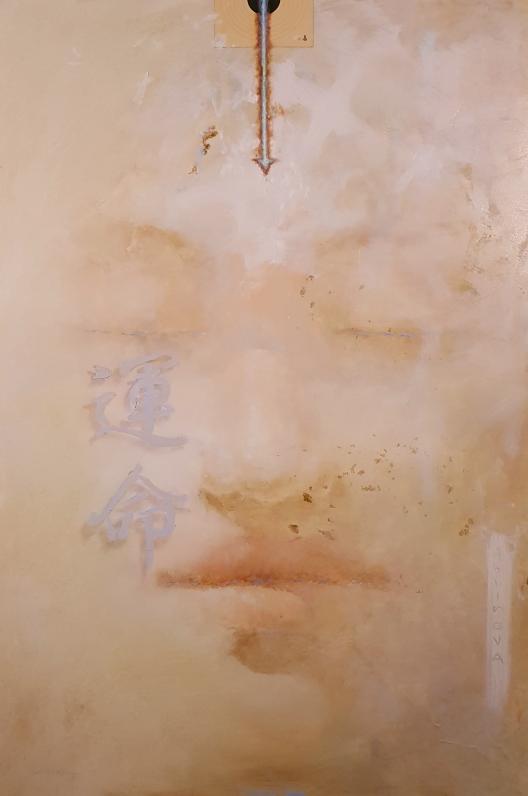
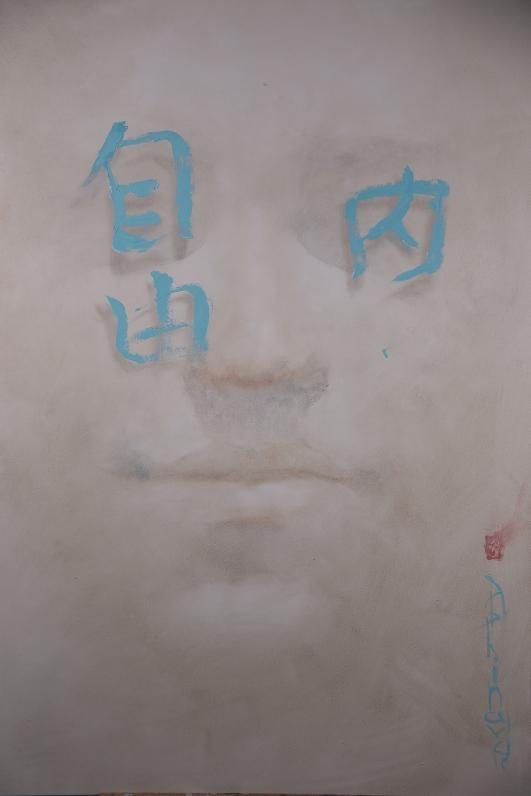
Andrii Chernovil scape Land CONTEMPORARY ART REVIEW
Freedom inside
Destiny
Qtargets
concepts, allows to form a conceptually new mechanism and philosophy, where the target is not a shooting object any longer, but it is used and understood as the form which symbolizes the achievement of the set goals and targets. The introduction of this new and positive interpretation has gradually started to destroy the previously formed stereotype where a shooting target was treated as a symbol of aggression and murder. This has led to creation of a new movement called the Targetism.

The information flow in the modern calendar is distributed rapidly mostly due to modern technologies and mass media. People are sharing their ideas, skills, interests, etc. and find co-thinkers, partners and even critique. The people of creativity, in whose hearts the spirit of art is alive, build up a rich creative atmosphere around themselves. The philosophy on the pages of Instagram project is ‘art is the energy of time becomes the art itself’.
The space where the art breaks the accepted and
scape CONTEMPORARY ART REVIEW Special Edition Land
message for peace
tangible borders, the world, through culture, goes back to the original Greek philosophy when the arts used to unite all branches: painting, sculpture, architecture, sports under the Aegis of Peace. Nowadays, the cyber world is the best means to communicate with the huge numbers of people to establish the Universal Peace amongst all people on Earth through the language of art. Thanks to Instagram and Facebook we are able not to air spiritual inspiration straight into the viewers’ soul
temples. This is quintessence of intellectual, mental and spiritual labour and service of all the participants towards the coomon wellbeing –the wellbeing of Earth, humankind and light.
This exact act of creativity, giving away the fruits of labour with the gratitude for the inspirations received allows us to be ready and accepting new challenges, replenishment with new strengths, wisdom and creative activity.
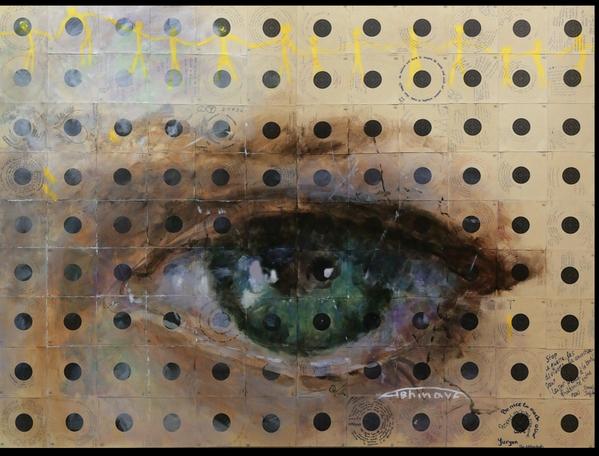
Andrii Chernovil scape Land CONTEMPORARY ART REVIEW
The very idea of the Peace Through Culture was initiated by a Russian painter and writer, diplomat and public figure, Nikolay Rerikh, whose creative and spiritual ways are very close to me.
We have really appreciated the multifaceted nature of your artistic research and before leaving this stimulating conversation we would like to thank you for chatting with us and for sharing your thoughts, Andrii. What projects are you currently working on, and what are some of the ideas that you hope to explore in the future?
Andrii Chernovil: At the moment, and until 2022,
we are planning to work on the Q’targets art project. It is of a very high interest to the public and does not leave anyone indifferent. It attracts ordinary people, as well as art workers and social researchers. Since Q’targets art project is not commercialized, we are open to collaborate with galleries and museums to exhibit the paintings which will later be auctioned and most of the proceedings will be donated to charity organisations.
This is also another goal of ours, to show people that one can be great while being tiny, i.e. by making a seemingly unimportant thing (writing a
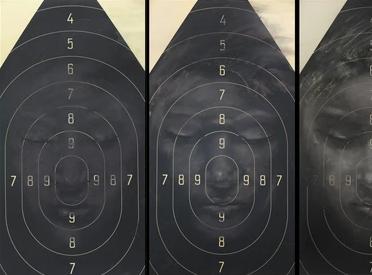
Land scape CONTEMPORARY ART REVIEW Special Edition
positive message on a shooting traget) one becomes a part of a global art project and, as a result, to contribute towards helping those in need.
Later this Autumn, we are expecting to release a new clothes collection which we designed in collaboration with one of fashion brands which will integrate some of my complete and partial art works.
I have accumulated quite a few sketches and ideas in the Cityscape style in the past few years. They all are expecting being realized in the near future. By the end of 2019, we are planning to organize
three thematic exhibitions in Santa Monica, USA, Biennale in Florence and a traditional exhibition to sum up the year in Qatar.
In conclusion, I would like to express my gratitude to the LandEscape team for very interesting questions. I wish you creative inspirations and new ideas.
An interview by Josh Ryder, curator and Melissa C. Hilborn, curator landescape@europe.com

Andrii Chernovil scape Land CONTEMPORARY ART REVIEW
LandEscape meets
Brian Ord
Lives and works in Tynemouth, Northumbria, UK
‘Impossible Interiors &Exteriors’
‘Life is a dream, keeping us from sleep’ Oscar Wilde
The phrase ‘Impossible Interiors’, attempts to describe the nature of Brian Ord’s most recent work.
Involving impossible interiors & exteriors, this new two dimensional work has evolved in recent years, from decades of sculptural activity. The works originate as small scale hand worked collage, appropriated from a wide variety of printed sources.
These collages are then photographed at high definition & digitally printed, sometimes on a different scale, directly onto canvas. The canvases are then reworked with a range of materials and techniques, including polyester resin & oil paint. The original starting material often involves recent architectural imagery or household interiors of various kinds. The illusionistic end products attempt to comment on issues involving the contemporary house & home, and are in particular, a political comment on the futile pursuit of domestic perfection They are also a parody of the original appropriated source material. Influenced by early renaissance paintings, with their imperfect attempts at perspective, they attempt to draw comparisons with the distortions now created by the over efficient use of modern wide angled camera lenses.The work is influenced by cinema, as much as it is by photography, sometimes echoing the shape of the screen via the canvas. Some of the titles & imagery also reflect this. Although these works primarily echo the unattainability of domestic utopia, recently they have also involved hotels, referencing similar escapist fantasies.
An interview by Barbara Scott, curator and Katherine Williams, curator landescape@europe.com
Hello Brian and welcome to LandEscape.
Before starting to elaborate about your
artistic production and we would like to invite our readers to visit http://www.nearts.co.uk in order to get a wide idea about your mulifaceted artistic production, and we would start this interview with a couple of questions about your multifaceted
scape Land CONTEMPORARY ART REVIEW
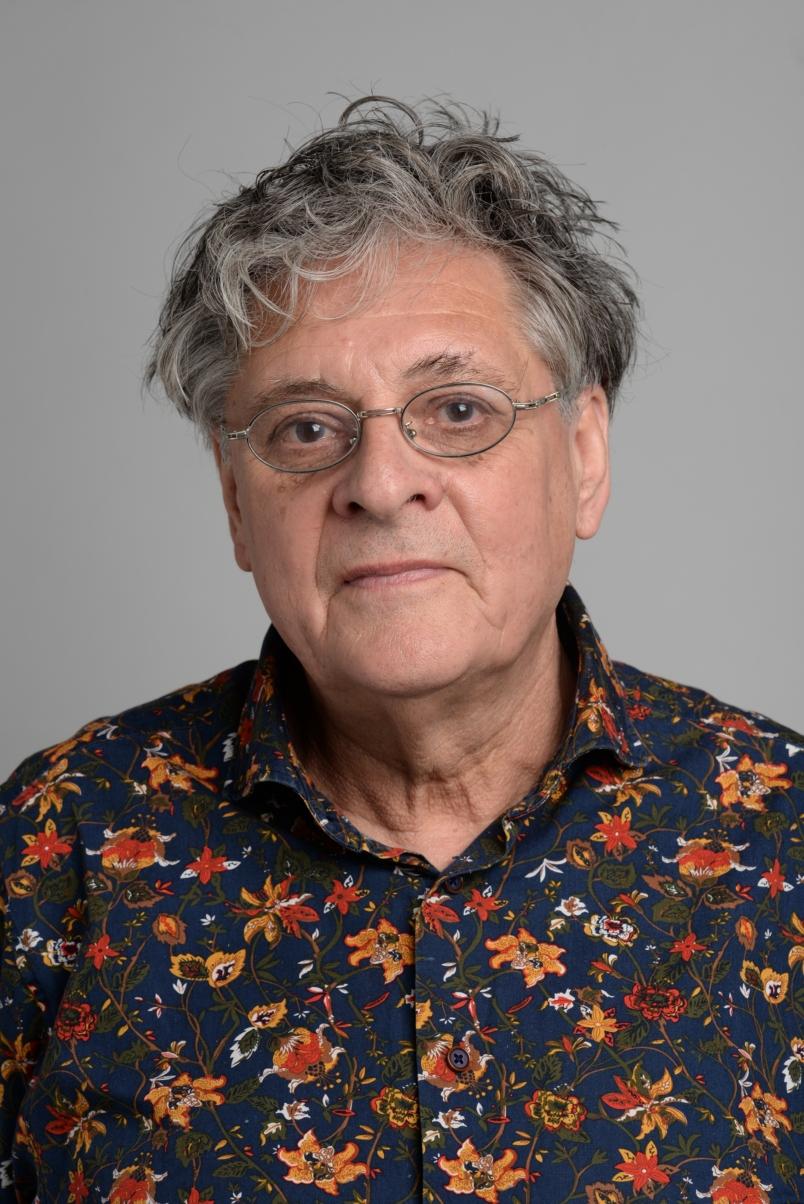
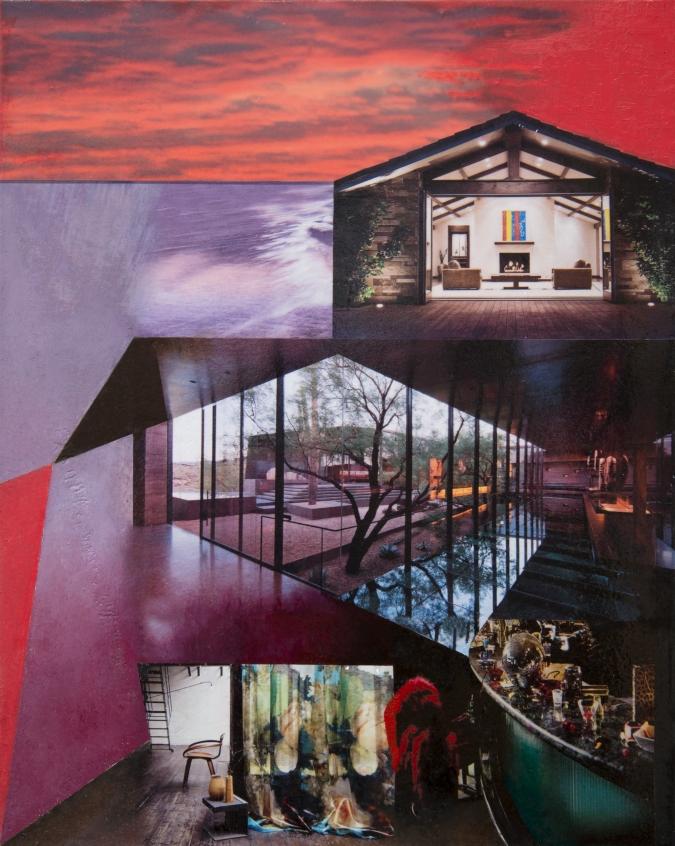
scape CONTEMPORARY ART REVIEW Land Special Edition
background. You have a solid formal training and you studied at the Chelsea School of Art: how did those formative years influence your evolution as an artist? Moreover, how does your cultural substratum direct the direction of your current artistic research?
Brian Ord: With Hindsight, I feel that the most important thing about my experience at Chelsea was my introduction to the British class system. Although Art Schools, especially at that time, were & are the most egalitarian of educational institutions. I came from a rather sheltered northern working class background, & the sudden transition into the fashionable affluence of Chelsea, came as quite a shock to me. It was only afterwards that I realised that not only was I coming in to contact with other working class peers, but also students from some of the most prestigious fee paying schools in the country. All of this had a profound effect on me & my work. Even the current body of work ‘ Impossible Interiors & Exteriors’, reflects a lot, in relation to varying class aspirations & illusions. From utopian interior & exterior designs, to the pursuit of evermore exotic foreign vacations. My work seeks to comment on all of this.
What is quite unusual is that, having studied sculpture and made sculpture for many years, I suddenly turned to 2 dimensions as my main area of production. This is not quite such a radical step as it may appear. A lot of the content in the sculptural work, such as appropriation & illusion, are still very much around in the 2 dimensional works, so I see this as very much a natural evolution.
Indeed people have commented on the obvious connections.
Whilst making sculpture I have always made collage, not to work from directly, but as an accompaniment to the sculptural process. With the advent of the Digital Revolution, it suddenly became possible to make these collages more permanent, via canvas, & extend them further. This has been so successful that it has transformed my practice.
For this special edition of LandEscape we have selected Impossible Interiors, a stimulating body of works that our readers have already started to get to know in the introductory pages of this article. What has at once impressed us of your insightful exploration of the relationship between painting and photography is the way your artworks provide the viewers with such multilayered visual experience: when walking our readers through your usual setup and process, would you tell us how do you usually develop the initial ideas for your artworks?
Brian Ord: I start by making collages, my approach to this is outlined in Question 6. Once the collages reach a conclusion, & I have taken a High resolution image of the collage, it is printed digitally on to a specially prepared canvas, of a size of my own choosing. The maximum width possible with the canvas I use is 1 metre, any length is possible. With bigger machinery, larger sizes are possible. After the printing, the canvas is mounted on a wooden stretcher. This is then covered with a thin layer of resin. Originally I used Water Clear Polyester Resin,
scape Land CONTEMPORARY ART REVIEW
Brian Ord
but I have since switched to a particular brand of Epoxy Resin, which gives more of a matt finish. Once the resin is completely dry & hard, I am able to paint over the surface of it with oil paint. The beauty of this is that one can adjust the paint on the clear resin surface, wipe it off completely, or simply change it. This painting process usually takes a number of weeks, but sometimes longer, & I have been known to come back to a piece to adjust it several years later. To sum up, the making process breaks down into 3 distinct facets. The collage, the printing & the painting. Each one of these facets involves many changes & adjustments, even within the printing process, ( which can sometimes involve photoshop to an extent ). So from start to finish, this can involve many months of activity.
We have really appreciated the way you sapiently balance between realism and unique dreamlike atmosphere that provides your artworks — especially My Blue Heaven and The Birds— with such recognizable identity: how do you consider the relationship between the real and the imagined playing within your artistic practice?
Brian Ord: I think that ‘imagined’ is the wrong word, as I don’t consciously try to ‘imagine’ anything as such. A better way of explaining it may be to consider the relationship between the formal & the illusionistic. I have a reservoir of images, cut out and kept from various sources, interiors, landscapes etc. Once I have enough of these, I utilise them to make collage. The images & associations are

Special Edition scape CONTEMPORARY ART REVIEW Land

Brian Ord scape Land CONTEMPORARY ART REVIEW
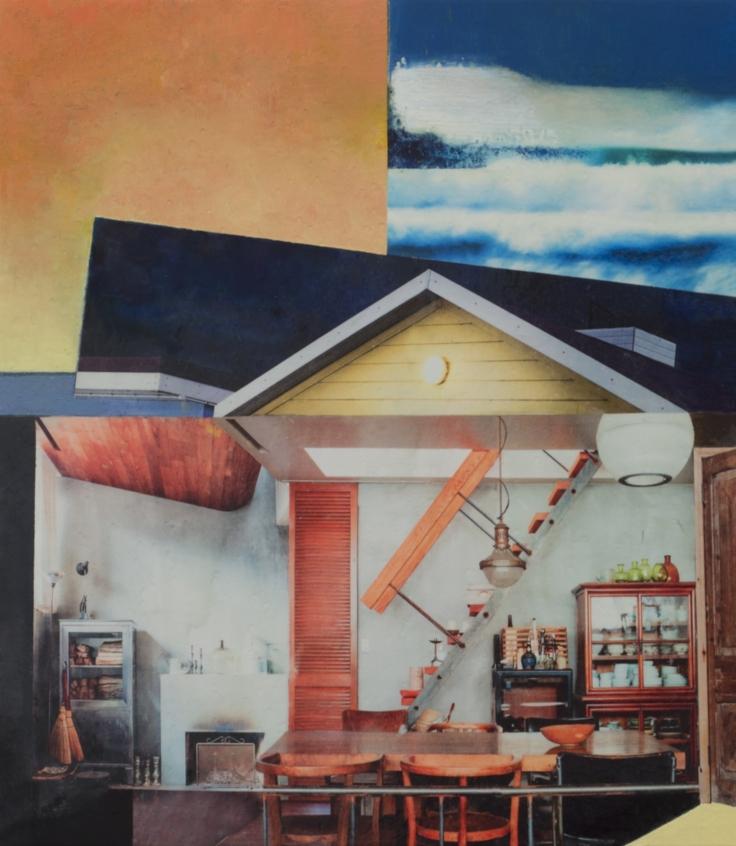
scape CONTEMPORARY ART REVIEW Land Special Edition
rather disparate, so I try to connect them, firstly in a formal way. Some of the images just seem to work together, so I extend them, adding other images as necessary. This juxtaposition of the incongruous sparks the magic in the work, & creates a new reality for the images concerned. This process is further developed once the images are on canvas. It’s a dialogue between formal relationships of colour, shape, line etc., & existing associations inherent in the initial images themselves. Illusion is a strong factor within this, I play on this & extend this also. All of this conspires to produce what you have called ‘dreamlike atmosphere’. The titles of the work are meant to encourage some of these associations, & encourage interpretation. The titles often refer to Movies, TV shows, Songs, Books, Puns, etc. The titles are also meant to encourage interpretation.
As you have remarked once, the final results is an attempt to comment on issues involving the contemporary house & home, and are in particular, a political comment on the futile pursuit of domestic perfection. Mexican artist Gabriel Orozco once stated, "artists's role differs depending on which part of the world they’re in": does your artistic research respond to a particular cultural moment? In particular, do you think that artists can raise awareness to an evergrowing audience on topical issues in our globalised age?
Brian Ord: Of course, we are all artists of our times, but these are not overtly political works, they are first & foremost formal & illusionistic. Even the ‘dreamlike quality’ is somewhat incidental. However, I have already mentioned the class system, the

CONTEMPORARY ART REVIEW
Brian Ord scape Land
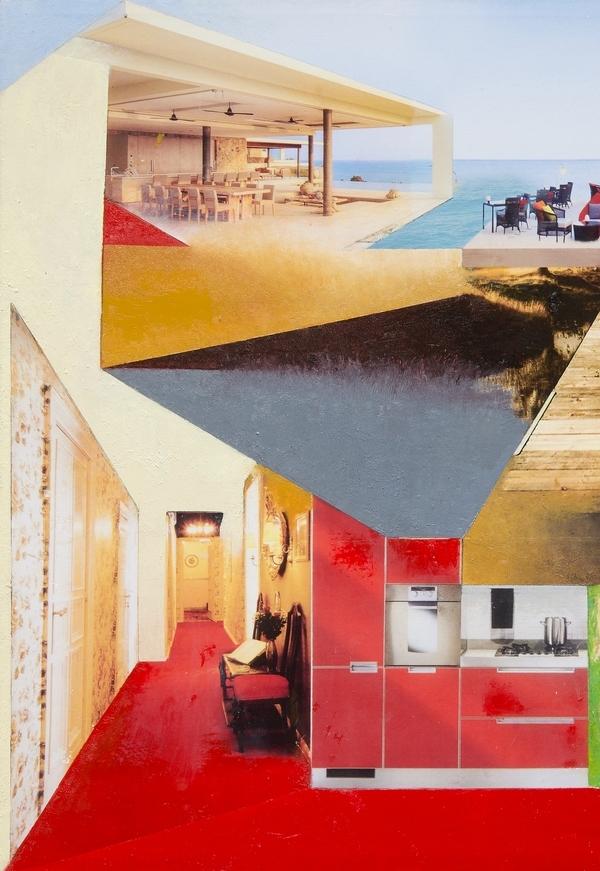
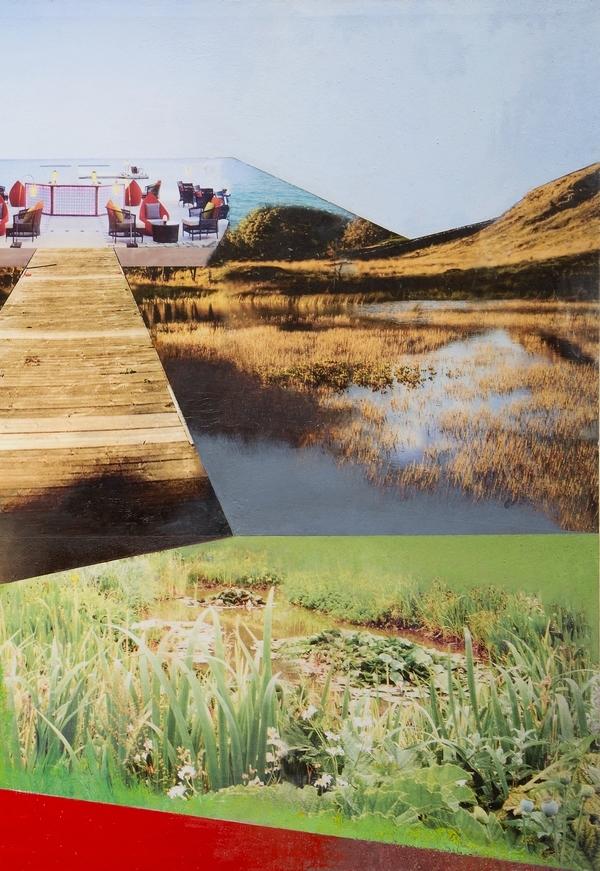
politics of house & home, hotels, holidays & escapism in general, as roots of my work. This all plays a part, and various individual works, perhaps accidently, occasionally
contain political references. Once I am aware of this, I sometimes play on it, extending it further. Sometimes I use titles to further extend these associations, eg.
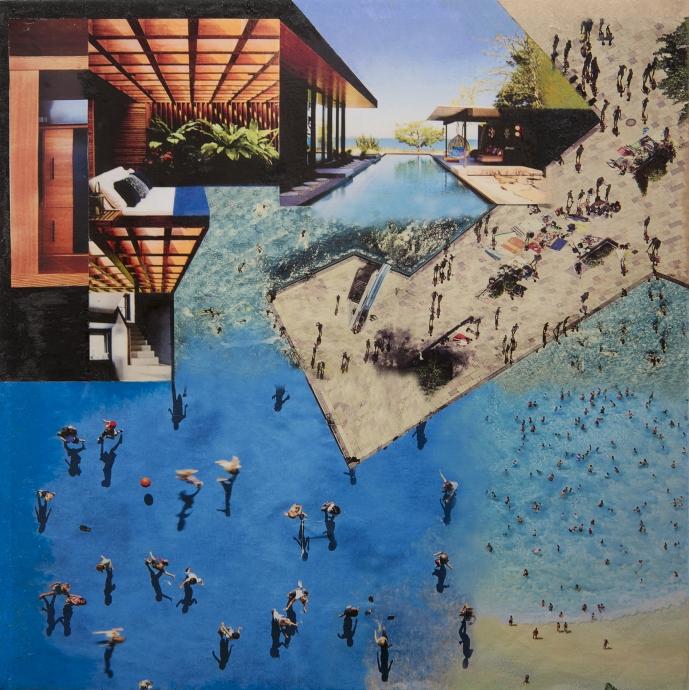
scape CONTEMPORARY ART REVIEW Land Special Edition
‘The Swarm’ – refers to refugees, ‘Urban Sprall’ – refers to homelessness, ‘Gullivers Travels’ – refers not just to Jonathon Swift’s tiny people, but also is a potential name for a
Travel Agent. I would also like to encourage the spectator to make their own political observations about these works. There is enough juxtaposition of associations &
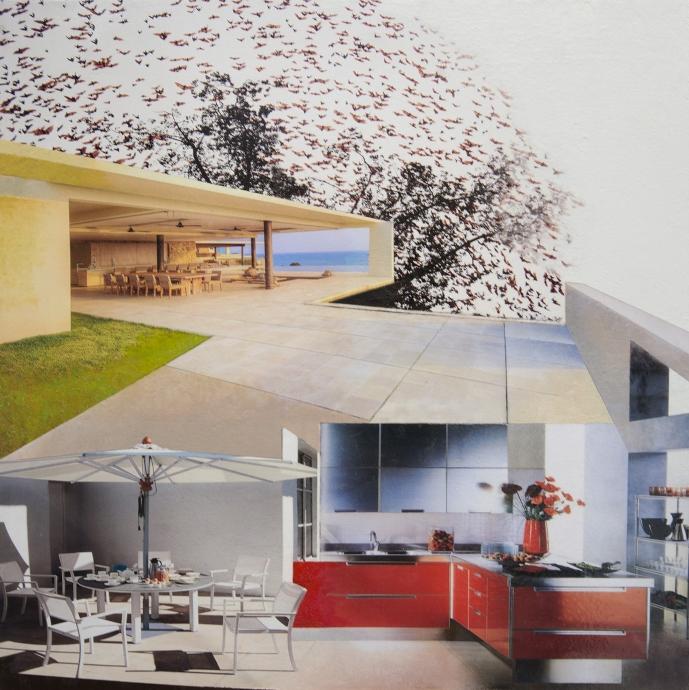
Brian
scape Land CONTEMPORARY ART REVIEW
Ord

Special Edition scape CONTEMPORARY ART REVIEW Land

Brian Ord scape Land CONTEMPORARY ART REVIEW
images to make anything possible. As a result, I have had many relevant & insightful comments made about the potential meaning of individual artworks. Sometimes I have even followed up on some of these comments in later works.
We have really appreciated the vibrancy of the tones that mark out your artworks, and we like the way they create tension and dynamics: how does your own psychological make-up determine the nuances of tones that you decide to include in a specific artwork?
Brian Ord: The vibrancy of colour or lack of it, in the artwork, is controlled to a large extent by the colours in the original collage. These can vary from vibrant to sombre, depending on the nature of the original source material. When the collage is printed on to the canvas, there is a limited range of tones available via the printing process. As most of the original source material is printed by the same process, this is rarely a problem. Once the canvas is printed I have a selected set of colours available via oil paint, these match well with the printing process. This then provides a very selective array of colours in the final work itself.
Having said this, the choice of vibrant or sombreness is itself influenced by things that I experienced with colour in two dimensions. Again, this often turns out to be the experience of colour in cinema rather than photography or paint. For instance, I may be influenced in some work by the sombre colours of Antonioni’s film of post industrial Italy ‘The Red Desert’, 1964, in
other more vibrant works, I could equally be influenced by the Florida light in the TV series ‘Dexter’ 2006 - 2013. All of this is very subjective and can change from artwork to artwork.
Photographer and sculptor Zoe Leonard once stated, "the objects that we leave behind hold the marks and the sign of our use: like archeological findings, they reveal so much about us". As an artist particularly interested inthe practices of appropriation and manipulation of objects, images, cards and photographs from a variety of sources in the mass media or the public domain, we’d love to ask you about the qualities of the materials that you include in your artworks: how do you select them and what does you address to combine found materials?
Brian Ord: I work with the reappropriation process in both two and three dimensions. Appropriation in contemporary art is commonplace, incorporating everyone from Sherrie Levine to Richard Prince. It’s taken for granted now as a methodology, rather like sampling in music. I like to think that my approach is different again. The photograph’s & objects that I uses are rarely my own. I appropriate objects, images, cards and photographs from a variety of sources in the mass media or the public domain. I would hope that my use of the original material of others, both subverts and recontextualises it. The material on the canvases for instance, may have originally belonged to someone else, but I have made it my own via a convoluted process of restructuring involving various materials and processes. This experience
scape CONTEMPORARY ART REVIEW Land Special Edition
highlights the significance of the reappropriation process to the art works themselves, as well as commenting on the hidden significance of the original material involved. While the sculptures utilised carefully chosen ready made objects, the new paintings rely on similar appropriated photographic imagery. Originally made from paper collages, they are then digitally
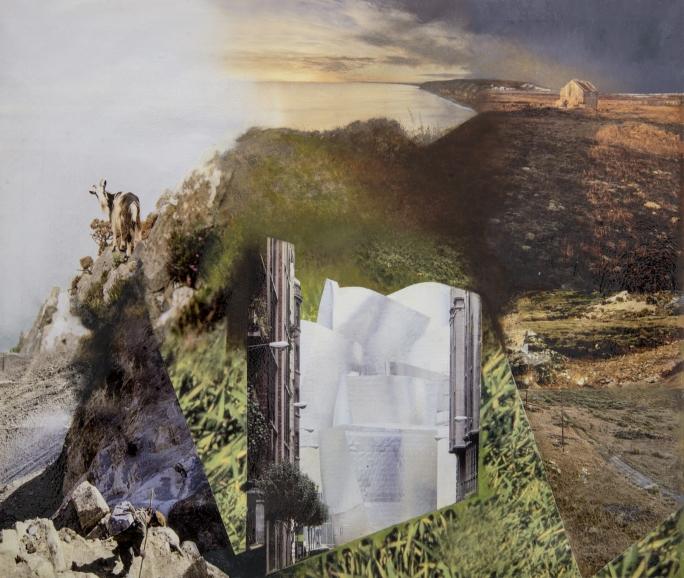
printed on to canvas before being transformed using oil paint & polyester resin.
I tend to choose the images from a variety of sources, both online & published material. I save these images over a few months & keep a supply permanently available. When there is enough new material, I work with it
Brian Ord scape Land CONTEMPORARY ART REVIEW


to produce new collages. The images that I choose tend to relate to the subjects that I am dealing with at the time, so at the moment I am collecting household interiors, architectural exteriors, landscapes etc. I choose the images also for their formal qualities, eg. colour, shape, associations etc. Also sometimes because of the distortions &
illusions inherent in the images. The materials & quality vary from digital prints & photocopies, to cards & newspaper cuttings.
I will then try to bring a number of these disparate images together in some form. By combining & cutting these images the collages slowly evolve. When they reach a satisfactory conclusion, I then photograph

scape CONTEMPORARY ART REVIEW Special Edition Land
them at high definition, to print on to canvas ready for the next stage of their evolution.
With their unique visual identity, your artworks challenges the viewers' perceptual parameters: we daresay that your artistic practice seems to aim to look inside of what appear to be seen, rather than its surface, providing the spectatorship with freedom to realize their own perception. Austrian Art historian Ernst Gombrich once remarked the importance of providing a space for the viewers to project onto, so that they can actively participate in the creation of the illusion: how important is for you to trigger the viewers' imagination in order to address them to elaborate personal interpretations? In particular, how open would you like your works to be understood?
Brian Ord: You mention Gombrich, but equally relevant is Roland Barthes, with his concept of ‘the reader of the text is the author of the text’ This is also true for my artworks. It’s important to provide enough of the right kind of visual information to make the work ‘open to interpretation’ I have said that my work is as influenced by cinema, as it is by photography. A lot of my titles refer to this eg.- ‘The Birds’, ‘Picnic at Hanging Rock’ etc.
One of the best examples of ‘interpretive’ cinema is Alan Resnais famous film ‘ Last Year at Marienbad’ 1961 ‘Marienbad’ is beloved by visual artists & critics because it
is the perfect example of ‘active participation in the creation of the illusion’. It’s not only about providing enough information to allow for a multitude of possible interpretations, it’s also about the way this information is put together. In other words ‘the form’ of the film, or in my case the artwork. Each interpretation has to work via the visuals available. The ambiguity has to make poetic sense. Let’s take David Lynch’s ‘Mulholland Drive’ 2001,for instance, another film that has had a huge influence on my work. This film is so open to interpretation that no one can agree as to what it is actually happening. Yet it doesn’t seem to matter, somehow it works anyway on an abstract level, visually, formally and poetically. This is what I am striving for in my own work. Sometimes the things going on in my art only reveal themselves to me afterwards, after many viewings of the final piece, sometimes not at all. Occasionally other people’s interpretations of the work can be very stimulating & enlightening. It’s not just about the viewer however. In the process of moving from collage to canvas, to finished artwork, I discover so much. Sometimes months after they are finished I realise the possibility of what they may have been referring to. I am then able to use this to make new work.
We like the way you artworks convey such a stimulating combination between figurative elements and captivating abstract feeling: how would you consider the relationship between abstraction and figurative in your practice? In particular, how does representation and a tendency
Brian Ord scape Land CONTEMPORARY ART REVIEW

scape CONTEMPORARY ART REVIEW Land Special Edition
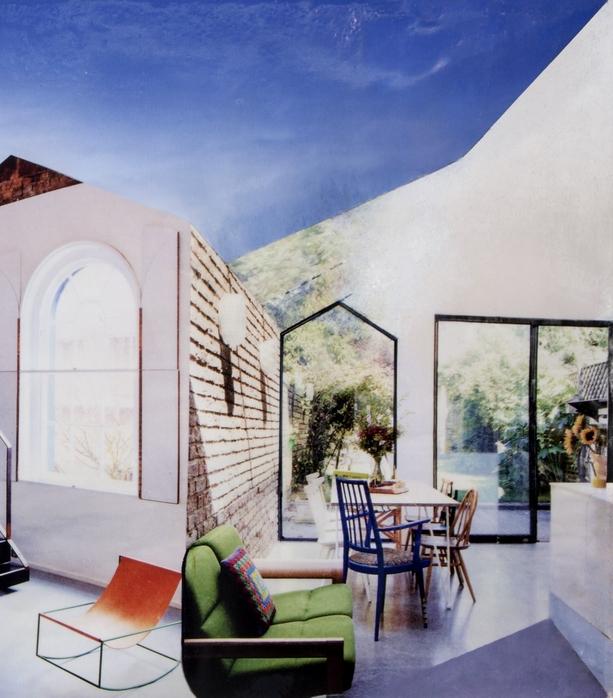
Brian Ord scape Land CONTEMPORARY ART REVIEW
towards abstraction find their balance in your work?
Brian Ord: The way the original collages work, is to link disparate imagery via formal means, eg. colour, line, shape, associations etc. In a sense this is I think you mean by the abstract & figurative. Within all of this, and within the paintings themselves, perhaps the most important component is the illusionary space created. In fact, the contradictory nature of space within the work, & the way that it reworked, is probably what gives the work the balance that you refer to. It’s also pretty obvious that neither the collages nor the finished artworks could exist without cubism. It’s not quite so obvious that neither could they exist without geometry. Triangles, circles, distorted rectangles etc. hold the works together. This comes in the first instance, from the distortions created in the initial photography by the use of super powerful modern camera lenses. I then take these distortions & geometry in new directions & exaggerate it further to create the correct effect. Another source of the works is Pre-Perspective European Painting, in particular ‘Carlo Crivelli’s –The Annunciation with St Emidius -1486, which is in The National Gallery, London. The impossible visuals in this case come from a struggle with realism, but again geometry holds it all together.
You are an established artist and over the years you have exhibited widely
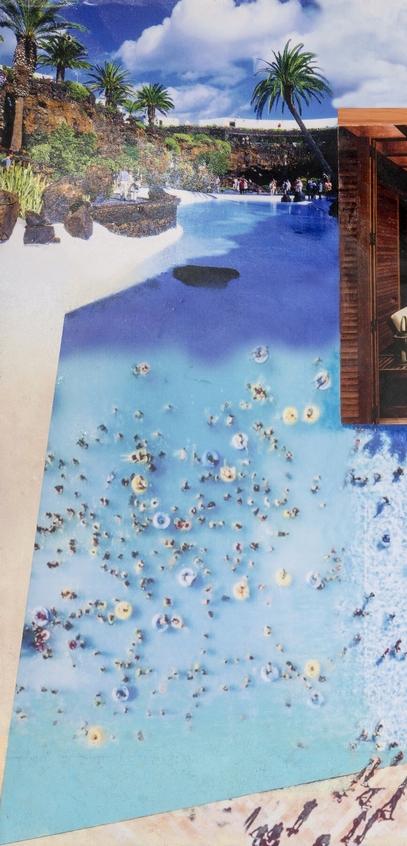
Land scape CONTEMPORARY ART REVIEW Special Edition

Brian Ord scape Land CONTEMPORARY ART REVIEW
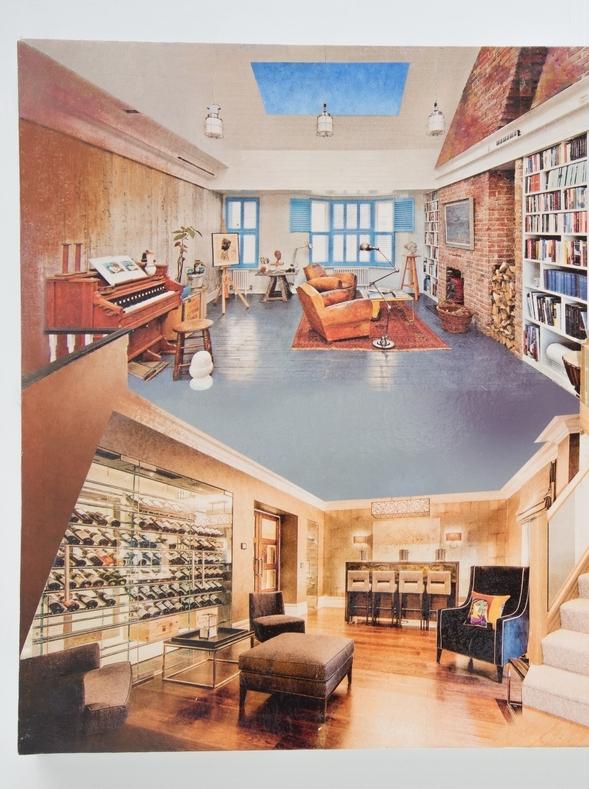
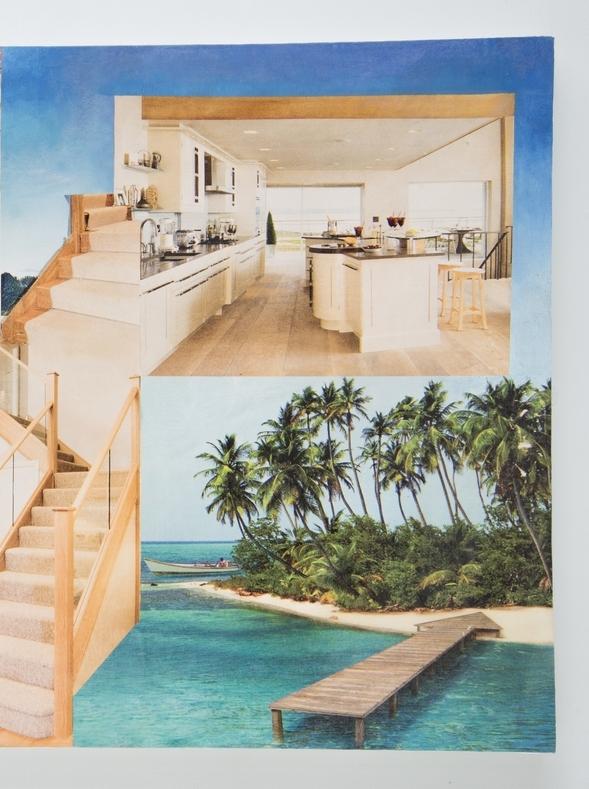
throughout the UK and the world: how do you consider the nature of your relationship with your audience? By the way, as the move of Art from traditional gallery spaces, to street and especially to online platforms — as Instagram — increases, how would in your opinion change the relationship with a globalised audience?
Brian Ord: One problem with the audience is to do with the occasional viewing of the work via jpg’s or tiffs. It is impossible to see the true nature of the finished pieces, & people often are under the impression that they are looking at paintings or photographs, rather than a combination of the two. This can lead to surprise or disappointment when the actual work is
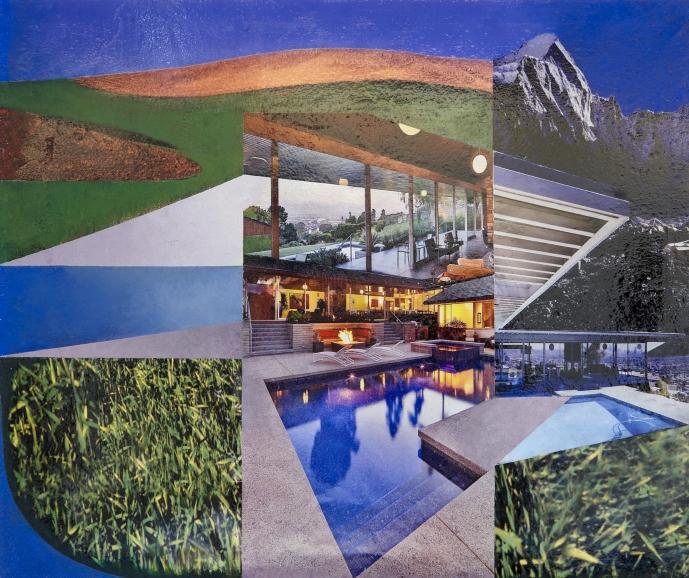
scape CONTEMPORARY ART REVIEW Land Special Edition
viewed. That is why I am extremely carefully to say that the finished pieces are ‘ Digital Print, Oil Paint & Resin, from Collage’. I must say I was pleasantly surprised by your own response, which was to actually rejoice in the combination of the two art forms being amalgamated. This is also why instagram, facebook or even a website, will never really do this work justice.
On a more optimistic digital note however, as I always take high resolution copies of the finished artwork, this means that they are always available as a high quality large digital print, for publication or mass production. Although these are by necessity totally different from the finished artworks, they provide a good facsimile in a different context. I see this a possible avenue for further development. Another avenue for audience exploration, is the possibility of exhibiting the collages alongside the final artworks, showing the difference, & also showing just how much they evolve & develop once they are on canvas. This idea excites me, & I hope to follow this up as an exhibition eventually.
We have really appreciated the multifaceted nature of your artistic research and before leaving this stimulating conversation we would like to thank you for chatting with us and for sharing your thoughts, Brian. What projects are you currently working on, and what are some of the ideas that you hope to explore in the future?
Brian Ord: I continue to do personal commissions for individuals, based on the
idea of ’Impossible Interiors’ of their own home. Individuals provide me with photographs of their own homes, & for a fee, I will creatively destroy these images via collage, & utilising these images, to produce a new impossible version of their own living environment. Although this can also be read as a criticism of their own lifestyle, people seem happy to participate in this. For my own reasons, I am also happy to continue to participate in this activity.
More & more ‘Impossible Interiors’ are becoming ‘ Impossible Exteriors’, or a combination of the two. ‘The impossible pursuit of domestic perfection, is also being enhanced by images of holidays &hotels, & similar pursuits of other futile utopias. I expect all of this to continue into other relevant territory, who knows what or where this will end up as. On a more formal level, I have thought about making the cinematographical influence more direct. Already the canvases echo the shape of the cinema & TV screens.
I have thought that in the future I may use actual screen ratios in manufacturing the canvases. Obviously in a miniature version where they relate to cinema, but maybe actual size, when they refer to TV, which is becoming more of an influence on the work as time goes by.
Brian Ord scape Land CONTEMPORARY ART REVIEW
LandEscape meets
Laura Ahola-Young
My work centers on my attempt to pay attention to signage in the natural world.
Through mark making, I am attempting to capture singular instances of temporary phenomenon, consciously and unconsciously transcribing patterns. I research and aesthetically study geography, plant physiology, mining and environmental issues in an attempt to mimic the structures and represent science through meticulous and labored marks. I have named my most recent collection of paintings Prodromes in relation to an internal, structural and organizational system of signage and warnings. Through paint, I am attempting to capture these instances of signs as symptoms: fleeting, a speck, a circumstance, a neural, biological, philosophical, sensory occasion.
Metaphors and images cease to exist to allow the possibility of change and new discoveries. Parts of images are sacrificed to the whole. It is this - what is possible and what must be destroyed- that has led me to research visually and intellectually this phenomenon in the natural world. Cells and stars, the miniscule to vast, must experience destruction for life to exist as we know it. My work reflects my desire for absolutes and claims none. For me, knowledge is always asking additional questions.
When Painting, I am actively creating while simultaneously destroying. I thoroughly develop meanings and imagery in paintings and then cover and rework with glazes, scraping and mark making. What remains the same throughout the painting process is the structure they are forced upon. The structure is both paper and an open narrative. I leave evidence of my search for a completed work – enough of a layer that I begin to believe in a structure’s identity and memory, perhaps its own kind of consciousness.
The paintings have a history, casualties and moments of clarity.
Hello Laura and welcome to LandEscape. Before starting to elaborate about your artistic production and we would like to invite our readers to visit https://lauraaholayoung.com in
order to get a wide idea about your multifaceted artistic production, and we would start this interview with a couple of questions about your background. You have a solid formal training, and after having earned your BFA from the Minneapolis College of Art and Design, you nurtured your education with an MFA, that you received from San Jose State University: how did
scape Land CONTEMPORARY ART
An interview by Josh Ryder, curator and Melissa C. Hilborn, curator landescape@europe.com
REVIEW
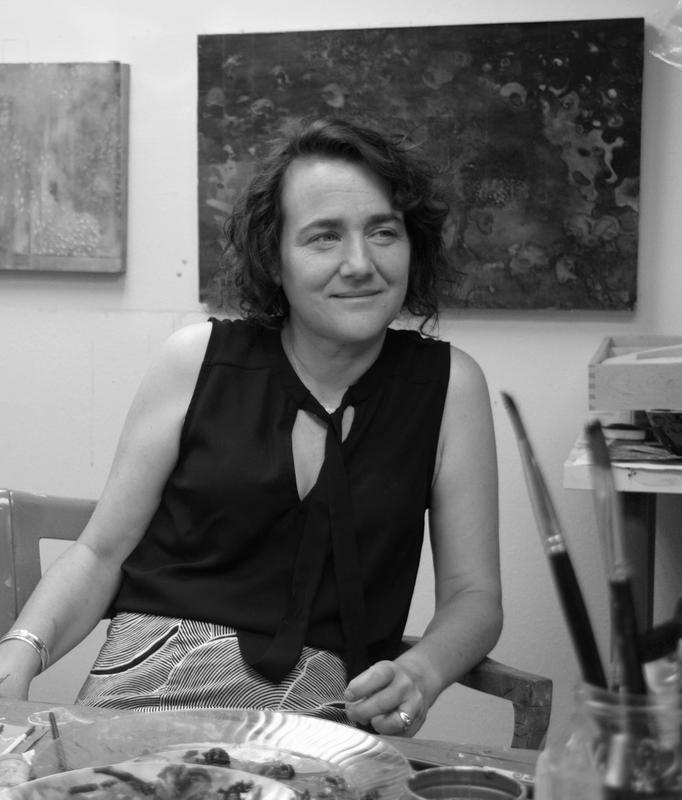
those formative years influence your evolution as an artist? Moreover, how does your cultural substratum as well as you work as an Associate Professor of Art at Idaho State University, direct the trajectory of your current artistic research?
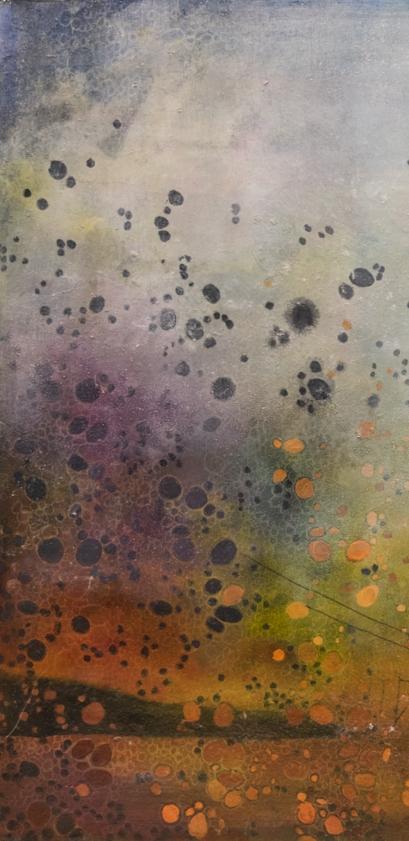
Laura Ahola-Young: I inherited my value for education from my Finnish American roots. I recognize the privilege I have had to study art in both my degree programs. My BFA taught me to take risks and hone my skills. My MFA emphasized art theory and immersed me in the world of contemporary art. I am most appreciative that I still have many of my former professors, now mentors, in my life. All people can make art, but I do not think it is a life for everyone. Being an artist takes tremendous amounts of sacrifice, self discipline and fortitude. Actively going to the studio everyday to produce and also face rejection requires stamina and focus. I am not sure how I could continue to be an artist without having the continued support of my mentors.
As I talk and write about my work it often surprises others that I consistently avoid absolutes. I am, however, unwavering in my belief that the arts are paramount in challenging structures and ideas in a democratic society and it is critical for artists to know our own history. We must understand the barriers that those who came before us broke down, which barriers still exist and what new ones are being constructed. I am a female painter, a mother and also a professor- something that would not have been common just fifty years ago. Because I believe in the value of education, and the arts, teaching is as essential to me as an artist as the making of art itself. I insist my students engage in, understand and continue to investigate the theoretical, philosophical and political contexts we are surrounded with and create in. If we as artists do not understand the value of what we do, who will?
Special Edition scape CONTEMPORARY ART REVIEW Land
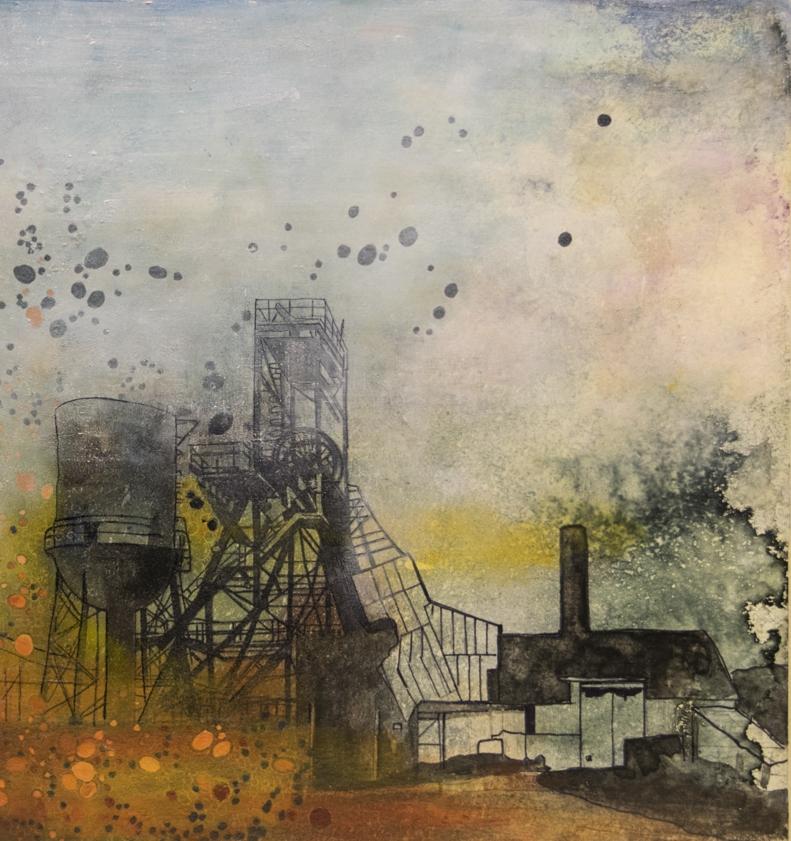
Laura Ahola-Young scape Land CONTEMPORARY ART REVIEW Pioneer
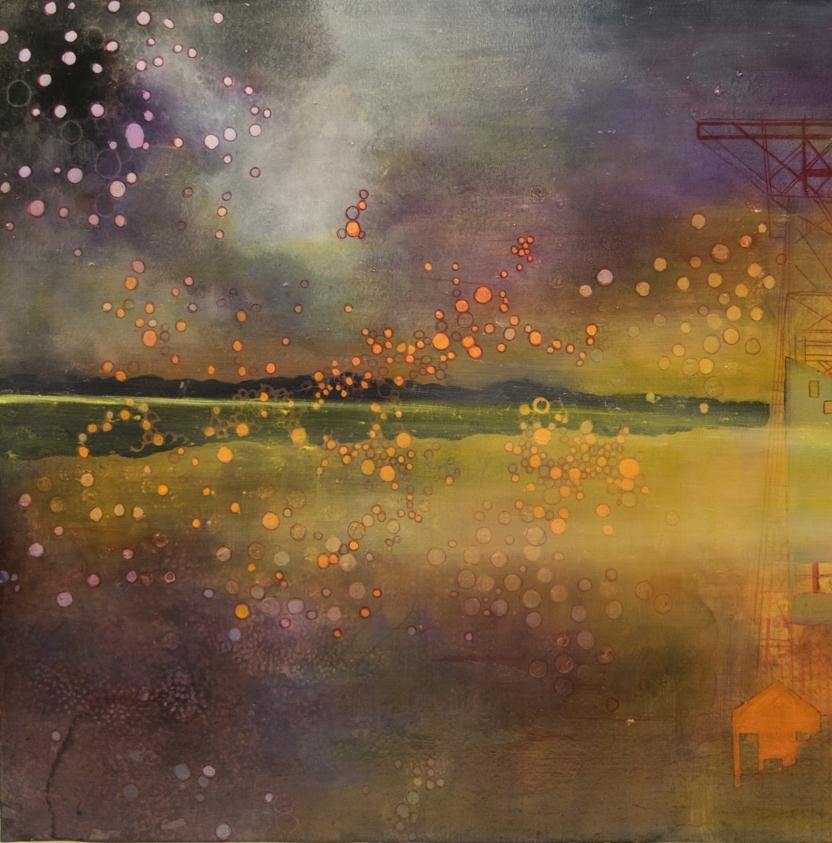
scape CONTEMPORARY ART REVIEW Land Special Edition
Zenith
The body of works that we have selected for this special edition of LandEscape and that our readers have already started to get to know in the introductory pages of this article has at once captured our attention for the way your insightful exploration of the theme of signage in the natural world provides the viewers with such a multilayered visual experience: when walking our readers through your usual setup and process, would you tell us how do you develop the initial idea for your artworks?
Laura Ahola-Young: I have a dedicated studio practice and typically work on many pieces at once, usually with the intention to have a cohesive theme or series. I never really have “ideas”, and I rarely have a straight forward vision for any one piece. I have what I consider impulses- I am drawn towards research and asking questions about the many things I do not understand about the world. I collect information and images, read and ask more questions. I do not always act on all my impulses and I spend a tremendous amount of time considering if the chosen subject matter is the direction I want to go. If the impulse leads me to discoveries and remains consistent (often to something akin to an obsession) then I start drawing or painting. I create layers of images and glazing. I use watercolor, graphite, ink and oil paint.
Often certain works begin to come together and others become long struggles. I am never hesitant or afraid to destroy and image and rework it. Many of my paintings take months and sometimes an entire year of work.
We have really appreciated the vibrancy of thoughtful nuances that mark out your artworks, and we like the way they create tension and dynamics in Pioneer and in Zenith: how did you come about settling on your color palette? And how does your own psychological make-up determine the nuances of tones that you decide
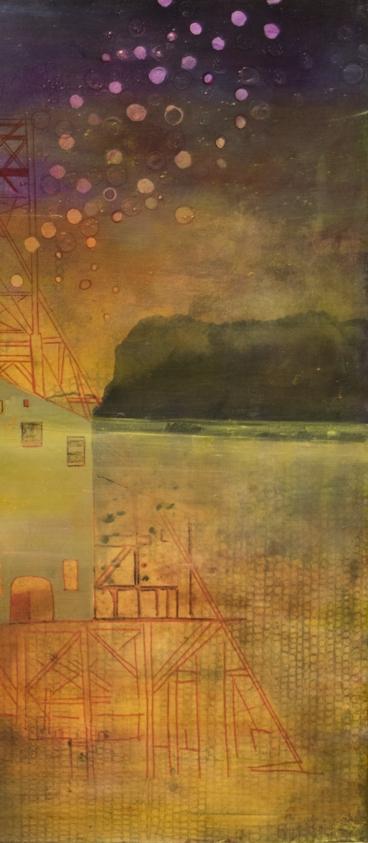
CONTEMPORARY ART REVIEW
Laura Ahola-Young scape Land
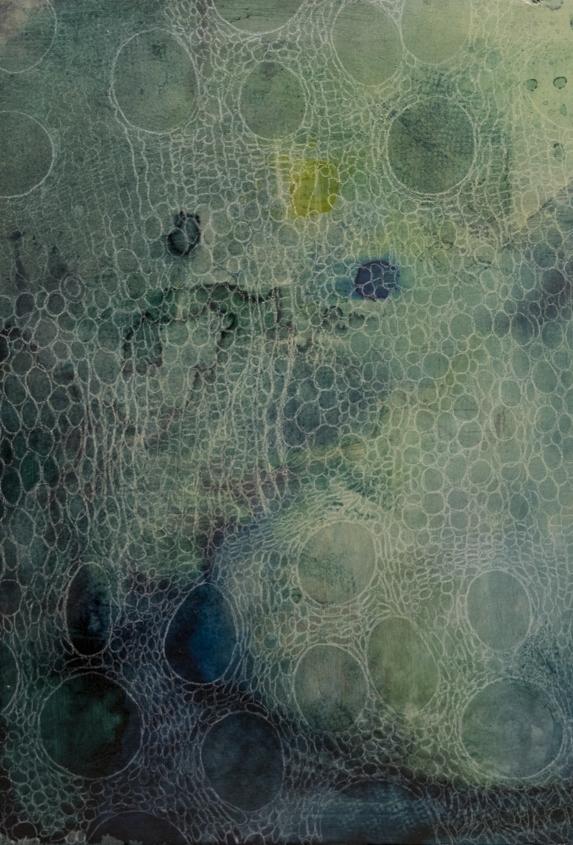

Burn
to include in your works in order to provide the viewers with such immersive visual experience?

Laura Ahola-Young: I am honored that I am being asked about nuances- I often tell students to
nurse the nuances in their work. I perceive the world as ambiguous and paying attention to nuances and details around you is often where you find life- small, quiet moments or subtle changes.
scape CONTEMPORARY ART REVIEW Land Special Edition
My family is from Northern Minnesota where winters can be nine months long. Ice, grey skies and open bodies of water are the landscape of my youth and this land heavily influences my aesthetic. I paint with colors pulled from my
memories. In both Pioneer and Zenith I used iron ore that I collected from the historic mining sites of my hometown. Currently this small town is suffering economically and there is a possibility of developing a copper mine in the area. There is
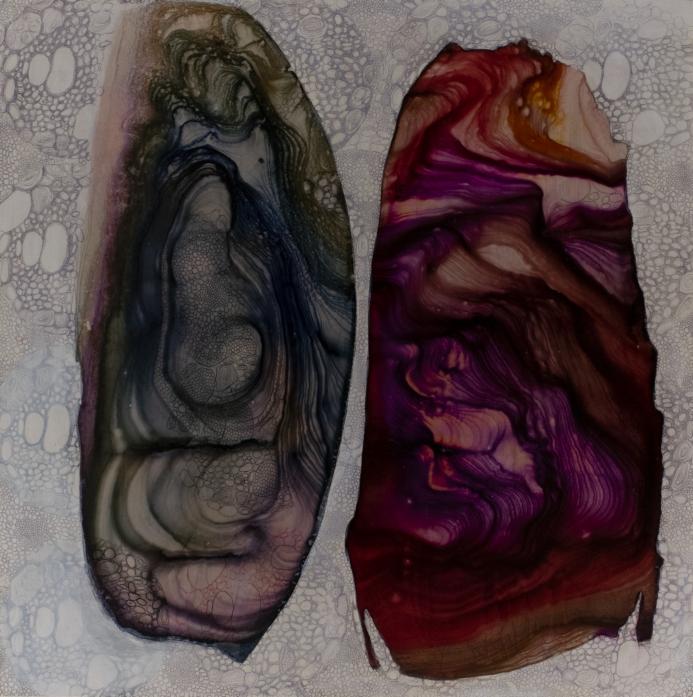
CONTEMPORARY ART REVIEW
Laura Ahola-Young scape Land
Collide

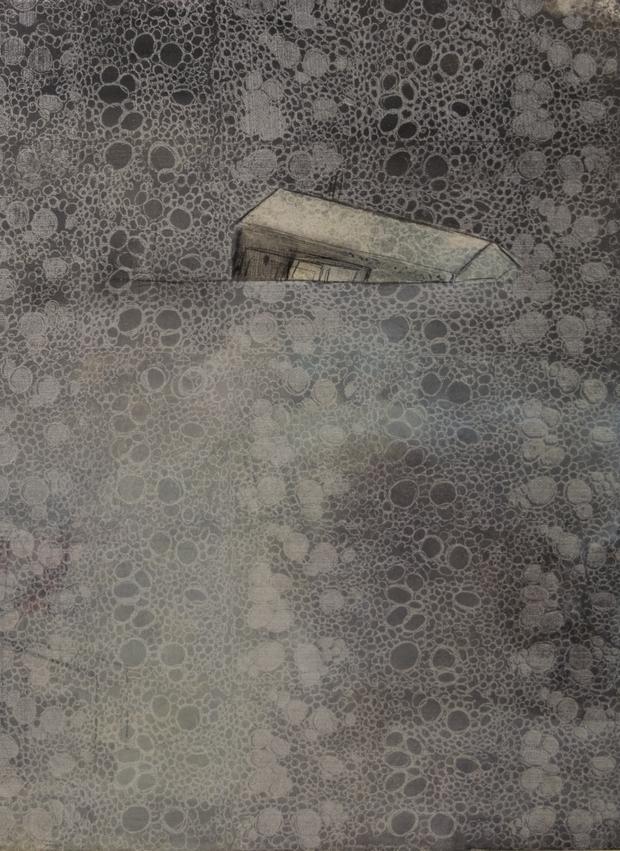
Iron
tension in the community over its own future. I am an environmentalist and I fully intended to create paintings that addressed the impact of acid mine drainage from the proposed copper mine in the Boundary Waters Canoe Area Wilderness (which borders the town). After delving deep into the mining history of my homeland and hearing stories and personal narratives about the mines, I found myself in my studio (back in Idaho) thinking about the danger of nostalgia. A faction of America has embraced our current president’s motto “make America great again”.
This type of longing for the past amplifies our own disconnectedness and fear of change. Rather than addressing the environmental impacts of copper mining, these two paintings became an attempt at portraying an illusion to a false past and to convey the collision of desire, memory and reality. Perhaps it is the complicated and conflicting psychology of my hometown, rather than my own, that I was able to embed in these works. There exists a space between despair and desire that I think I discovered in these worksand perhaps it is that, my felt discovery, that creates an atmosphere that invites the viewer in.
As you have remarked in your artist's statement, when painting, you are actively creating while simultaneously destroying, and you thoroughly develop meanings and imagery in paintings and then cover and rework with glazes, scraping and mark making. New York City based artist Lydia Dona once stated that in order to make art today one has to reevaluate the conceptual language behind the mechanism of art making itself: do you create your works gesturally, instinctively? Or do you methodically transpose geometric schemes? In particular, how do you consider the role of chance playing within your creative process?
Laura Ahola-Young: Years ago I was a painterly painter- able to produce gestural work. I immensely still love and I am attracted to gestural
painting in other artist’s work. I find now that I am more and more a meticulous, detailed mark maker. I cannot remember when or why I had this

Special Edition scape CONTEMPORARY ART REVIEW Land
transformation. The laborious process I engage in is a way for me to become so intimate with an image that it becomes part of my being. The
paradox here is that the more intimate I am with a work, the easier it is for me to let it go and exist on its own. I spend hours upon hours mark
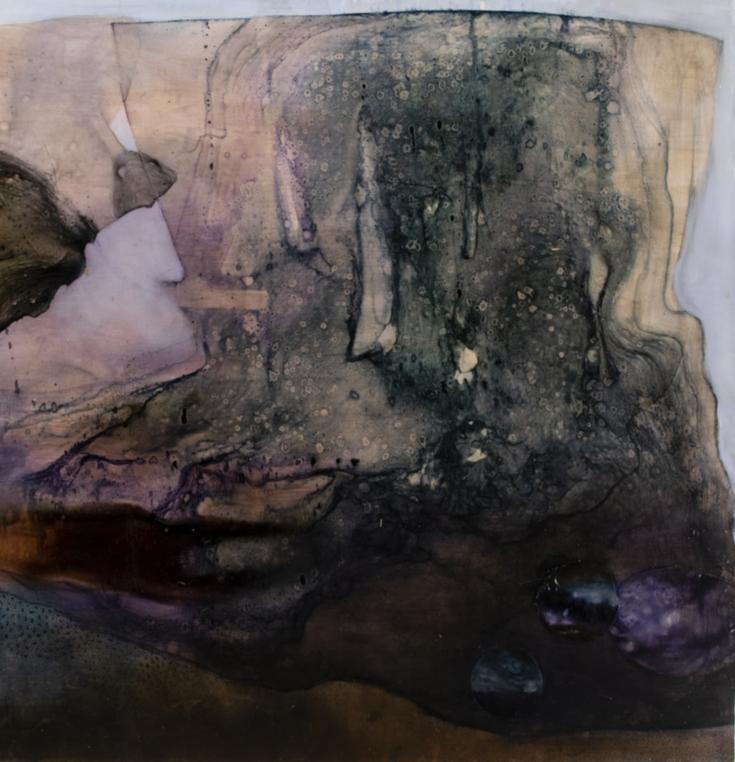
Laura Ahola-Young scape Land CONTEMPORARY ART REVIEW
Collision
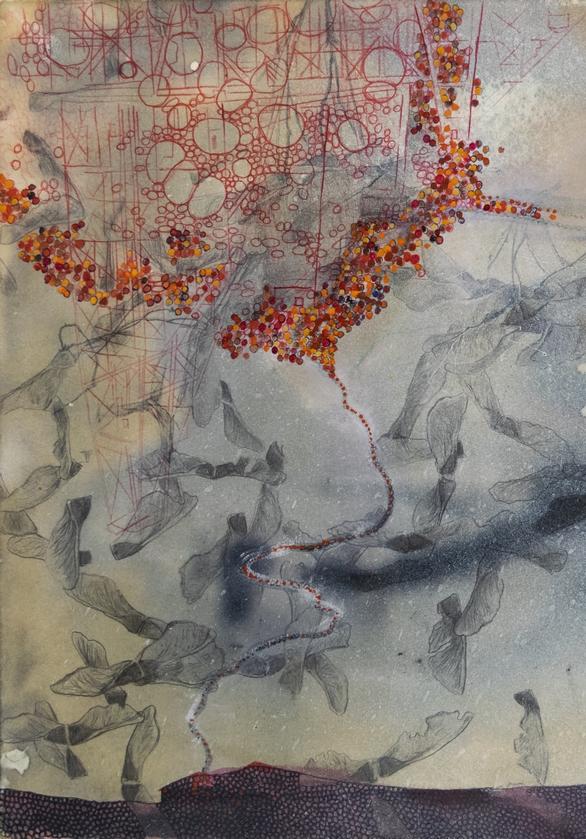
 Copper
Copper
Dock
making, changing, erasing, painting over and reworking my pieces. I think I try to impose a history on a painting, I try to suggest time
unfolding while also stopping. I do not consider my works as expressive of any aspect of my being, they are public and meant to be so. Chance is a
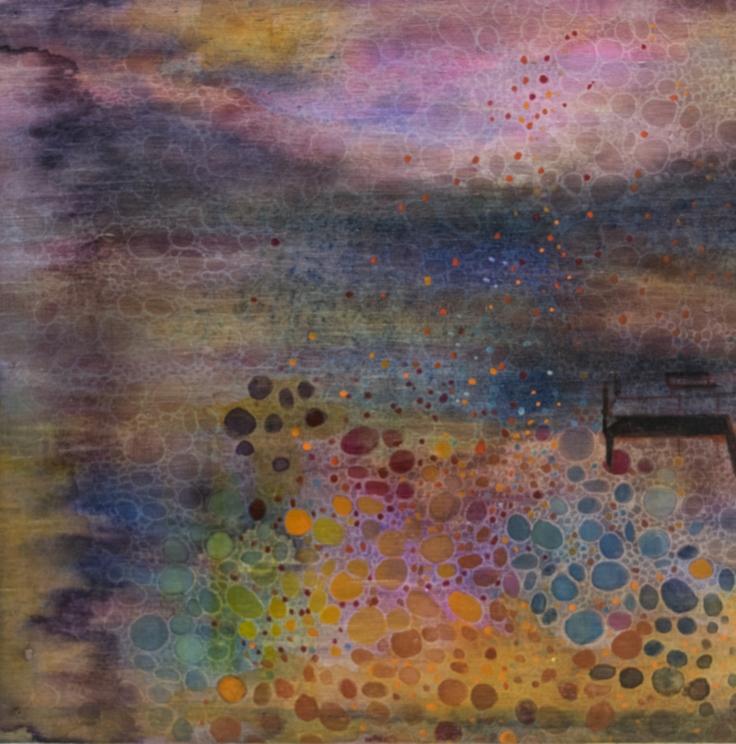
scape CONTEMPORARY ART REVIEW Land Special Edition
tricky thing and every painter needs and begs for a happy accident. I seem to never have them, or at least happy accidents.

You are a versatile artist and an important aspect of your artistic research is centered on the study of geography, plant physiology, mining and environment, and we really appreciate your successful attempt to mimic their structures, to represent science through meticulous and labored marks. How do you consider the relationship between artistic research and scientific method? In particular, how does in your opinion art could be used to explain science and vice versa?
Laura Ahola-Young: I am curious and consider myself a long learner. When I undertook my self study of geology, I was shocked to find that so many questions that I had about the universe had ansers actually found in the rocks; answers I had looked for in humanites, not science. I hold scientists in awe. When I initially read science, I read it like poetry. It takes me a great deal of time to understand science texts and I never understand the science I read quickly. Many scientists agree that they need help communicating their research. I think artists can step in here. As for science helping art, I am not sure but I am fascinated with the fact that Neuroscience is able to help us understand how we see and process information. I think both fields have a tragic disconnect with each other in contemporary society. Scientists and artists both see beauty, tragedy and change as fundamental to our lives. Both professions test assumptions, seek knowledge and tenaciously cross new frontiers.
With their unique visual identity, your artworks feature such a powerful combination between between abstract and representational visual qualities, to challenge the viewers' perceptual parameters: we daresay that your artistic practice seems to aim to look inside of what appear to be seen, rather than its surface, providing the spectatorship with freedom to realize their own perception. Austrian Art historian Ernst Gombrich once remarked the
Laura Ahola-Young scape Land CONTEMPORARY ART REVIEW

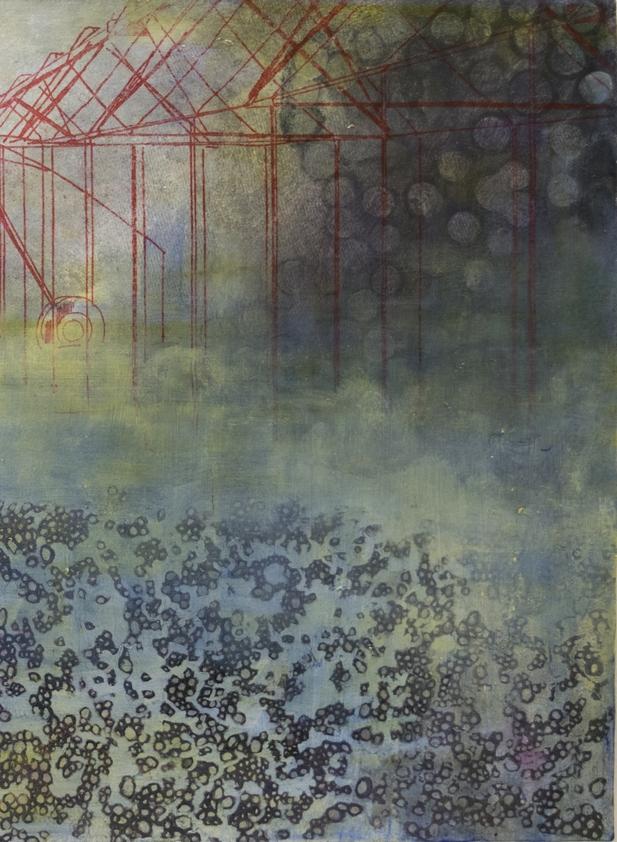
Irrigation
importance of providing a space for the viewers to project onto, so that they can actively participate in the creation of the illusion: how important is for you to trigger the viewers'
imagination in order to address them to elaborate personal interpretations? In particular, how open would you like your works to be understood?
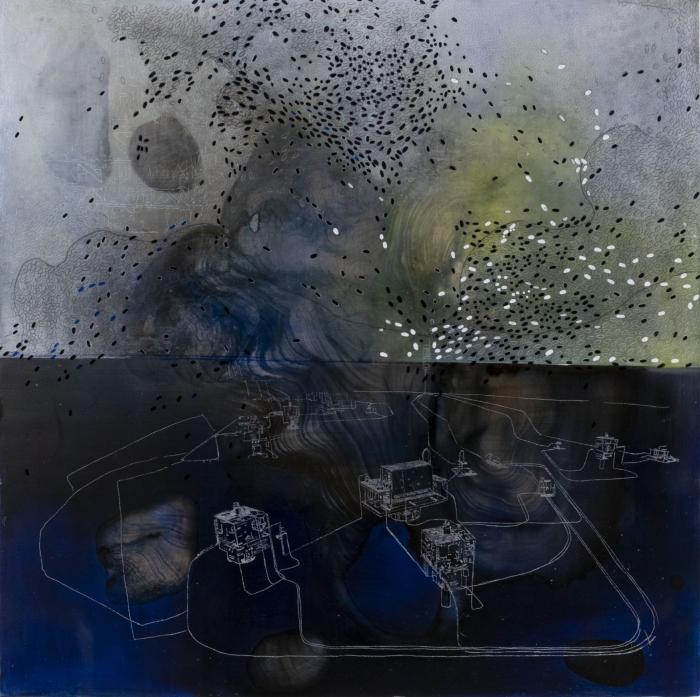
Land scape CONTEMPORARY ART REVIEW Special Edition
OceanFloor
Stones
Laura Ahola-Young: As I get older, the viewers experience of my paintings has become more and more important. I have, after all, chosen to communicate visually. The paintings must be
open for viewers to experience them. Images become active metaphors in that they carry and convey multiple possibilities. Images also carry enormous cultural structures. It is my hope that
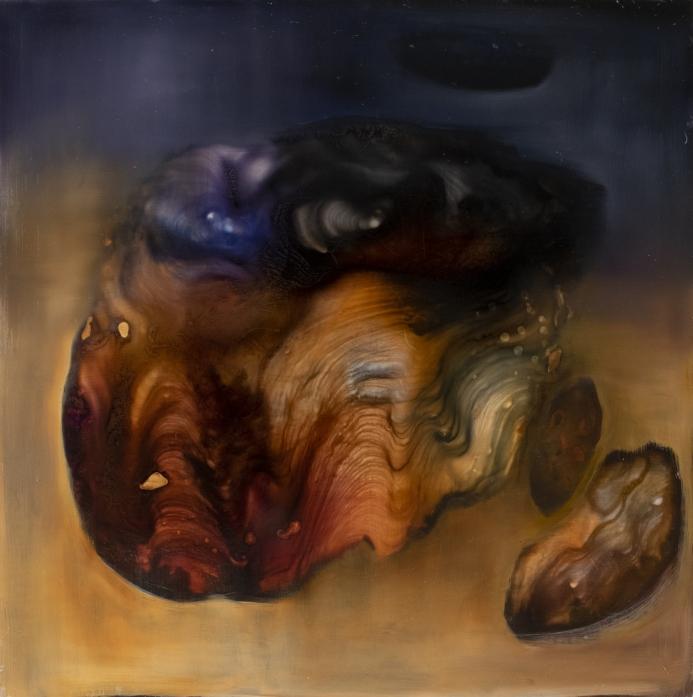
scape Land CONTEMPORARY ART REVIEW
Laura Ahola-Young
my viewers can question, challenge and engage with my paintings on their own without trying to understand me- the artist. I think in our overstimulated, digital, imagery filled world- it has become difficult to trust imagery.
When I look at works of other artists, I always give the artist the benefit of the doubt. I trust the artist. Art, (and in my world painting) can unfold itself in meaning many times over. I aim for this- that others can spend time with my work and that the works slowly reveal themselves allowing the viewer to have the same kind of intimacy with my painting that I had making it.
We have really appreciated the way you sapiently balance between reminders to reality and unique dreamlike visual atmosphere that provides your artworks with such recognizable identity: how do you consider the relationship between the real and the imagined playing within your artistic practice?

Laura Ahola-Young: I think that I am always trying to forge new relationships in my work. Every day in my studio I tell myself I have no answers- reality and meaning are fleeting. The act of creating to me, if anything, is trying to capture those fleeting instances and metaphors. I have only questions. With this mindset, and way of creating, I cannot separate between the real and the imagined. I do recognize that all imagery is grounded in a lived experience.
I also must admit that I have an overactive imagination- I am a worrier and I can create scenarios in my mind that, unfortunately, affect my behavior and how I make decisions. I suppose it would benefit me to separate the relationship between the real and the imagined, but the anxiety and trends of the current political climate in America make it impossible for me to do so.
Mexican artist Gabriel Orozco once stated, "artist's role differs depending on which part of the world they’re in":
scape CONTEMPORARY ART REVIEW Special Edition Land
does your artistic research respond to a particular cultural moment? In particular, do you think that
artists could raise awareness to an ever growing audience on topical themes, as environmental

Laura Ahola-Young scape Land CONTEMPORARY ART REVIEW
issues, in our media driven and globalized society?
Laura Ahola-Young: Students often ask me what is the point of making art anyway? I respond to this
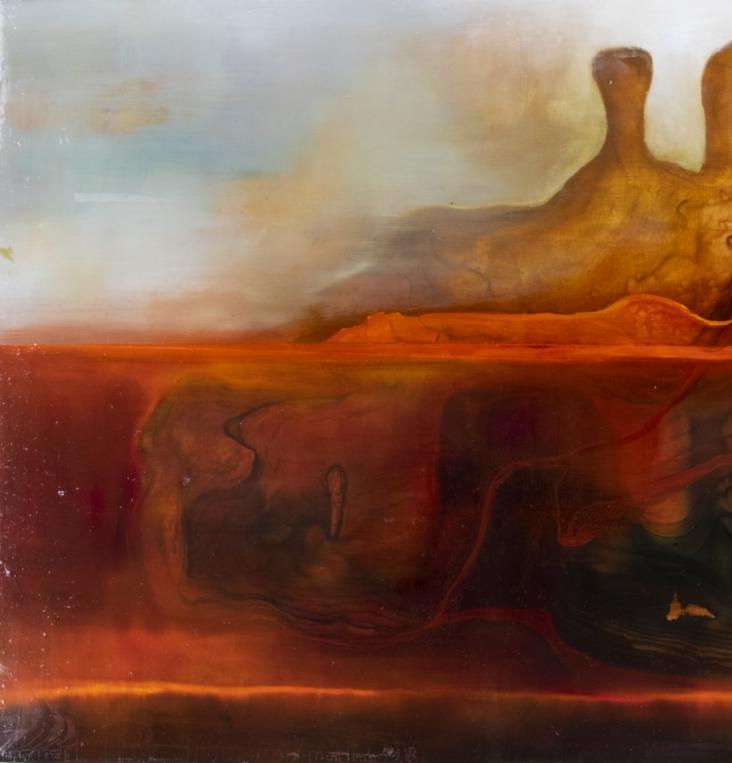
Land scape CONTEMPORARY ART REVIEW Special Edition
Red
question by reminding students that if we wake up everyday asking the question of why wake up in the
morning – we automatically are engaged in trying to make our individual life’s have purpose. The same happens when we make a painting, it is a vital step in creating.
We can choose to believe we can make a difference in both the ways in which we live our lives and in what we create. I choose to believe. I pay close attention to the world around me, from politics to science, so that I am not only prepared to respond in my work to issues but so I can differentiate in what demands my attention as an artist. The fact that we are a media driven and globalized world makes it necessary to do qualitative research, think and analyze critically and search for facts.
Currently, climate change is the focus of my work. The more I uncover about geological time and weather patterns I am not sure how I could stop myself from responding.
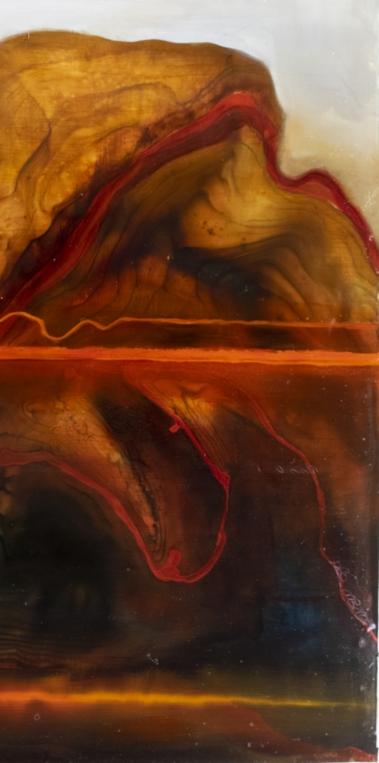
Over the years your artworks have been showcased on several occasions, including your recent show at the Cascade Gallery. French artist Edgar Degas, once said that “Art is not what you see, but what you make others see": how do you consider the nature of your relationship with your audience? By the way, as the move of Art from traditional gallery spaces, to street and especially to online platforms — as Instagram — increases, how would this in your opinion change the relationship with a globalized audience?
Laura Ahola-Young: I am hopeful that because we have the capacity for a globalized audience then we also have the possibility of a plethora of diverse, global artists that have opportunities to share their work. Art provides unparalled venues to understand each other, to hear and appreciate other ways of being and interacting with meaning. Having said that, it is pertinent to recognize that while many of us have access to digital venues, there still exists wordwide ecomomic disparity. Access to information is not a world wide phenomenon. Because of this, at this time I do not think the art market or the ways we view art has or
Laura Ahola-Young scape Land CONTEMPORARY ART REVIEW
will change. There is abundant unchartered territory – both in access and in creating digitally democraticed work. When this digital landscape changes, I do think artists will be at the front and center.
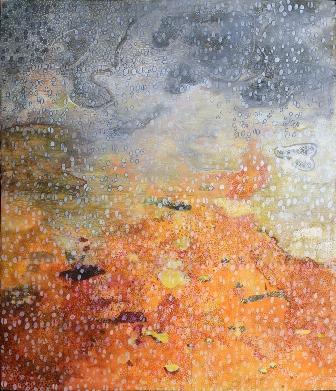
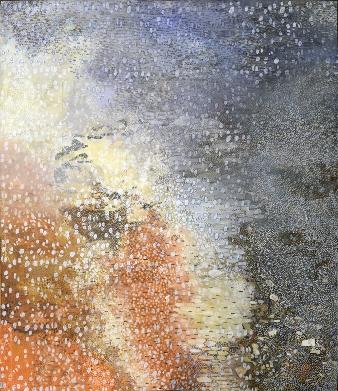
We have really appreciated the multifaceted nature of your artistic research and before leaving this stimulating conversation we would like to thank you for chatting with us and for sharing your thoughts, Laura. What projects are you currently working on, and what are some of the ideas that you hope to explore in the future?
Laura Ahola-Young: I am still researching and studying geology, and I think I will for the rest of my life. I am seeking new ways to address environmental as well as political issues. I am specifically looking at plastics and waste
products. I am also trying to grasp the concept of time in my work. I was born in the 1970’s and I am researching that decade as a marker for change, and/or lack of change. Currently my studio is filled with images and patterns from the 70’s. I am visually looking at and drawing some of the plastic and polyester textiles from that era. In addition, I have some ideas about making work about the food industry and sugar. I have been a migrainer for most of my life and have finally been able to manage my pain through food and changing the way I eat. Although my work is not biographical, the auras I experience with migraine have influenced some of my aesthetic (as many of my works have been painted while I have aura’s and migraines.) I am reading a lot of information about food, health and specifically the diabetes epdemic in America. I have no idea what this body of work may look like, but I do think the research will eventually take over my studio work.
scape CONTEMPORARY ART REVIEW Land Special Edition
Miners Dry Miners Dry 2

Laura Ahola-Young scape Land CONTEMPORARY ART REVIEW
Point
Listening
LandEscape meets
Dana Taylor
The multidisciplinary artist, Dana Taylor, documents “Sleepy People” scattered throughout urban spaces.
(*Some are Homeless others are plain tired...)
The exhibition showcases selected photos from a collection of over 300 pictures (to date)
All images are 100% authentic and not staged!
Each image is printed on a white pillowcase and hanged on clotheslines with wooden pegs.
This unique and playful display, creates a fresh perspective and a profound experience.
It evokes the viewer to contemplate on its own existence, and suggests that anyone at any time may find themselves on the edge and on the street, Sleeping Rough.
I was born and raised in Tel Aviv, which is a vibrant, colourful, hectic and exciting city. I was lucky enough to have an exceptional upbringing, which was based on free thinking, unconditional love and acceptance of self and others. Both my parents come from show business (my father is an actor and a director and my mother was a producer) so I spent most of my childhood behind the scenes and on center stage of countless artistic affairs. I was constantly exposed to a variety of art forms and was surrounded by great minds, extraordinary talents, passionate and
exceptional individuals who spoke their minds freely, and confidently exposed their souls, so from a very young age I understood and appreciated the importance and power of creativity, diversity, critical thinking, selfreflecting, freedom of expression etc... and so I chose to walk in the same path, while skipping and balancing both intellectual and emotional aspects.
The real beauty in cities and urban spaces, is that so much is going on simultaneously! so I’m always aware and alert. I never plan ahead, I
scape Land CONTEMPORARY ART REVIEW
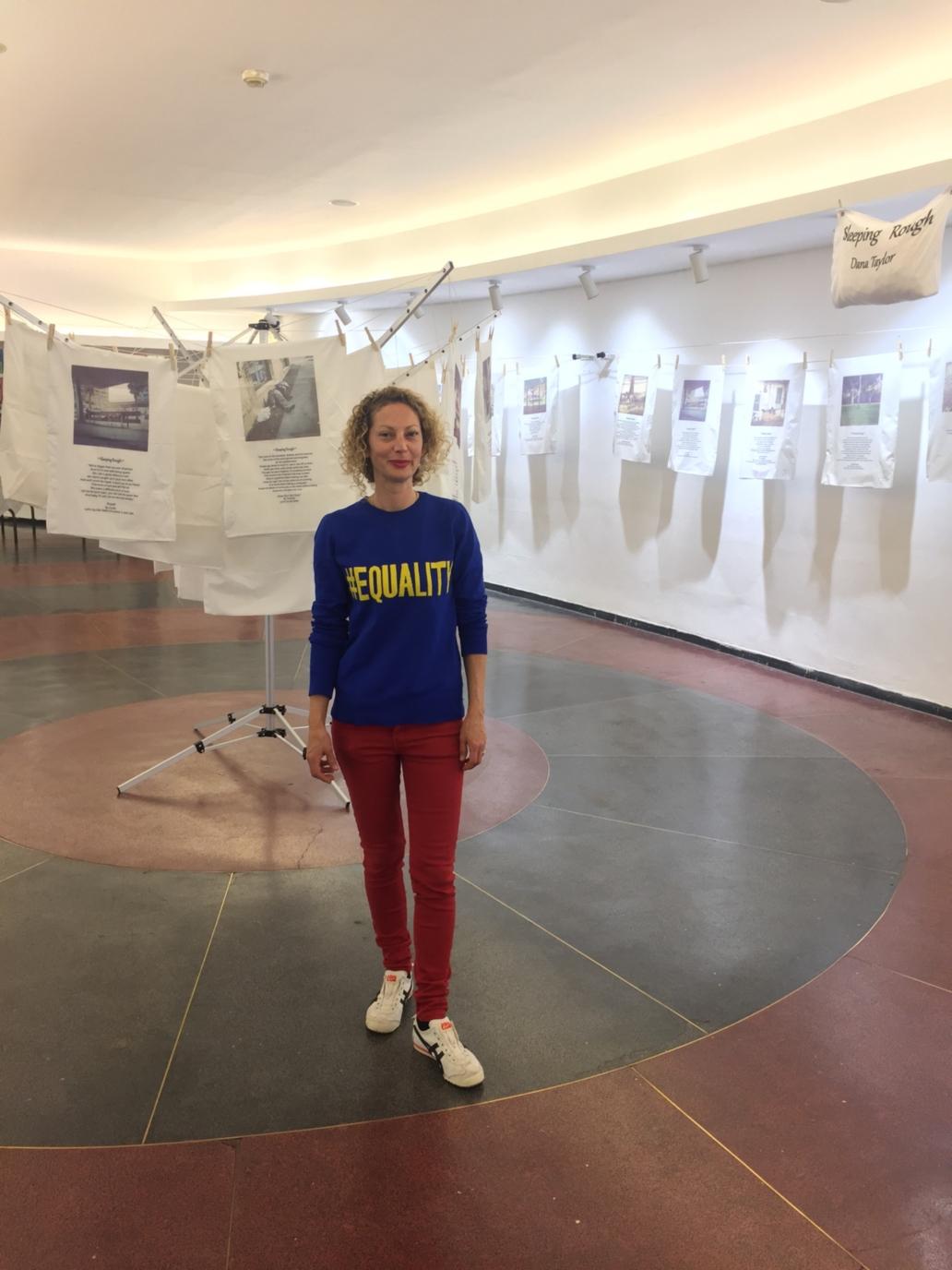
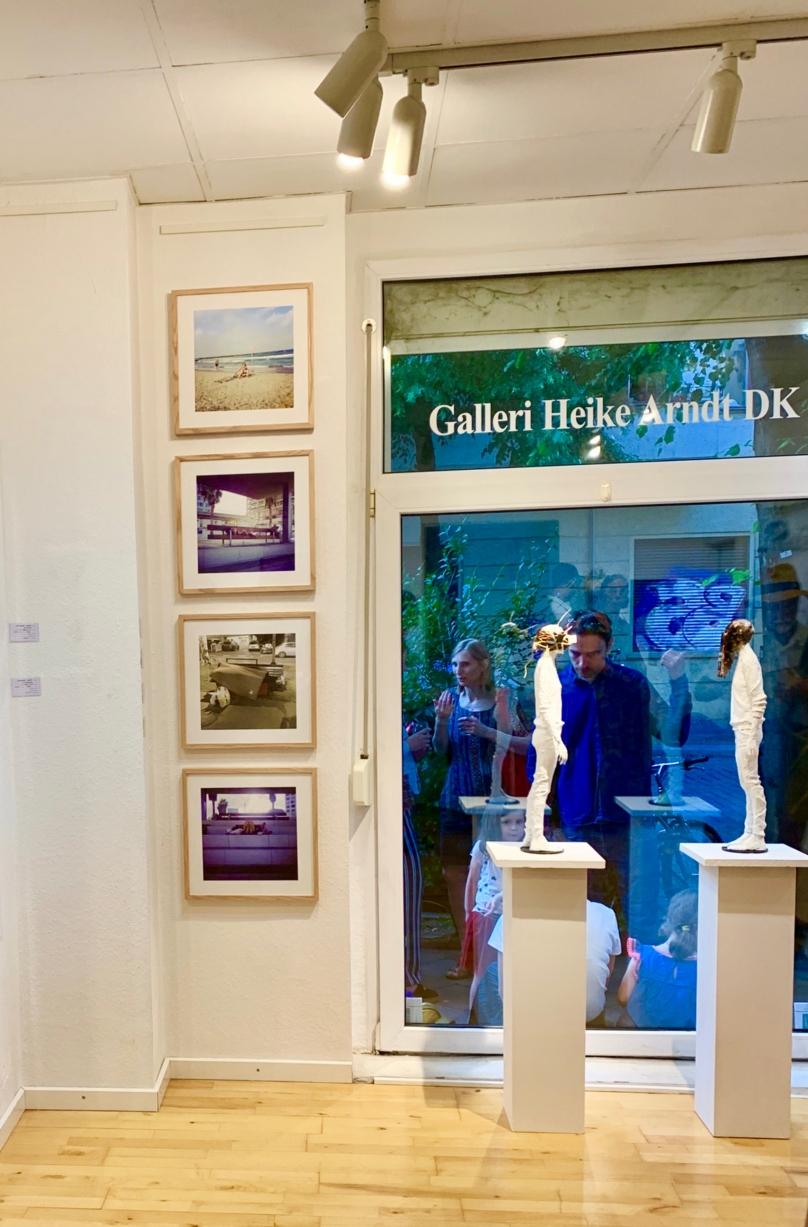
simply walk on the streets from A to B, and those images randomly jump right in front of me. (Well, I've been doing it for quite some time, so I guess my brain is well trained:)) I know some photographers tend to wait for the
perfect moment in a designated location, and they choreograph and control every aspect in their work, but I like the dynamic and authenticity side of it. So Iliterally walk through the scene, take a couple of snaps then
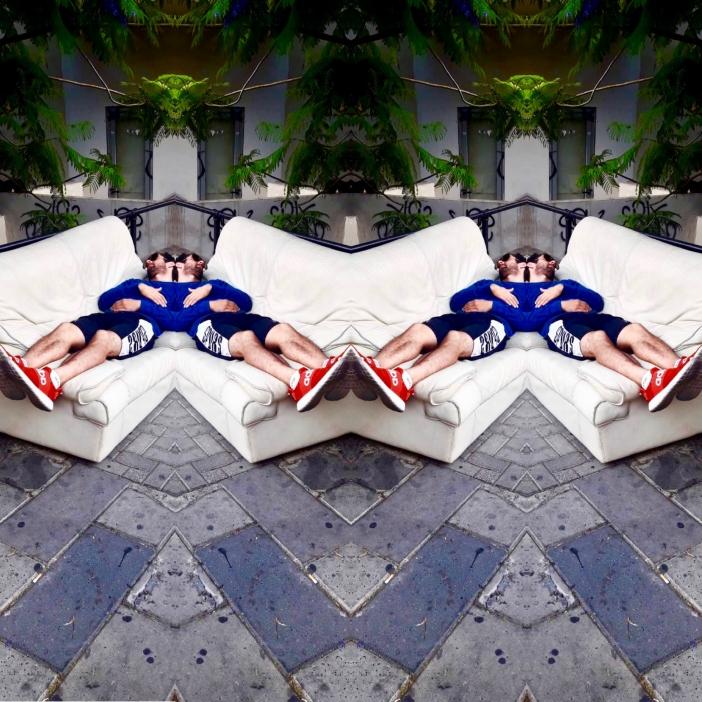
CONTEMPORARY ART REVIEW
Brigitte Dietz scape Land
continue to my destination. It's crucial for me not to disturb that peaceful figure that by chance turns into my object. I truly respect one's privacy, and even though they choose to practice it at a public place, in my opinion,
sleeping is still the ultimate act of intimacy, so I tend to focus on the scene itself rather than on the face. When I come home, I play with the images, then associative thoughts and creativity kick in, and that’s when a new story comes to life.
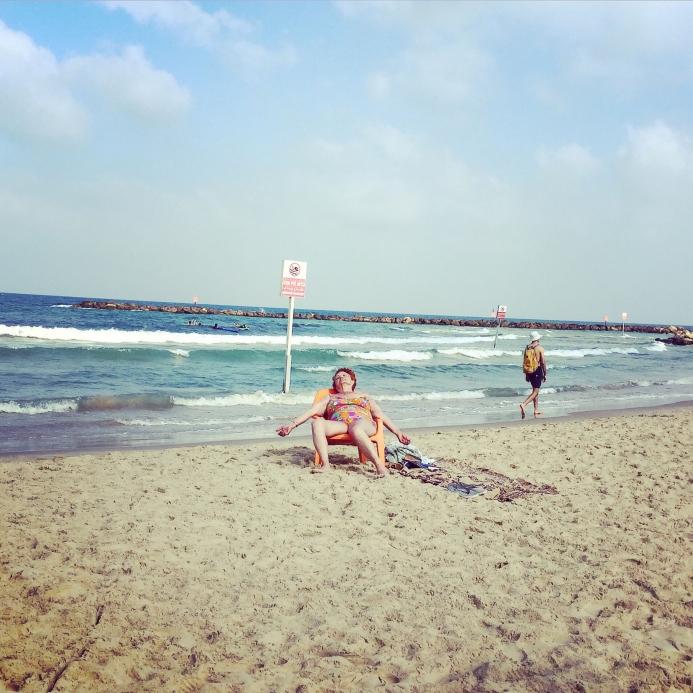
Special Edition scape CONTEMPORARY ART REVIEW Land
Over the years I've had various encounters with people who were brought to their knees by life circumstances and unfortunate events. I've met some really interesting people who happens to be homeless. Their reasons are varying, some
have reached this point by the "grace" of modern society, others by their own free will, some are alcoholics or drag addict and others suffer from mental disorders. Not only that their life stories are captivating and compelling,
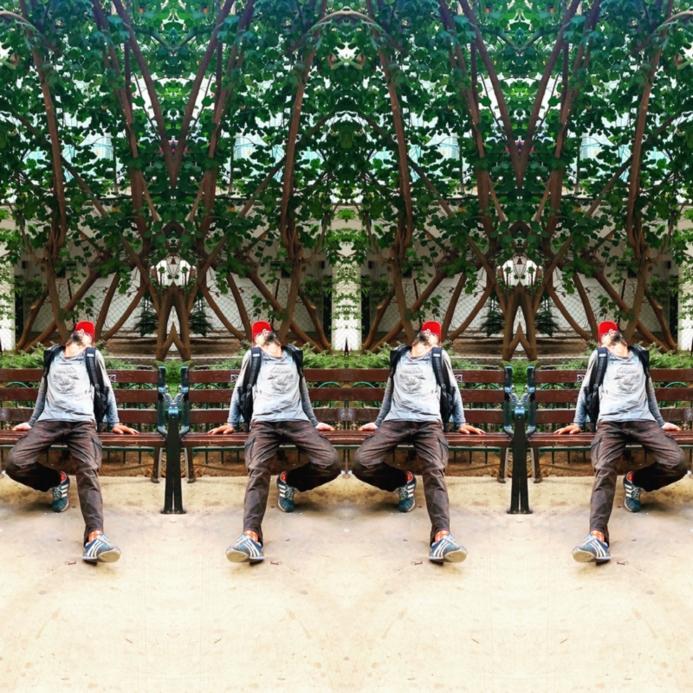
CONTEMPORARY ART REVIEW
Brigitte Dietz scape Land
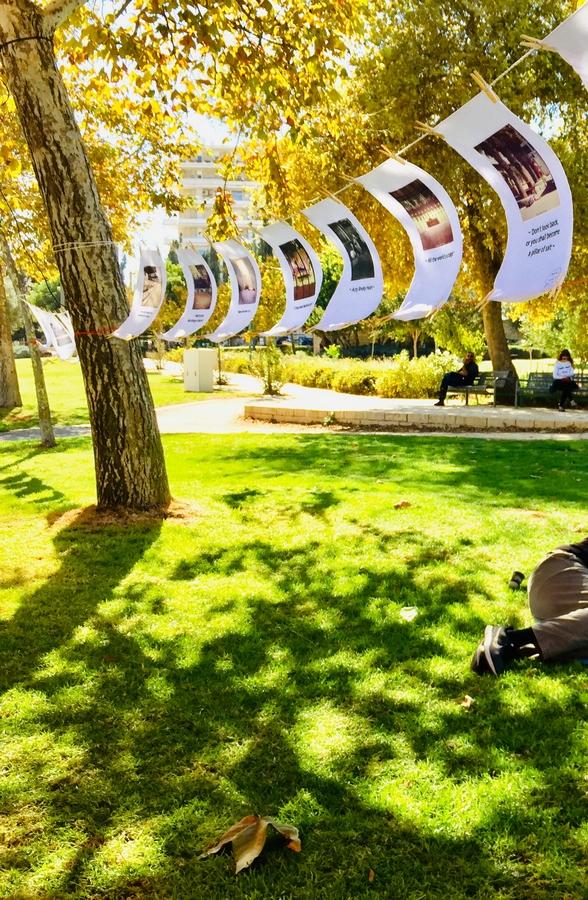
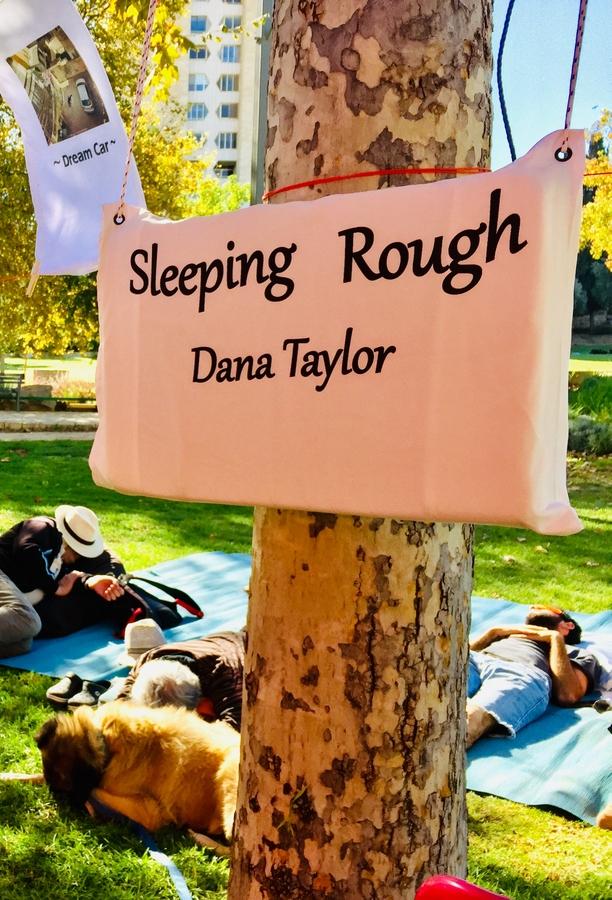
they actually put the listener/viewer in a humbled and thankful position. Unfortunately, even though it's there, literally right at our door step, the reality is that the majority of people tend to ignore
them. (some are afraid, others can't be bothered) But what people fail to comprehend is that anyone at any given time may find themselves on the edge and on the street Sleeping Rough. It’s terribly sad to see what
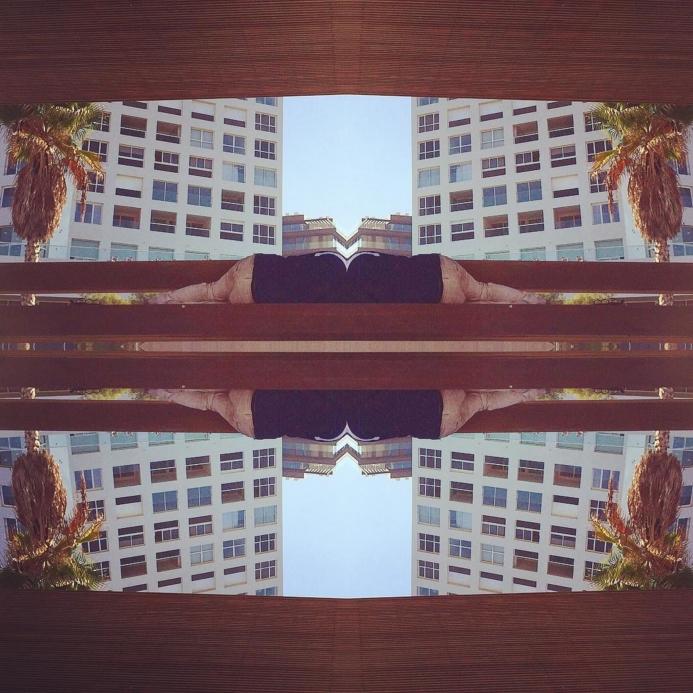
scape CONTEMPORARY ART REVIEW Land Special Edition
have become of us as individuals as well as a community. It’s seems as if humanity has lost some of its most important values. At the end of the day, life can be harsh, and everyone needs help from time to time.
Therefore, we shouldn't turn a blind eye nor allow our fellow brothers and sisters to become transparent. We need to remember that people are people! therefore everyone deserves to be seen and we're all entitled to compassion and a
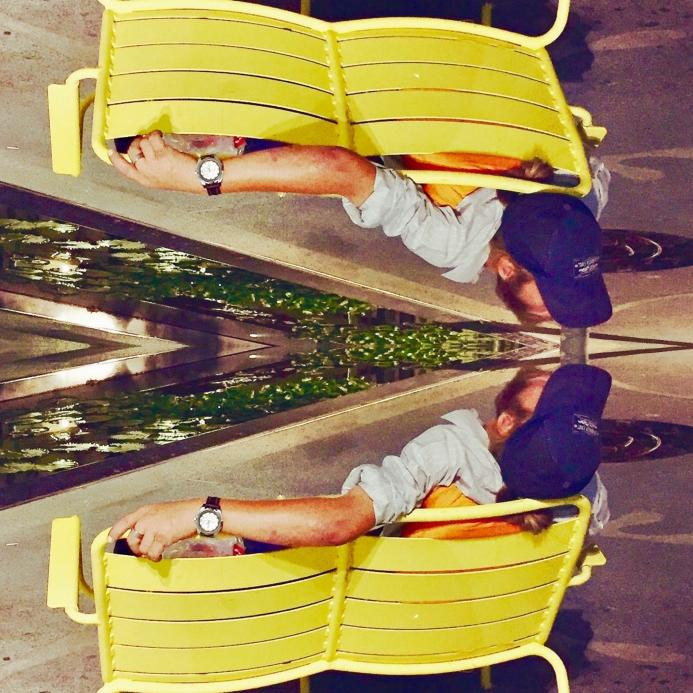
CONTEMPORARY ART REVIEW
Brigitte Dietz scape Land
fair chance to live a reasonable and respectable life. The truth is they are everywhere, all around the globe, and by the look of it, they’re not going anywhere, so for me, this subject is worth exploring andexposing.
Although my Sleeping Rough exhibition puts a spotlight on Homelessness, it actually focuses on the sleeping aspect rather than the reasons why and how those sleepy members of society end up where they are. So if you look closely,
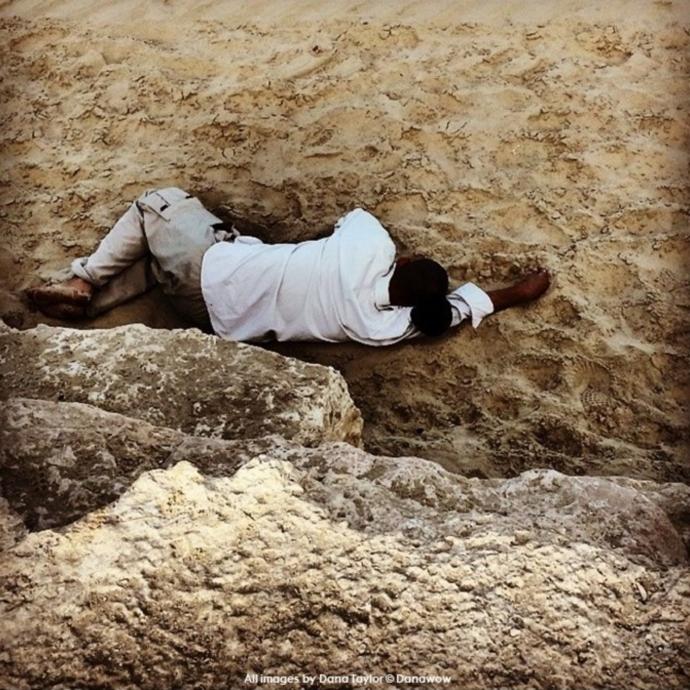
scape CONTEMPORARY ART REVIEW Land Special Edition
you’ll notice that there's a fair amount of images showcasing elderly people, (who are undoubtedly crowned as "professional nappers") as well as teens taking a break from their busy schedules.We're all human with
basic needs, and sleeping is only natural and vital, (same as going tothe toilet…) so after the initial urge to compare the seemingly differences, one's realise that when a person sleeps his status doesn't really matter. We're
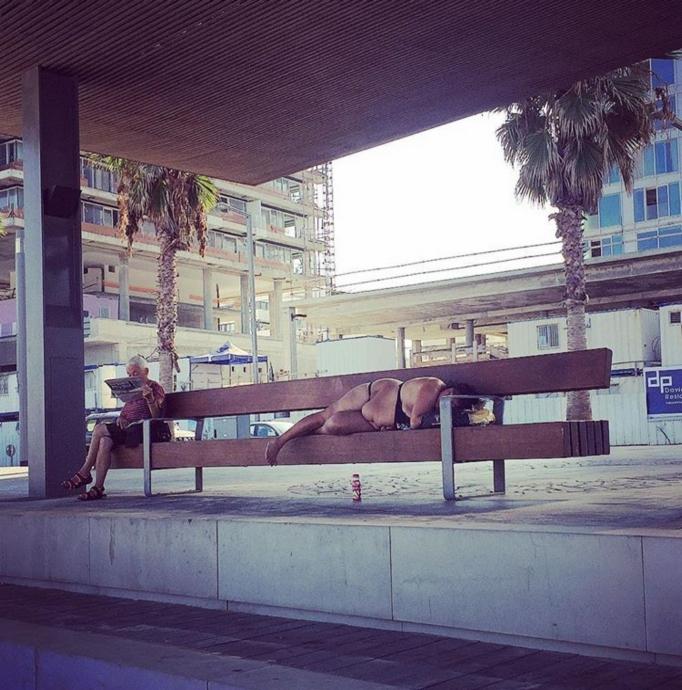
CONTEMPORARY ART REVIEW
Brigitte Dietz scape Land
all quite similar in that aspect. It’s quite simple, sometimes the race of life can be too much to handle, and some people’s way of dealing with it, is by shutting down and escape to a different dimension, which can only be reached when

you close your eyes, turn off your thoughts and block everything out.
As a light sleeper, who sleeps with ear plugs, and wakes up even by the slightest minor
Special Edition scape CONTEMPORARY ART REVIEW Land
interruptions, I absolutely adore (and also quite envy of) people who falls asleep in any condition. I’m fascinated and intrigued by those who possess these “supernatural powers” that manage to shut down, and dive into the most
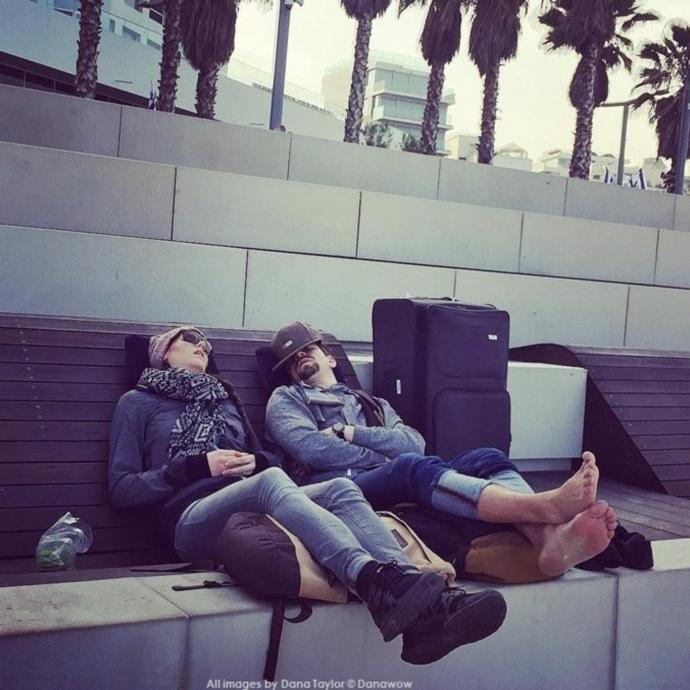
intimate state of being, in the busiest, smelliest, noisiest and chaotic places, known as public spaces. It's quiteremarkable!
As a storyteller, I believe that the best way to show reality is by using the "Holy Combination"
CONTEMPORARY ART REVIEW
Brigitte Dietz scape Land
of Humanity Sensitivity and Humour. As I see it, people are people! therefore, whether life circumstances and unfortunate events brought you to your knees, or you possess the great
talent of falling asleep in any condition, you deserve to be seen.
Education is not about telling people what they

scape CONTEMPORARY ART REVIEW Land Special Edition
have to do, it’s about showing that something does exists, and letting them know that they can do something about it. This method allows the freedom to act. It creates an opportunity
for a real change, in themselves or to their household and immediate surroundings. So if by viewing my project, people would change their views and preconceptions, that's great.
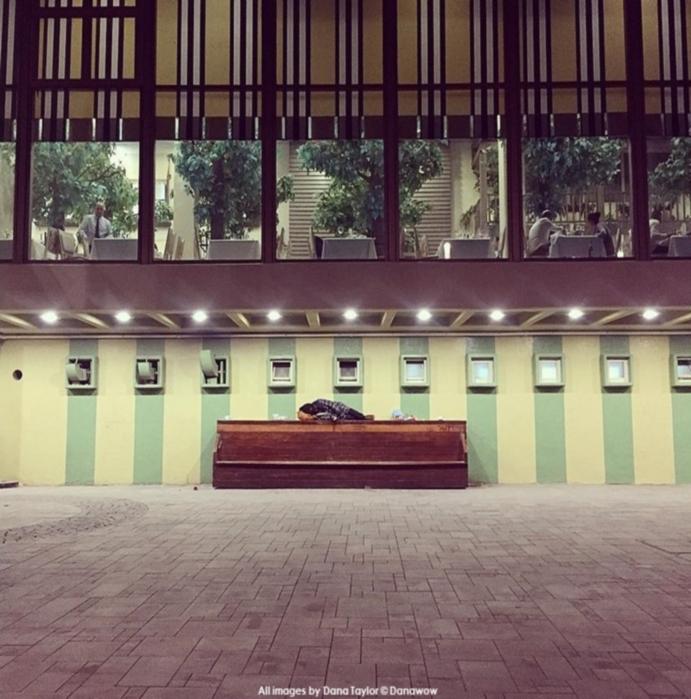
Brigitte Dietz scape Land CONTEMPORARY ART REVIEW
In my nature I’m a positive person and hopelessly optimistic, therefore I choose to combine my moral beliefs with actions, and so for the past 11 years I volunteer for a charity
that supports the elderly, and brings some comfort to those who are less fortunate. I truly believe that there still hope for a better future for all of us.
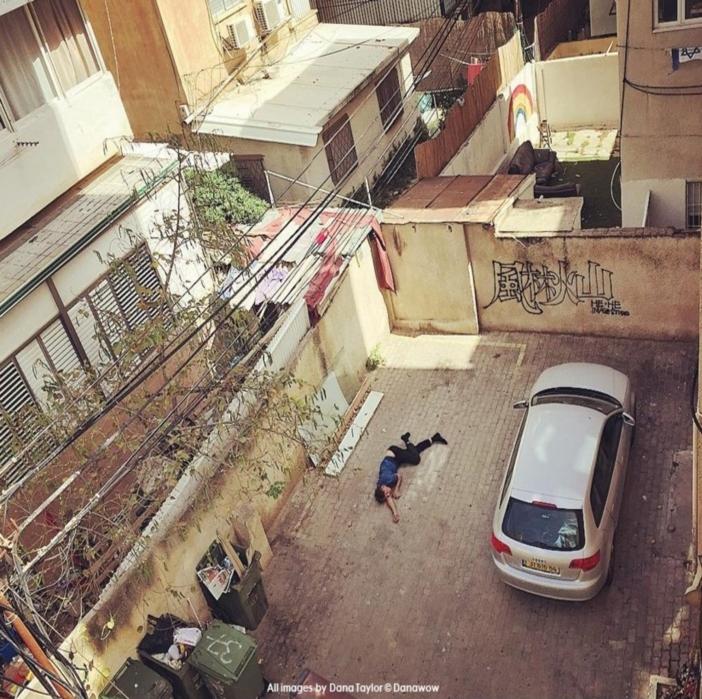
scape CONTEMPORARY ART REVIEW Special Edition Land
My Sleeping Rough Project is an ongoing one. Due to the fact that people are still and probably forever will be sleeping outdoors, my collection is steadily growing. (I have more
than 300 photos to date, and not a day goes by without me taking at least couple of new photos...) The options are endless because each person is an individual and has hisown
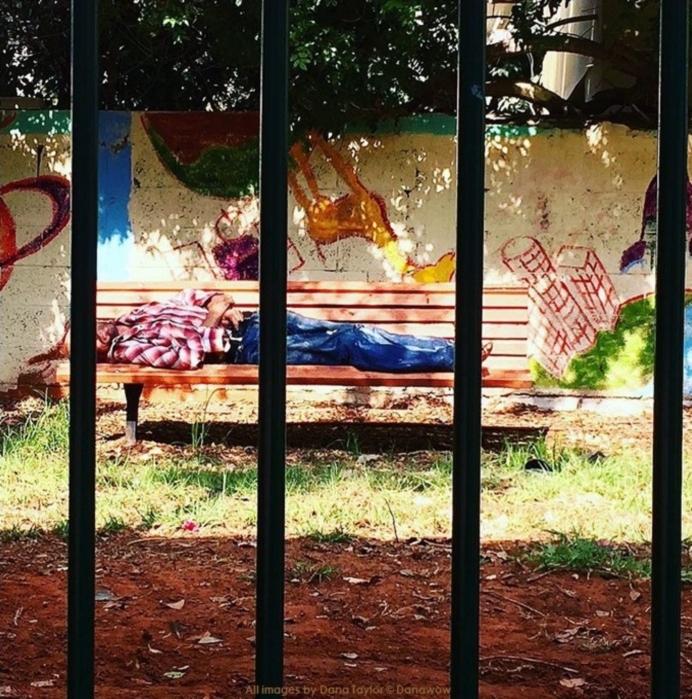
Brigitte Dietz scape Land CONTEMPORARY ART REVIEW
style and way of resting, and also the location is ever-changing. I must admit, the diversity is surprisingly rich, so I never get tired of it.
In the Sleeping Rough Project, I document “Sleepy People” scattered throughout urban spaces. It consists of - Sleeping Rough Exhibition – an art exhibition (suitable for both
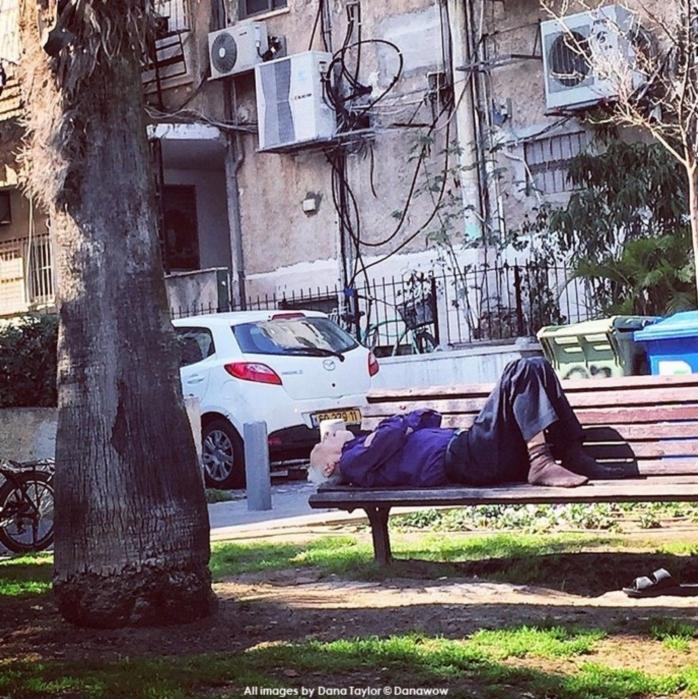
Land scape CONTEMPORARY ART REVIEW Special Edition
indoor and outdoor spaces!) where each image is printed on a white pillowcase and hanged on clotheslines with wooden pegs. The idea/statement of this installation is a
contradiction to the saying "Don't wash your dirty laundry in public". It's a metaphor of, how nowadays everything's out in the open, in comparison to the past, when people went out

Brigitte Dietz scape Land CONTEMPORARY ART REVIEW
of their way to keep their personal matters private, behind closed doors. The idea of a pillowcase without a pillow (trust me, it's absolutely useless and pretty uncomfortable to sleep on) is to emphasize that outdoor sleeping
is extremely hard. Furthermore, a pillowcase is printable and physically very similar in shape to a canvas:)

scape CONTEMPORARY ART REVIEW Land Special Edition
In Sleeping Rough - Present Passive Progressive [Gallery Framed Photography] - I manipulate and play digitally with my Sleeping Rough Photos, and create a fresh take and a whole
new collection of evolved Sleeping Rough Images.
By the way, my Sleeping Rough Project has a
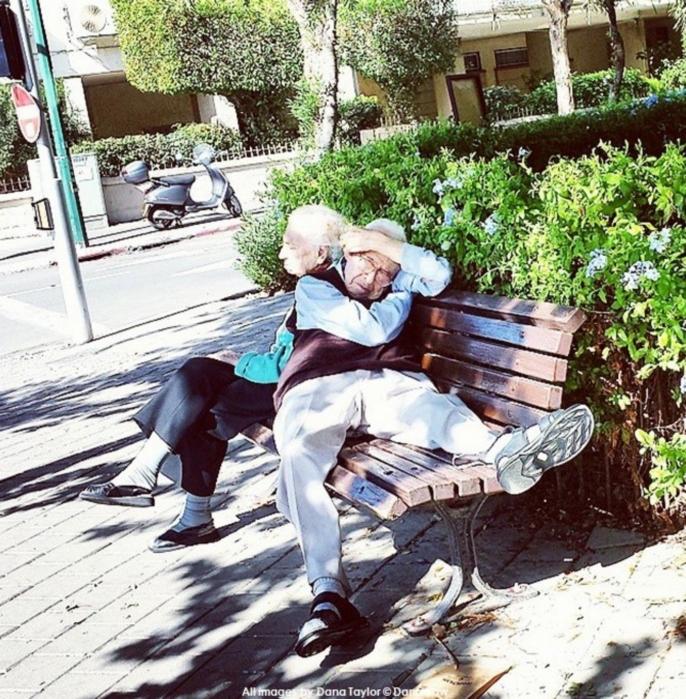
Brigitte Dietz scape Land CONTEMPORARY ART REVIEW
very active Instagram account@sleepingroughdanataylor
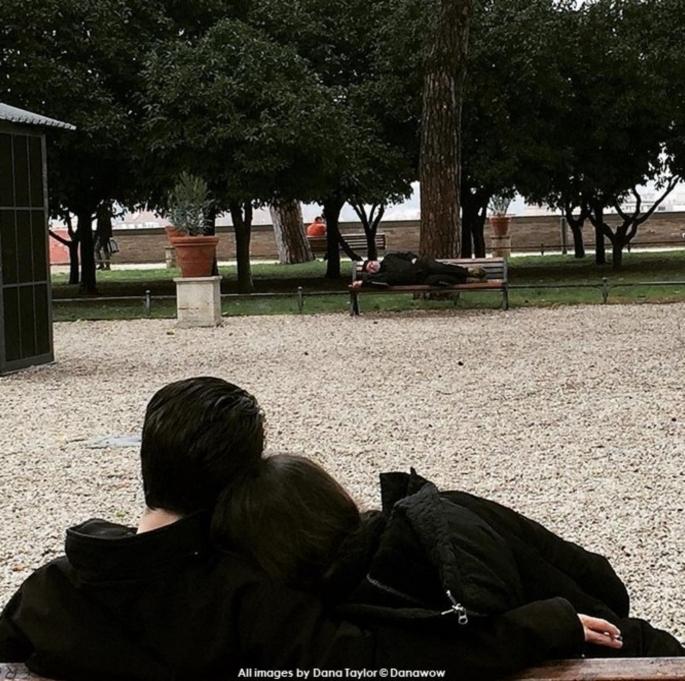
Social media has changed the rules. People share absolutely everything, (including their
mental and physical health conditions, and their perversions, which casually appear alongside their photos, hobbies, meals, pets and favorite songs.) Nothing is taboo! nothing can dodge the freedom of sharing. On the
scape CONTEMPORARY ART REVIEW Land Special Edition
other hand, the internet freed us from physical and geographical boundaries, it brings us together and provide us with an enormous amount of information. So the question is not if we should use it, it's how we use it! as for
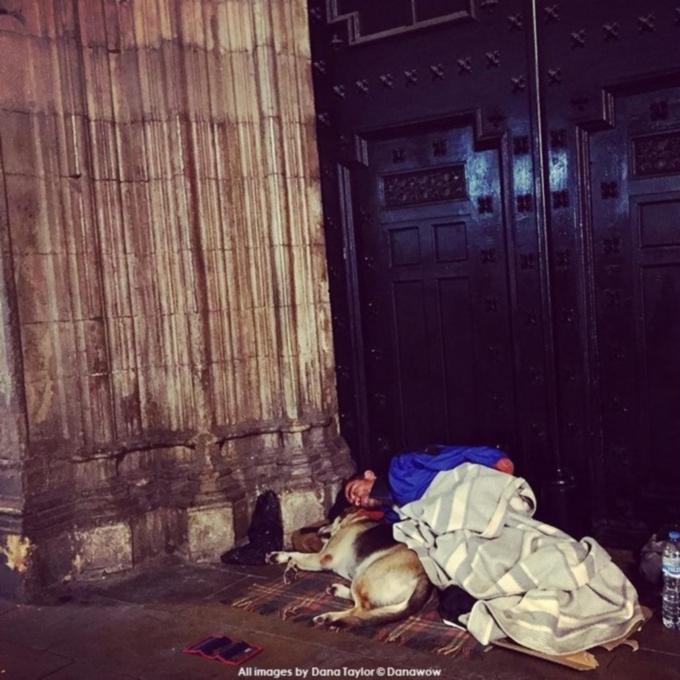
everything we do in our life, it all starts and ends in balance and moderation.
Without the World Wide Web, it would have probably been much more difficult to expose my art to a bigger audience, and cooperate
Brigitte Dietz scape Land CONTEMPORARY ART REVIEW
with galleries and other art platforms all around the world.
Currently, some of my Sleeping Rough framed

photos are on display at Galleri Heike Arndt
DK in Berlin (till the end of August)
Another photo at Saatchi Gallery in London
scape CONTEMPORARY ART REVIEW Land Special Edition
Sleeping Rough exhibition will take part in the art festival BINNAR in Portugal (November)
My artwork will take part in an international photo and visual design group exhibition in Rome (November – December)
And from September till October some of my Sleeping Rough - Present Passive Progressive, will take part in Intimists 4 an online exhibition at La Fenice Art Gallery in Hong Kong. Furthermore, Sleeping Rough has been published in printed art magazines, and online exhibitions.
Part of my agenda is to create an opportunity for people who don't normally visit galleries to be exposed to my work, so I’m always on the lookout for more approachable and unconventional locations and platforms, such as Music Festivals, and community gatherings like SleepOut and charity events for the homeless, where the vibe is more festive then formal and I get to see people's genuinereactions.
My first solo exhibition took place at Dizengoff Center Gallery which is located inside a mall in Tel-Aviv (3 minutes’ walk from where I grew up) it was so cool! I could visit often and talk to people (for an artist, who tend to work in bubble, its extremely refreshing:)) on one occasion, one of my "models" visited the exhibition and recognised himself (actually, he recognised his shoes:)) he got very emotional, and told me that it's the first time he sees himself in a photo. He loved it so much and asked if he could take it (virtually, he was trying to pull off the pillowcase...:)) I promised him I’ll make him one. The problem was that because he's homeless he had no address... so eventually, after an intensive week search
on the streets, I found him and gave him his brand-new printed pillowcase. (Nothing beats a happy ending)
I believe that for every idea and point of view, there’s an audience. Some people will like and appreciate what you do, others will hate it. But you see, art is not necessarily about beauty or pleasing, it's about the artist's perspective, his truth and own voice. We all come from different backgrounds and have our own values and interpretations, so I understand if my Sleeping Rough Project may trigger some objection. I respect others opinions, but at the same time, if anyone has a different theory or contention, he is welcome to act upon it and express himself has he pleases. (If following my exhibition for whatever reason somebody decides on a career in the art world, I want full credit;)) I'm happy to say that the majority of reactions I get from viewers who experienced Sleeping Rough, is positive and supportive. Whether I’m writing, acting or creating art, this is my way to express myself and my modest contribution to the world, and so your welcome to choose and take whatever values you want. (or not…:))
Anyway, I do what I do regardless.
Website : danataylorwow.com
Instagram : @sleepingroughdanataylor
Facebook : @SleepingRoughDanaTaylor
Brigitte Dietz Land CONTEMPORARY ART REVIEW scape
LandEscape meets
Warwick Samuel
The involvement of the viewer in the painted image seems to have always existed. From the age of 15-unusually young with hindsight – I have painted outdoors, plein air.
Over the years the lessons all artists learn the hard way have been honed into a process involving large scale drawings, (to prevent being drawn into detail) small scale water colour studies and later, when more understanding is needed, a plein air oil painting.
In the studio all this information of composition, tone and colour are slowly merged into a painting which takes on its own life and direction.The work in neither abstract or too descriptive whilst leaving no doubt as to what has fascinated and obsessed the artist.
The optically clear water of the Hampshire rivers and streams is unique, the water reflects and refracts simultaneously; one minute gravel lying on the chalk looks to be a path, the next, distorted by water currents or gentle breezes is a kaleidoscope of colour and reflected leaves.
It is, of course, impossible to paint!- the obsession continues and the struggle to communicate the beauty of this part of the planet continues…
Hello Warwick and welcome to LandEscape.
Before starting to elaborate about your artistic production and we would like to invite our readers to visit https://www.warwicksamuel.co.uk in order to get a wide idea about your mulifaceted
artistic production, and we would start this interview with a couple of questions about your background. You have been painting since the age of 15: you graduated from Manchester University and you later nurtured your education attending the Newlyn School Art Mentoring Course: how did those formative years influence your evolution as an artist? Moreover, how does
scape Land CONTEMPORARY ART REVIEW
An interview by Josh Ryder, curator and Katherine Williams, curator landescape@europe.com
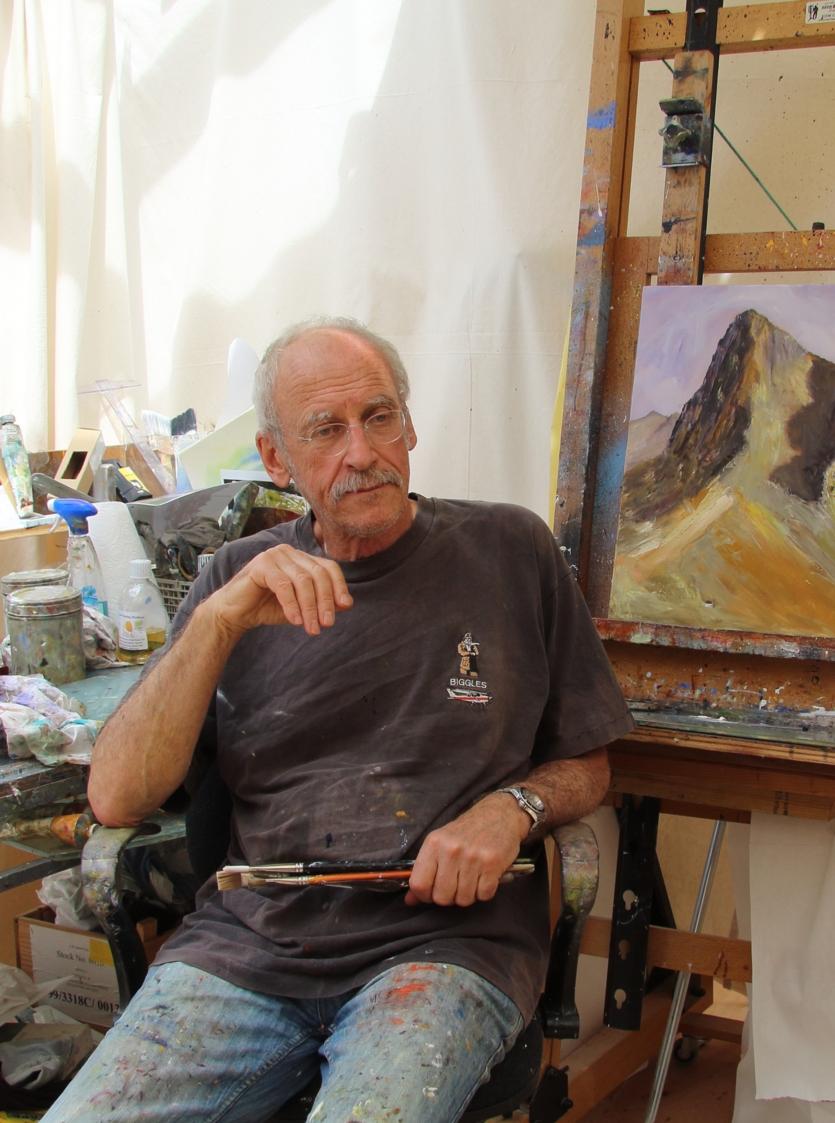
your cultural substratum direct the trajectory of your current artistic research?
Warwick Samuel: Hello and thank you for the opportunity to discuss my work. I had a scientific education in Manchester and which led to a doctorate from laboratory research. The need to be precise and careful can, on the one hand can inhibit freedom of artistic expression, but on the other hand careful and thorough observation and the ability to concentrate is a huge benefit, as is the ability to plan a series of work. University life also is about friendship and most importantly, I met my wife there and who is an invaluable art critic!
I carried on painting over these years but intensive work limited how much artistic work I could do. When I was more in charge of my time I became acutely aware of the need to share artistic problems and to talk to like minded individuals. The Mentors at Newlyn are all working artists and they all provided valuable insights into my work and deficiencies, no matter what their own practices were. I am now more able to asses and be more critical of the paintings I do. The mentoring also focused my mind on what I wanted to do.
For this special edition of LandEscape we have selected The River Light, a stimulating series that our readers have already started to get to know in the introductory pages of this article. As you have remarked, your series aims to describe the light on the crystal clear waters of Hampshire chalk rivers, and we have been struck with the way you structured your works in order to provide the viewers with

scape CONTEMPORARY ART REVIEW Special Edition Land

Warwick Samuel scape Land CONTEMPORARY ART REVIEW
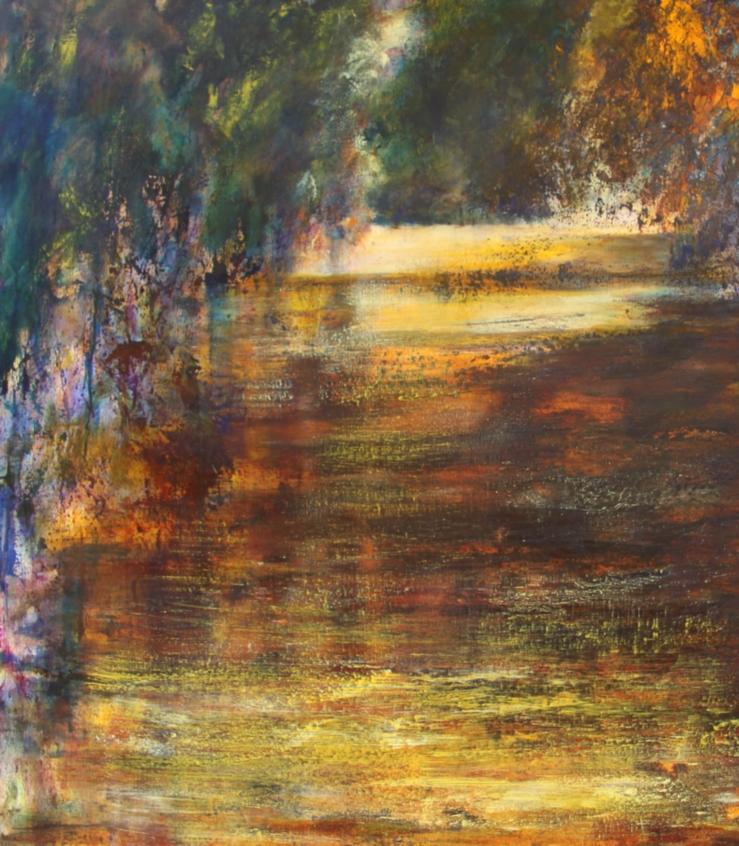
Special Edition scape CONTEMPORARY ART REVIEW Land
such multilayered visual experience. When walking our readers through the genesis of The River Light, would you tell us how important is for you to focus on themes that belongs to your everyday life's experience?
Warwick Samuel: Thank you, the series started off accidentally when I found myself repeatedly drawn back to the same area. I gradually realised there were unique properties to the chalk rivers in Hampshire, which are world famous for the fishing they provide. The water flows over chalk and any impurities in the water are filtered out through the porous chalk. The water is so clear that when the light strikes the water directly , or perpendicularly to the surface it is transparent and the river bed and gravel lying on the chalk appears as the surface, other areas where the light is refracted show an alteration of colour and tone. When walking along the river there is a constant, daily and second by second shift in the light and transparency, at times there would appear to be no water when the water flow is slow and the river bed clearly seen. At other times, the light is completely reflected as strong highlights and with impenetrable darks. At some times of the year when the light is muted there are no colour changes and the tones are uniform- not a day for painting!
We have really appreciated the vibrancy of thoughtful nuances that mark out your artworks, and we like the way they create tension and dynamics: how did you come about settling on your color palette? And how does your own psychological make-up
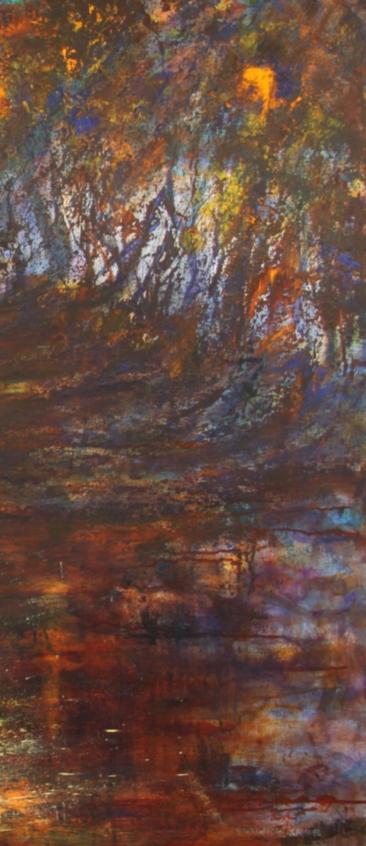
Warwick
scape Land CONTEMPORARY ART REVIEW
Samuel
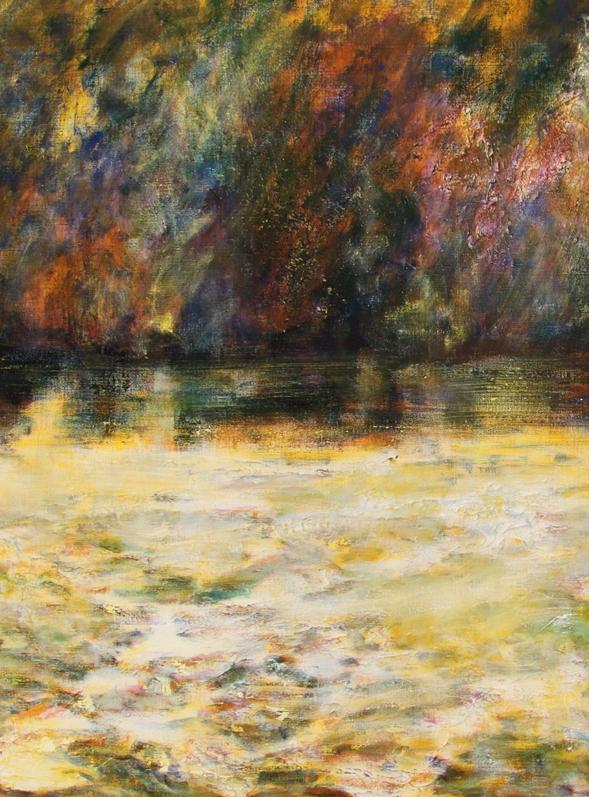

determine the nuances of tones that you decide to include in a specific artwork in order to immerse the viewer into the depths of the subconscious?
Warwick Samuel: That is a good question!- I think that ones psychological make up does strongly influence the outcome of the painting I do find that the darker tones and
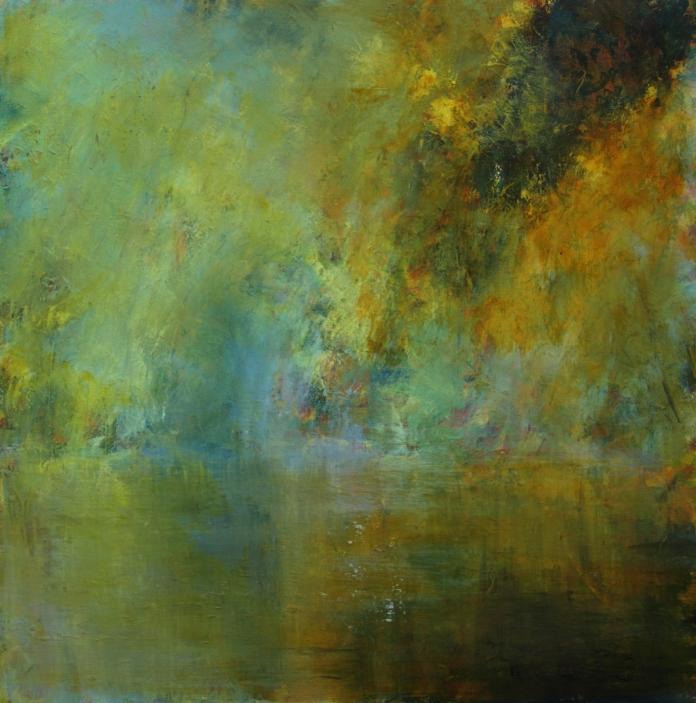
scape CONTEMPORARY ART REVIEW Land Special Edition
how to express them without the painting being too gloomy is a battle I enjoy. The “secretive” areas of darks what fascinates me and it has become more of an
obsession and to paint these areas without too jarring a contrast to the lights. At times on the river bank it is impossible to separate the water from surrounding foliage the
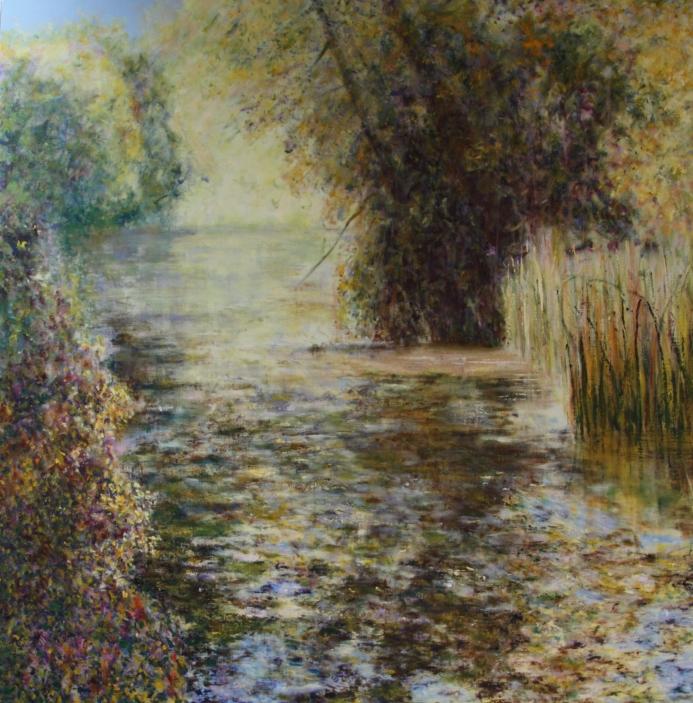
CONTEMPORARY ART REVIEW
Warwick Samuel scape Land
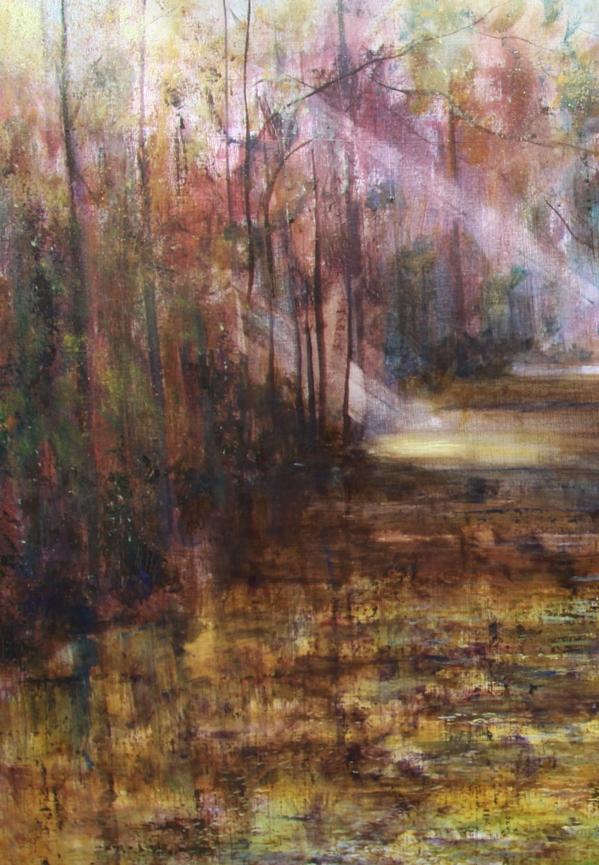

“real” and the reflected image. My palette has gradually evolved, but with a tendency to transparent colours. I use some 20 glazes to get the darks I am after. I put the opaque earth colours on first and then glaze repeatedly on top.
As you have remarked once, in the studio all the information of composition, tone and colour are slowly merged into a painting which takes on its own life and direction. New York City based artist Lydia Dona once stated that in order to make art today one has to reevaluate the conceptual language behind the mechanism of art making itself: do you create your works gesturally, instinctively? Or do you methodically transpose geometric schemes?
Warwick Samuel: A famous Impressionist painter once said that the minute you start thinking you are lost! I am like a lot of landscape artists who find no value in photographic references as once the painting starts in the studio the plain air sketches and colour studies and most importantly, what you remember, takes over instinctively. If gestural marks are “needed” emotionally, then impasto paint and expressive brushwork are instinctively needed, as in River Light 9; whereas the large (150 cms X 150 cms or 5ft X 5 ft) River Light 30, some 20 or 30 layers of glazes were more what the painting ”demanded”
The well recognised difficulty is, of course, knowing when to stop!
We like the way you artworks convey such a stimulating combination between figurative

scape CONTEMPORARY ART REVIEW Land Special Edition

Warwick Samuel scape CONTEMPORARY ART REVIEW Land

scape CONTEMPORARY ART REVIEW Land Special Edition
elements and captivating subtle abstract quality: how would you consider the relationship between abstraction and figurative in your practice? In particular, how does representation and a tendency towards abstraction find their balance in your work?
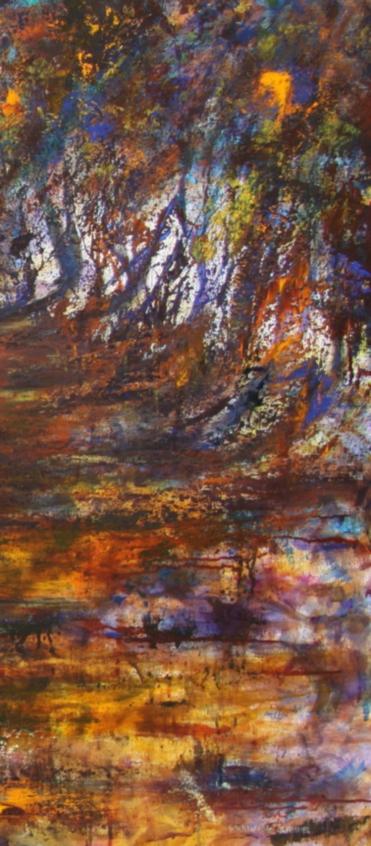
Warwick Samuel: Another good question!- I think complete abstraction can sometimes be an easy way out of getting over a message as evidenced by the necessity of giving an abstract painting a title. The ambiguity of total abstraction may not demonstrate the features of a landscape that one is particularly drawn to. I think the river scenes I have done show what I am trying to express, almost without a title being needed. One is not trying to replicate a photograph and indeed most appealing landscape paintings are abstracted to some extent.
I think a good corollary is the “dead end “ hyper-realistic portraiture has reached when a photograph of the sitter has the same effect on the viewer.The viewer of the hyper- realist painting is left with admiring technical prowess alone. I think conscious abstraction or setting out to paint abstractly “come what may” is difficult and I think a balance between a figurative and abstracted image should happen rather than be planned in trying to make the very best image one can to share the feel or emotion of being in a particular landscape. I am sure, in the final analysis the results justify the means to demonstrate particular features of the landscape one is trying to show.
CONTEMPORARY ART REVIEW
Warwick Samuel scape Land
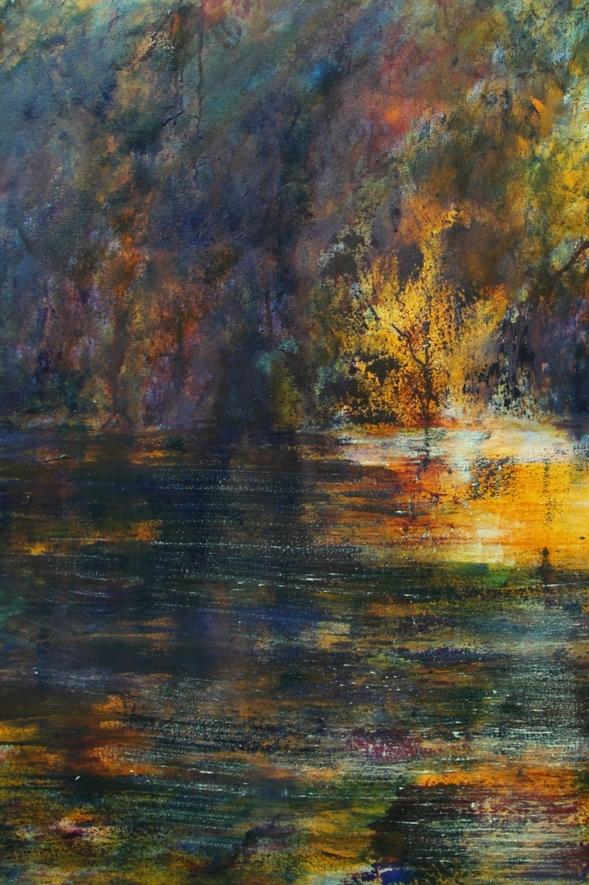
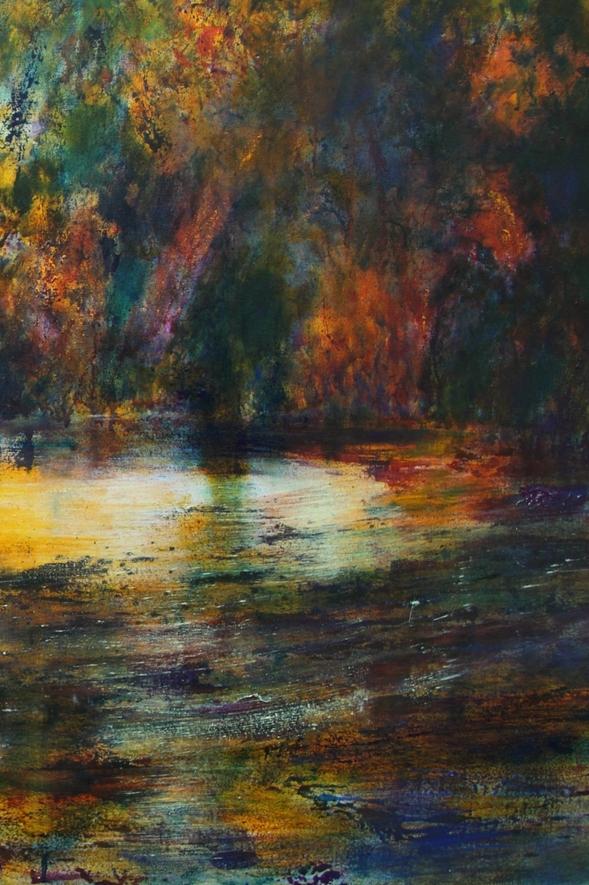
With their unique visual identity, your artworks challenges the viewers' perceptual parameters: we daresay that your artistic practice seems to aim to look inside of what appear to be seen, rather than its surface, providing the spectatorship with freedom to realize their own perception. Austrian Art historian Ernst Gombrich once remarked the
importance of providing a space for the viewers to project onto, so that they can actively participate in the creation of the illusion: how important is for you to trigger the viewers' imagination in order to address them to elaborate personal interpretations? In particular, how open would you like your works to be understood?
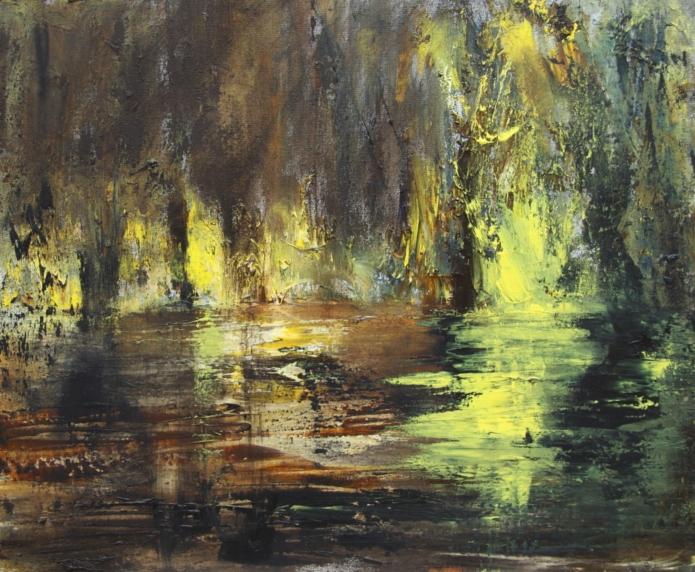
Special Edition scape CONTEMPORARY ART REVIEW Land
Warwick Samuel: Yes this is very important and leads on from the earlier points you raised about abstraction.If a painting is too figurative the viewer has nothing to project on, as Gombrich succinctly pointed out. Again taking the “dead end” of hyper-realistic paintings one can only really admire the technical skill of the work and the realism of
the image, unlike with the enigmatic Rembrandt portraits where much is suggested and the viewer has more to think about and imagine. I like to engage the viewer to work out what sort of day it was from the light and wonder what lies within the shadows and what is under the surface of the water. I would like my work to be
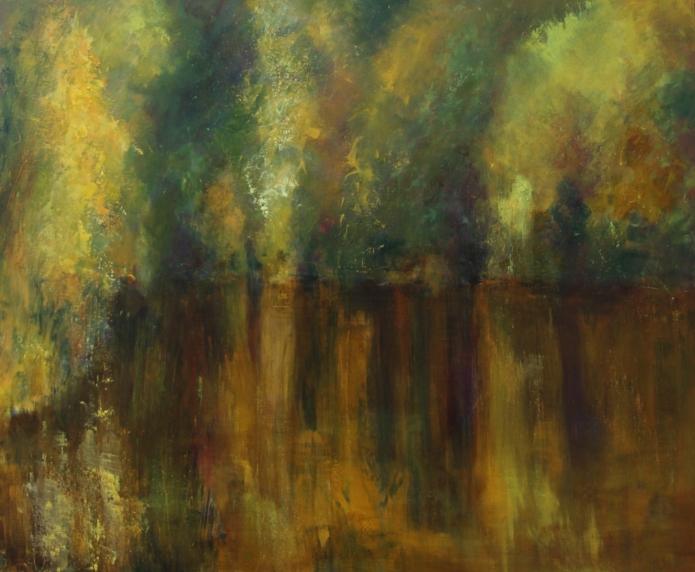
CONTEMPORARY ART REVIEW
Warwick
Samuel scape Land
understood over a period of time rather than instantaneously.
A central aspect of your artistic research is focussed on the exploration of the sense of connection with the surroundings: as a plein air painter, how does this aspect of your practice influence your workflow and how does your everyday life's experience fuel your creative process?
Warwick Samuel: Plein air studies, both drawing and paintings, are a personal aide memoire, you are immersed in the surroundings and there is always a vibrancy from a plain air study, one hopes to transfer that vibrancy and add to it in the studio. Vibrancy is I think always lost when doing a studio work but that is I hope, more than offset by the ability to use a greater depth of palette and scale which has an emotional impact on the viewer.
One’s creative process is in my experience fuelled by constantly thinking about the work even when not painting and using the pain air work as a foundation.
Over the years your artworks have been showcased in several occasions. French artist Edgar Degas, once said that “Art is not what you see, but what you make others see": how do you consider the nature of your relationship with your audience? By the way, as the move of Art from traditional gallery spaces, to street and especially to online platforms — as Instagram — increases, how would in your opinion change the relationship with a globalised audience?
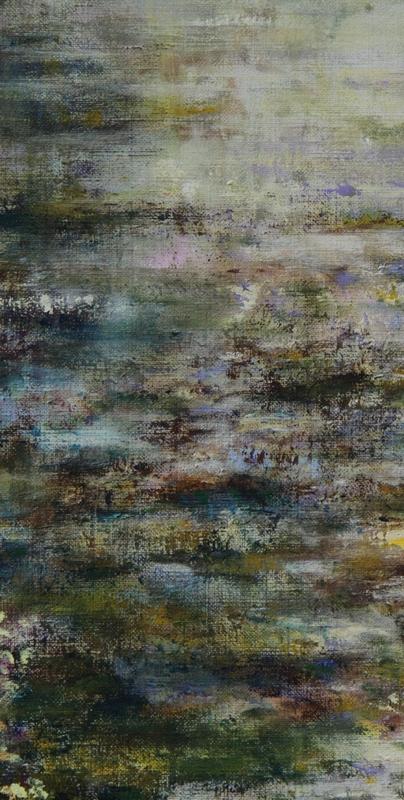
scape CONTEMPORARY ART REVIEW Land Special Edition

Warwick Samuel scape Land CONTEMPORARY ART REVIEW
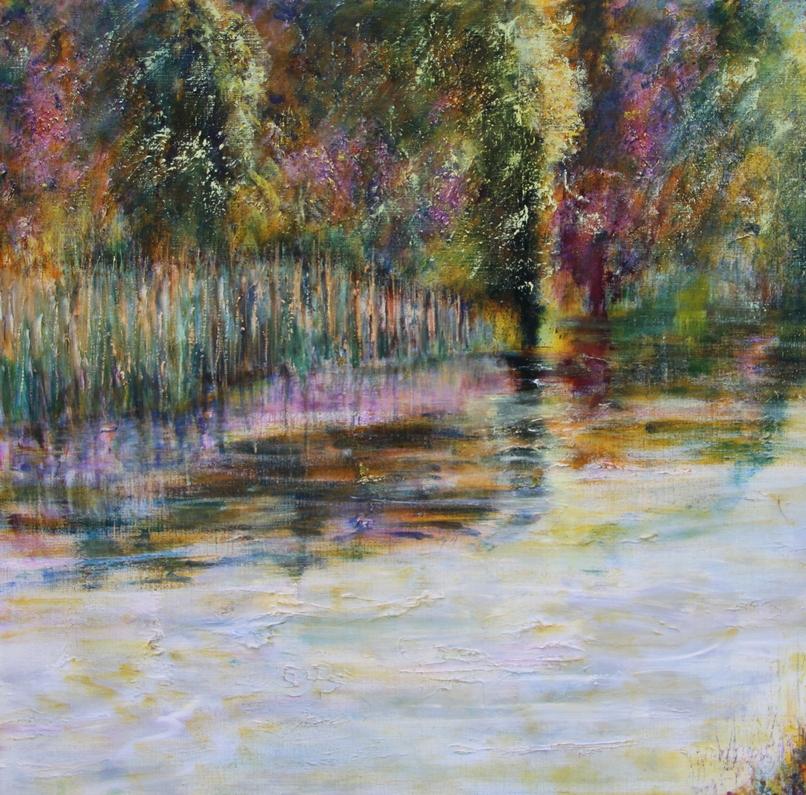
Land scape CONTEMPORARY ART REVIEW Special Edition
Warwick Samuel: Thank you, I would agree that art is what you make others see and it is rewarding when what one is trying to achieve is understood. The beauty of landscape paining is that we all interact with the environment and if we can encourage enthusiasm for a particular portrayal of what the artists thinks is beautiful the work has succeeded, it is a reciprocal arrangement !
As you say the art audience is globalised and the best artists from around the world can achieve far greater exposure than they ever could have in the pre internet age, ideas are now swapped, transformed and copied ( ! ) with ease.
We have really appreciated the multifaceted nature of your artistic research and before leaving this stimulating conversation we would like to thank you for chatting with us and for sharing your thoughts, Warwick. What projects are you currently working on, and what are some of the ideas that you hope to explore?
Warwick Samuel: Thank you again, I am now doing a lot of work on the figure in the landscape which can affect the mood of the painting, it is the start an exciting body of work which emphasises both the figure and the landscape.

Warwick Samuel scape Land CONTEMPORARY ART REVIEW
An interview by Josh Ryder, curator and Katherine Williams, curator landescape@europe.com
LandEscape meets
Margarida Naves
Margarida Naves, was born in Lisbon, Portugal, and has graduated in Industrial Design, having later completed a Master's Degree in Interior Design, and a degree in Photography. This artistic medium was an old passion, and she decided to devote herself to the development of her personal writing, where her work portrays the daily landscapes with a poetic approach, close to the oneiric universe.
Her practice creates a dialogue where the real and the imaginary are combined, in an abstract or accurate form, giving place to a fictional nature and narrative. The use of color, as it’s consonance with the monochromatic, grant her work an intangible space, which she likes to portray in the form of a graphic diary.
Hello Margarida and welcome to LandEscape. Before starting to elaborate about your artistic production and we would like to invite our readers to visit https://www.margaridanaves.com in order to get a wide idea about your multifaceted artistic production, and we would start this interview with a couple of questions about your multifaceted background. You have a solid formal training: after your studies in Industrial Design, you earned your Master's Degree in Interior Design from IADE,
Lisbon, and you later nurtured your education in Photography at the Université Paris 8 Vincennes Saint-Denis, in Paris: how did those formative years influence your evolution as an artist? Moreover, how does your cultural substratum due to your Portuguese roots direct the trajectory of your current artistic research?
Margarida Naves: Hello! I have started my artistic journey by liking to produce objects, and see them gaining shape as I designed them and could materialize in the physical form. As I am very attached to the space around me and its beauty, I followed my training with the
scape Land CONTEMPORARY ART REVIEW
An interview by Josh Ryder, curator and Katherine Williams, curator landescape@europe.com


interior/athmospheres design Master, so I could learn how to make this in a broader scale, and create spaces that could mirror my inner notion of beauty. Photography comes in the alignment with the drawing field, always present in my design practice, and with this medium I can better express what I envision, for its plasticity and capacity to merge with any other medium. Having studied Photography in Paris was a great opportunity to learn about the numerous capacities of this art form, as well as being in a city with so many inspiring surroundings and artists. Being portuguese does not reflect particularly in my work, or direct the trajectory of my visual research, as I portray it in a very personal way, and I am primarily interested in narrating my dreamy inner emotions.
For this special edition of LandEscape we have selected All unfolds in grace and beauty a stimulating series that our readers have already started to get to know in the introductory pages of this article. What has at once captured our attention of your work is the way it unveils the point of convergence between the reality from which you draw, and such transporting ethereal visual atmosphere, providing the viewers with such multilayered visual experience: when walking our readers through the genesis of All unfolds in grace and beauty
would you tell us something about your usual setup and process?
Margarida Naves: This particular series was constructed from old images I did not relate to anymore, but still loved their ambience and composition. I decided to give them a different meaning and rhythm. So by using the gesture of ripping the paper and creating one image from two different photos, I found they dialogued in multiple layers giving place to the intangible space I always aim to achieve. My process is a continuous research, and it evolves from my daily practice.
With their unique visual identity, your artworks challenges the viewers' perceptual parameters: we daresay that your artistic practice seems to aim to look inside of what appear to be seen, rather than its surface, providing the spectatorship with freedom to realize their own perception. Austrian Art historian Ernst Gombrich once remarked the importance of providing a space for the viewers to project onto, so that they can actively participate in the creation of the illusion: howimportant is for you to trigger the viewers' imagination in order to address them to elaborate personal interpretations? In particular, how open would you like your works to be understood?
scape Land CONTEMPORARY ART REVIEW
Brigitte Dietz
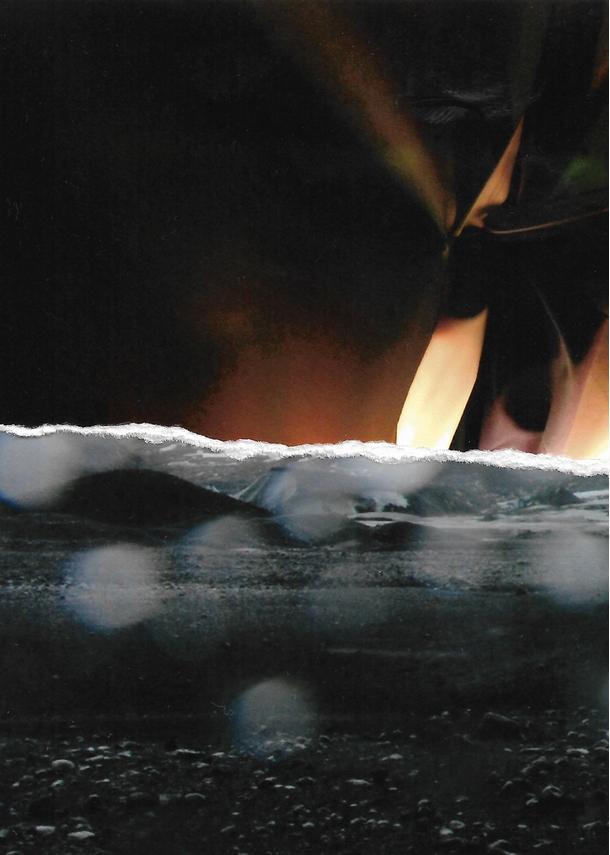

Margarida Naves: That is exactly what I am looking for in my work! My idea is to give complete freedom to the viewer to fully travel through the narrative I present, and be able to identify with it and mirror their personal experiences. I suggest a meaning given through a title and a visual composition with figurative, abstract color and black and white, and from there the viewer’s insight takes one’s direction. The openness of my narratives allows multiple understandings and I am interested in this plurality of meanings.
The ambiguous visual quality of your artworks allows you to create emotional impact on the viewers: we have particularly appreciated the way they clearly show that vivacious tones are not strictly indespensable to create tension and dynamics. How does your own psychological make-up determine the nuances of tones that you decide to include in your artworks?
Margarida Naves: I love to use tones close to the melancholic feelings, and I find myself using many times the same colors. I use blue, pink and violet the most, and maybe in this way I can find my portuguese roots connecting this melancholy to saudade. I prefer to use faded colors, for bright and saturated
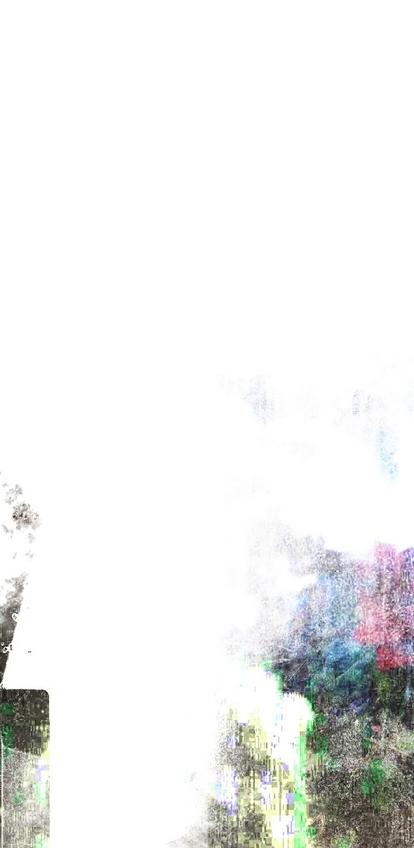
Special Edition scape CONTEMPORARY ART REVIEW Land
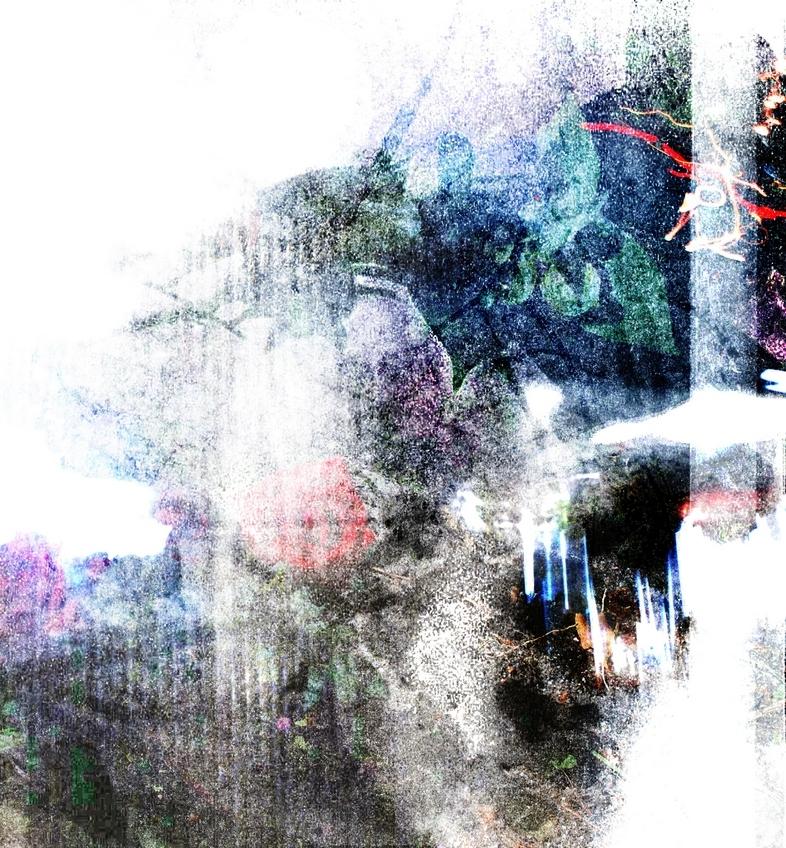
Brigitte Dietz scape Land CONTEMPORARY ART REVIEW

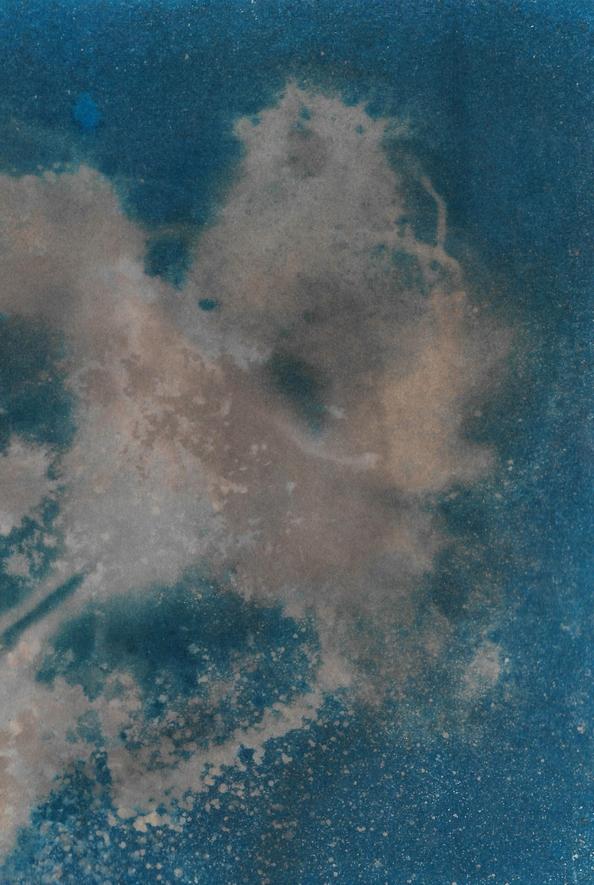
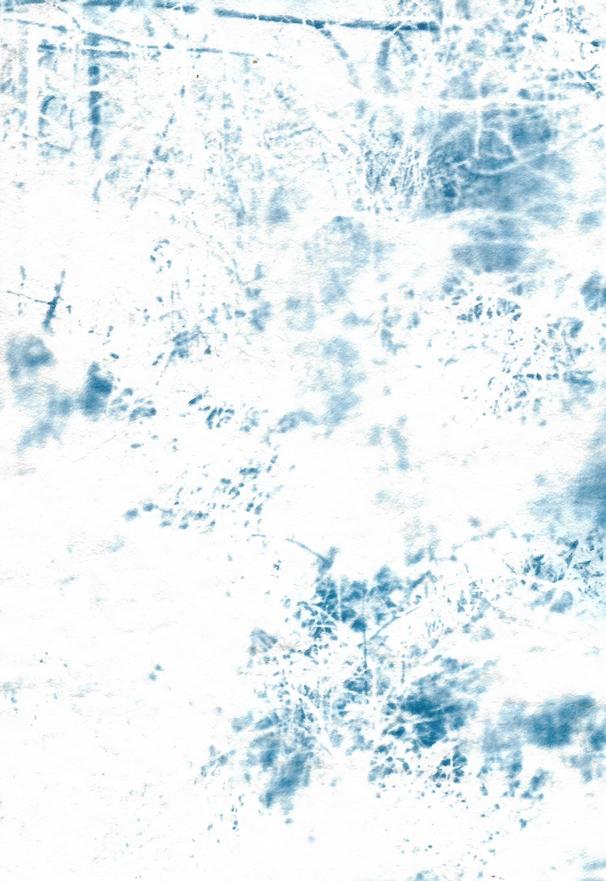

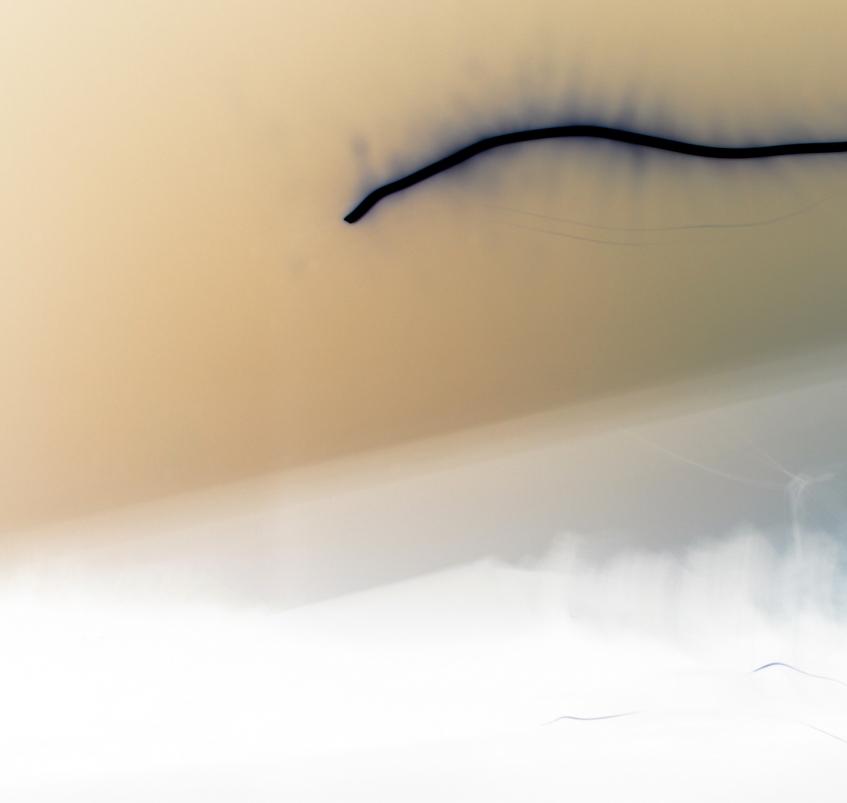
scape CONTEMPORARY ART REVIEW Land Special Edition
are too strong for what I want to say in images.
As you have remarked in your artist's statement, your work is about creating images composed with poetry in everyday life sceneries, as in the interesting Idioglossia: how does your everyday life's experience fuel your creative process?
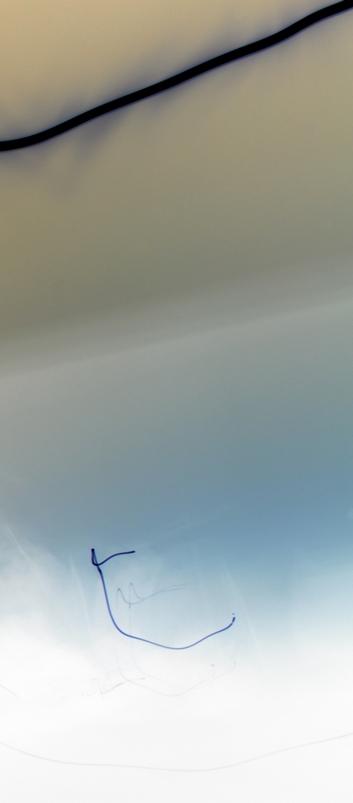
Margarida Naves: I am fueled by all my surroundings, as daily images and sounds. I love to mix all the information I receive, and create layers of matter, as we can specifically see in Idioglossia. This word means “a language of one’s own, or and invented language”, and by this I mean to create an inner cosmos where all connects and mirrors my own emotions. Literature plays a major role to fuel my imaginary and will to experiment with my images over and over. The continuity of forms that pass from one image to the other creates an organic flow and rhythm like music, which is for me an imperative art form.
A central aspect of your artistic research is focussed on the exploration of the relation between abstraction and daily life landscapes: how do you consider the relationship between the real and the imagined playing within your artistic practice?
Margarida Naves: In the abstract we can find multiple meanings opposing to the real images that contain a singular one. I
CONTEMPORARY ART REVIEW
Brigitte Dietz scape Land

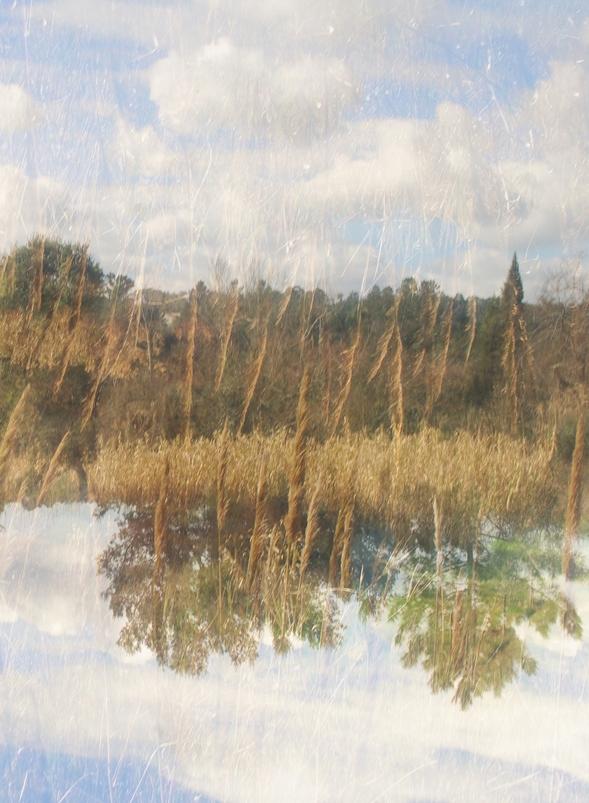
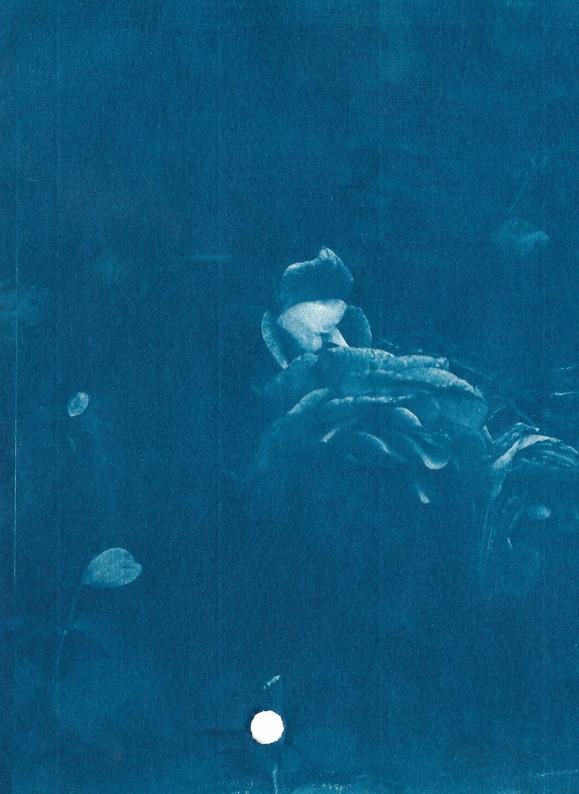


scape CONTEMPORARY ART REVIEW Land Special Edition
find this relation interesting while visually storytelling, for its extreme balance creates a singular substance between dream and reality.
We have particularly appreciated the way your artworks shows balanced combination between subtle sense of geometry and abstract sensitiveness. New York City based artist Lydia Dona once stated that in order to make art today one has to reevaluate the conceptual language behind the mechanism of art making itself: Do you create your works gesturally, instinctively? Or do you methodically transpose geometric schemes?
Margarida Naves: It is a balanced use of both: instinct and method. My work process takes a long time, for I experiment all the composition possibilities my intuition guides me to. The final result is a pure decision of intense analysis. As for geometry, the curve element is the one that most interests me while building a specific imagery, and other geometric shapes are added as visual equilibrium.
French artist Edgar Degas, once said that “Art is not what you see, but what you make others see": how do you consider the nature of your relationship with your audience? By the way, as the move of Art from traditional gallery spaces, to street and especially to online platforms — as Instagram — increases, how would in your
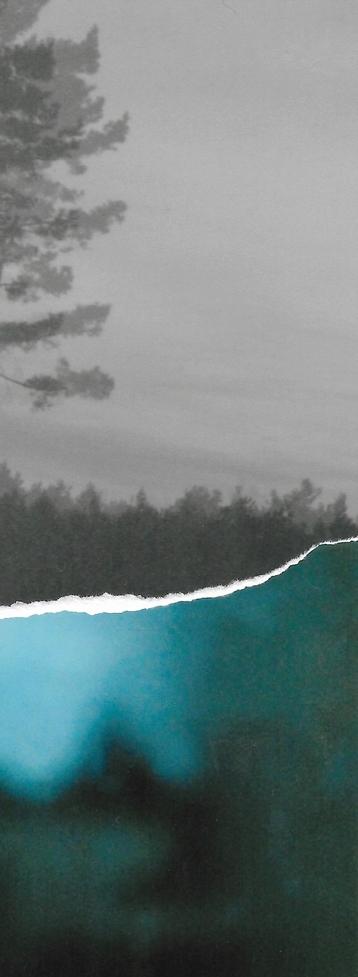
Brigitte Dietz scape CONTEMPORARY ART REVIEW Land


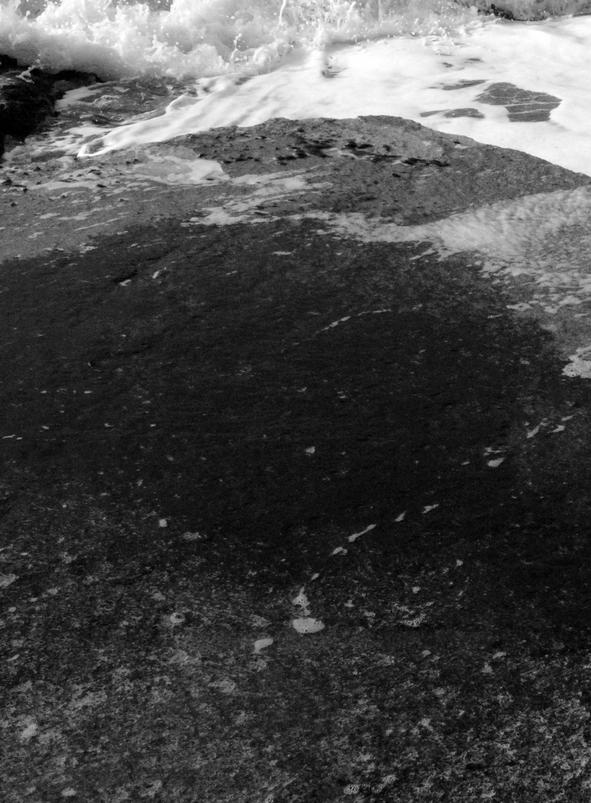
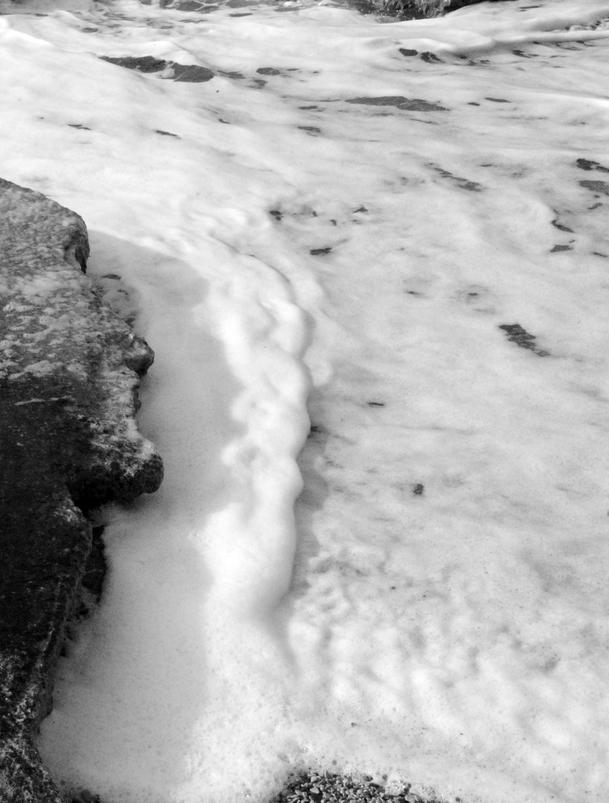
opinion change the relationship with a globalised audience?
Margarida Naves: I consider the nature of the relationship with my audience is done in a very personal level, as I would like them to identify with my work, not giving a full narrative direction, but an invitation to create their own inner story.
I don’t think Instagram is the best way to present my work, for I believe the photographic series get scattered and the content loses meaning. I like my work to be
presented as a whole, and my favorite platform is my personal website, although I do have an Instagram account for a fast paced general view of my work.
We have really appreciated the multifaceted nature of your artistic research and before leaving this stimulating conversation we would like to thank you for chatting with us and for sharing your thoughts, Margarida. What projects are you currently working on, and
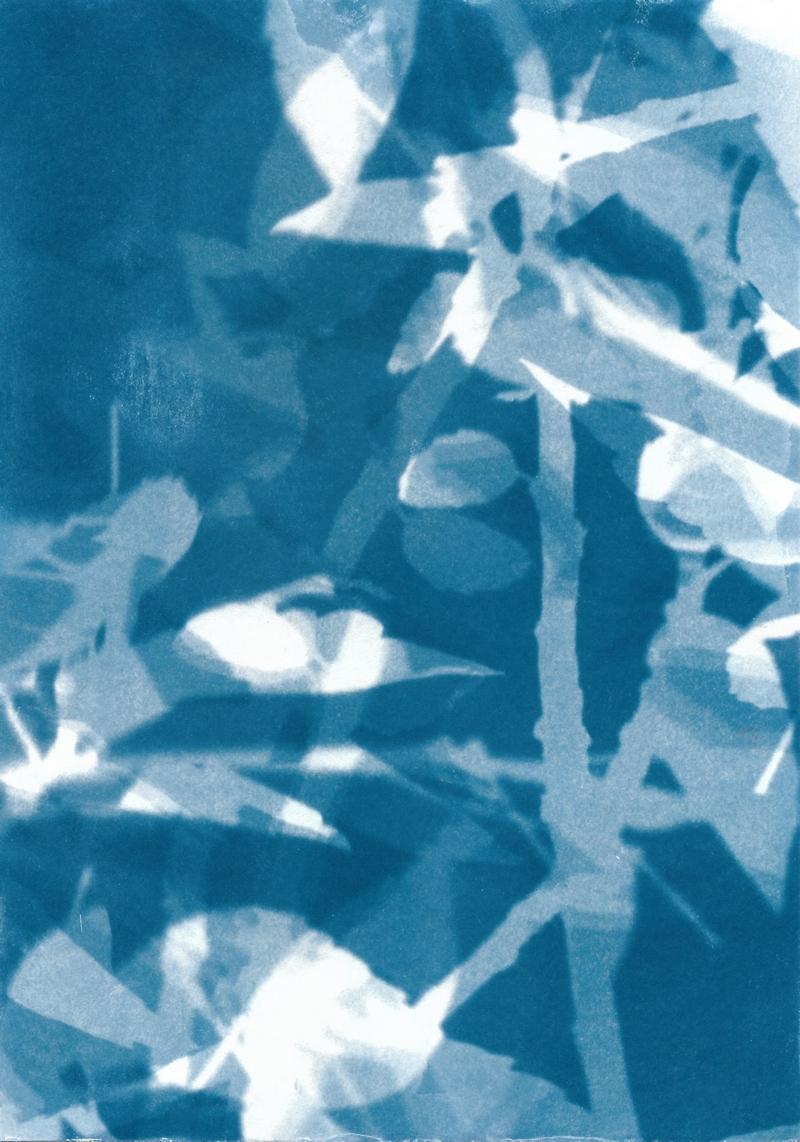

scape CONTEMPORARY ART REVIEW Land Special Edition
what are some of the ideas that you hope to explore in the future?
Margarida Naves: Thank you very much. At the moment I am working on a new series that I would like to edit in a black and white fanzine. It is a photographic diary about the void, silence and inner sceneries, and I use the metaphor of nature elements for the interpersonal relations in everyday life. Everyday life is my absolute favorite field to capture images, and create an intangible space feeling.
I love the photographic book art form, and in a near future I intend to publish more editions of my work. I have recently self edited a book from my series Times without number, and I find very inspiring to design from scratch the photobook as a whole, while containing a personal story made by unpublished images.
An interview by Josh Ryder, curator and Katherine Williams, curator landescape@europe.com
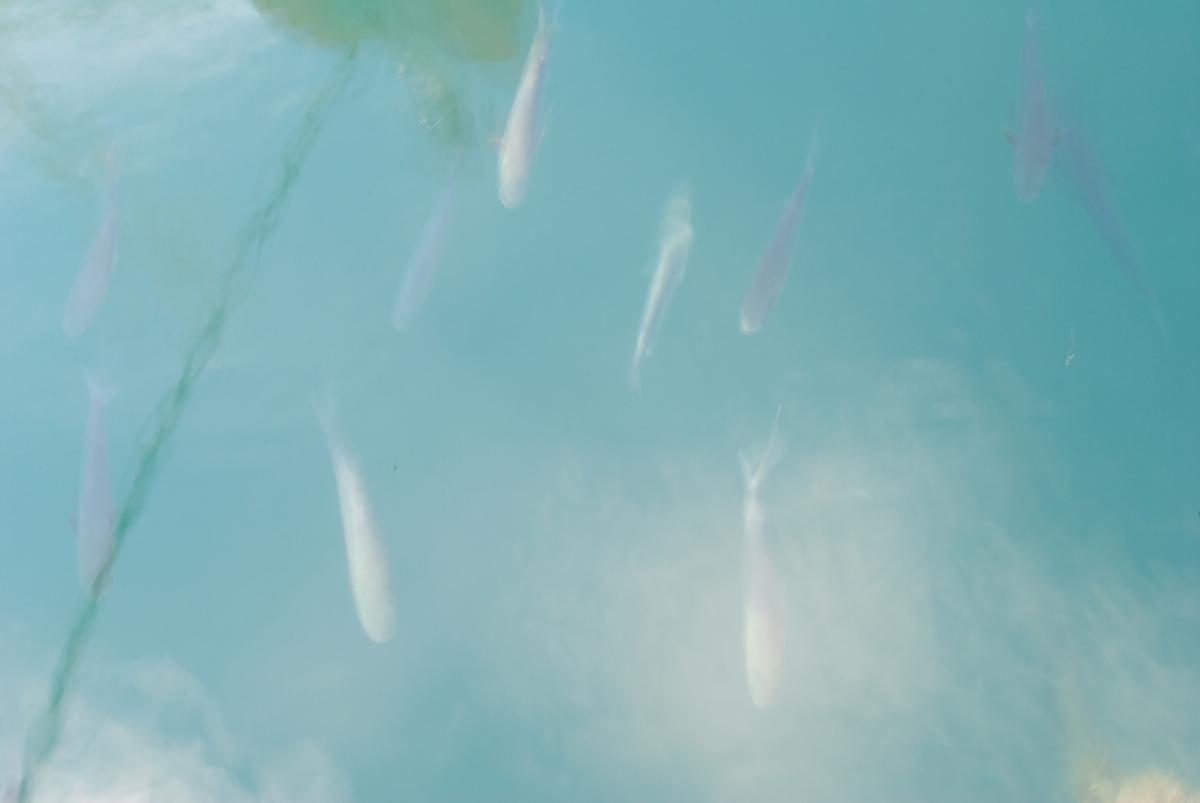
scape Land CONTEMPORARY ART REVIEW
Brigitte Dietz
LandEscape meets
Suzanne Gibbs
Familiar images, objects and places are transformed into unbecoming surroundings. Regular urban structures acquire a monumental look and therefore become private landmarks of ambiguity. Every distraction is banished with the intention to arrive at a deceptively bare density. Sometimes, even the elements of solidity and liquidity are rendered in an unspecified manner. Space is undefined and all mediums are reduced to a very limited color scale and simple forms. My works reside on the borderline of description, leaving more space to the unseen rather to what is depicted. By dismantling certainties, I aim to evoke a sense of detachment, void and unfamiliarity.
Hello Suzanne and welcome to LandEscape. Before starting to elaborate about your artistic production we would like to invite our readers to visit https://www.artbysuzannebgibbs.com in order to get a wide idea about your mulifaceted artistic production, and we would start this interview with a couple of questions about your background. Over your formative years you have had the chance to study both in the United Kingdom and in the USA: how do these experiences influence your evolution as an artist? Moreover, how does your cultural substratum direct the trajectory of your current artistic research?
Suzanne Gibbs: Thank you LandEscape for this opportunity to share my artistic experience and creative process. Although born in England, my burning desire to become an artist was ignited following my first painting commission (by my Art teacher at High School), in America. At that time, I was 17 years old and had gained a sponsorship to
live in Martinez California for a year with a host family and to attend and graduate from Alhambra High School. This wonderful opportunity has become the essence of whom I’ve become in both my formative years as a Director of Art in a Secondary School in England, to the freelance fine artist I am today. Inspired by my Californian teacher, Barbara Minneman, I taught for over 20 years at Gordon’s School, a secondary state boarding school in Surrey, England. The knowledge I had to impart and the practice I shared gave me the tools and experience to explore a variety of artistic techniques and processes in my own work. Over the years, I was able to buy land in Northern California (out in the wilderness) and build a second home to use as an artist’s retreat. Here I am inspired by the natural, wild beauty and immensely diverse environment of Shasta County. Back in England, I am excited and compelled to absorb the wealth of history, culture and the arts from the London Galleries, exhibition’s and museums. My work is therefore quite diverse and I enjoy exploring the abstract or surreal as much as the representational or figurative work I create.
scape Land CONTEMPORARY ART REVIEW
An interview by Ralph Landau, curator and Katherine Williams, curator landescape@europe.com

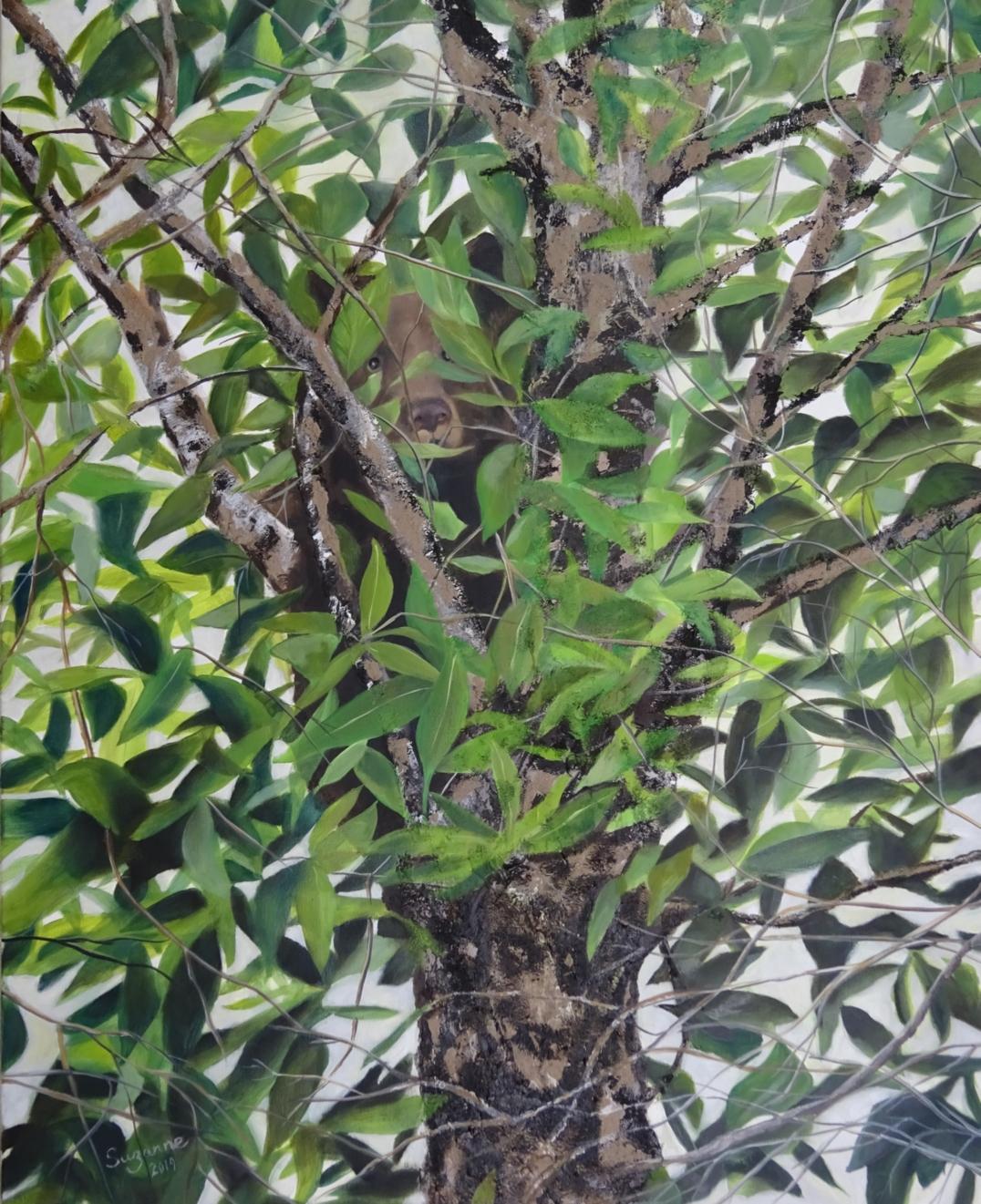
scape CONTEMPORARY ART REVIEW Land Special Edition
Bearly visible
Start of the Fire
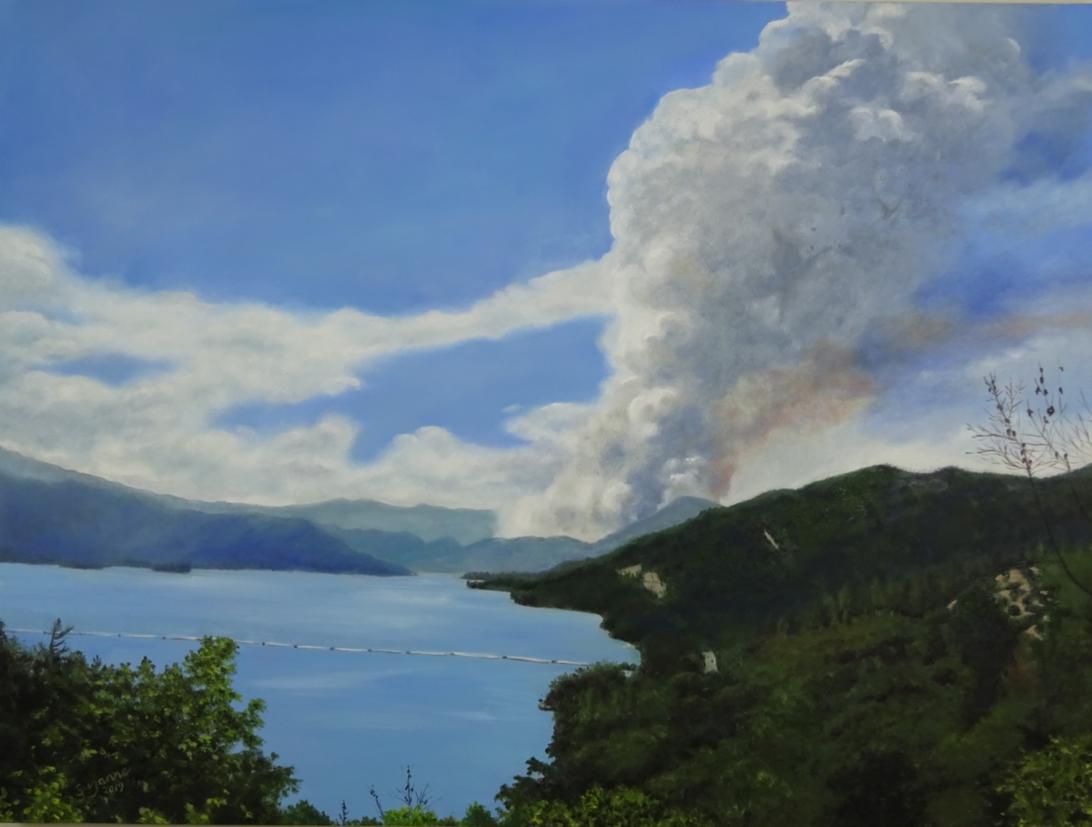
The body of works that we have selected for this special edition of LandEscape and that our readers have already started to get to know in the introductory pages of this article was inspired by the devastating wildfires that raged across California last year, and what has at once captured our attention of your works is the way you sapiently captured beauty in natural environments, providing the viewers with such multilayered visual experience: when walking our readers through your usual setup and process, would you tell us what did direct you to focus an important part of your artistic practice on the theme of landscape?
Suzanne Gibbs: As mentioned earlier, I am very fortunate to spend time and own a home in Shasta County, situated in the beautiful forests and mountains of the Northern Californian landscape. However, because of the dry hot summers over the last 13 years I have seen and experienced the ever increasing wildfires that are of a consequence. Last summer, I almost lost my home along with those of close friends. That year 2018, the Californian wildfire season turned out to be the most destructive and deadliest wildfire season ever recorded in history. Tragically, it burnt an area of 174,000 acres in Shasta County. Consequently, the devastation and destruction of the breath taking landscape and
CONTEMPORARY ART REVIEW
Suzanne
Gibbs scape Land
picturesque environment was transformed. As an artist, I found it very moving and was compelled to urgently record and respond to it. I was really documenting the devastating event, like British artists such as the famous war artist, John Piper and my idol, JMW Turner. It so happens that I am also excited and enthused by my surroundings which are often the greatest inspiration for all artists. Some of my other landscape paintings have been inspired by not just Turner, but by John Martin and Constable’s turbulent skies, and the atmospheric landscapes of American artist Fredrick Erwin Church.
We have really appreciated the vibrancy of thoughtful nuances that mark out your artworks, and we like the way they create tension and dynamics in Fire creeping and in Fire burning bright: how did you come about settling on your color palette? And how does your own psychological make-up determine the nuances of tones that you decide to include in your works in order to provide the viewers with such immersive visual experience?
Suzanne Gibbs: The intense heat, haze and glow emitted by the wildfire gave me the exciting opportunity to mix a vibrant palette of red and yellow hues, often juxtaposed with the silhouettes of intense dark ash. I love to experiment with colour and one of my strengths and my focus as a teacher, was to pass on my knowledge and understanding of its power, persuasion, expression and symbolism. I believe the viewer’s initial response to any painting is an immediate reaction to its colour.
Conversely, in my piece, Ash triptych, with the absence of colour, I have attempted to replace the sensual pleasure of colour with shape, tone and structure. To evoke the deepest feelings and fears of desolation, I used black, grey and white ash, forcing the viewer to remember that moment after the Carr fire, to reflect and respond to it personally and emotionally. I’ve always been a thinker and it’s not enough for me to create work that just copies and portrays. As in the famous quote by Jerzy Kosinski, the Polish American novelist, ‘The principles of true art are not to portray, but to provoke’.
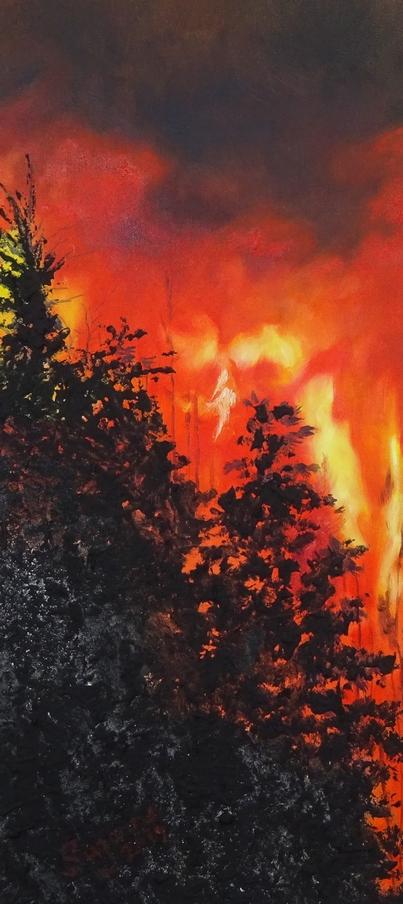
Special Edition scape CONTEMPORARY ART REVIEW Land
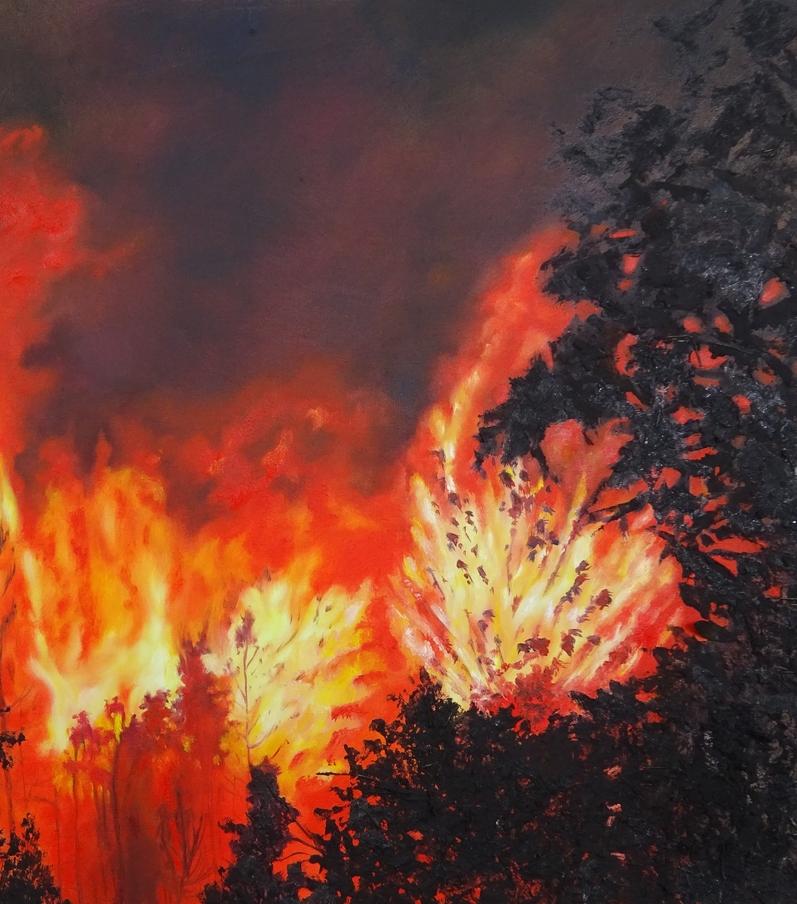
scape Land CONTEMPORARY ART REVIEW
Suzanne Gibbs
Fire burning bright

scape CONTEMPORARY ART REVIEW Land Special Edition
Fire creeping
My other artwork ranges from subtle hue transitions as in ‘cubist trees by creek’, where my intentions were to encourage the viewer to pause, before immersing themselves in a moment of consideration; to question what am I looking at, what can I actually see?
The more representational response, or less stylistic, but expressive paintings of the world around me, are there to invite the spectator to join me in my visual experience.
My more intense and exaggerated palette applied is reserved for the more surreal and imaginative pieces. These works, such as ‘Summer Apple Scrumping’ are creations from my subconscious, where memories of my past or childhood are revisited, allowing the odd self-indulgent moment.
It's important to remark that you used the landscape and tree ash from the fire and mixed it into my oil paints to create textured, emotive and impactful paintings. New York City based artist Lydia Dona once stated that in order to make art today one has to revaluate the conceptual language behind the mechanism of art making itself: do you create your works gesturally, instinctively? Or do you methodically transpose geometric schemes?
Suzanne Gibbs: I believe today it is true that artists are always looking for new and unusual ways to respond to the world around them, often working with a concept, rather than ‘the mechanism’ or practical skill of producing art. Artists have always explored new and innovative resources to work and experiment with and this is often due to having to improvise or by being inspired by a resource provided by nature, objects or the environment. In my case, it was the landscape of ash and there was plenty of it after the Carr fire, last year. The grey, monochromatic blanket of ash resting on the landscape was an eerie site. Despite the devastation and destruction, I found it extremely moving and very inspiring. Compelled to express it, I think you could say it was instinctively, that I then incorporated the ash into my paintings. I had never used this resource before, so the application of it became methodical as I experimented with mixing it into my oil paint as the
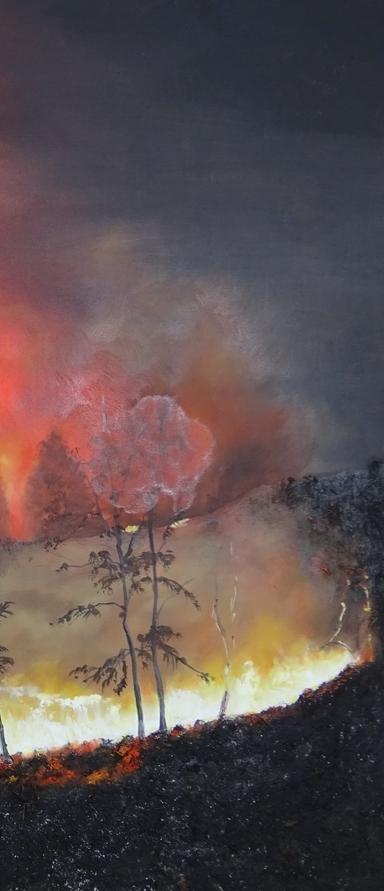
CONTEMPORARY ART REVIEW
Suzanne Gibbs scape Land
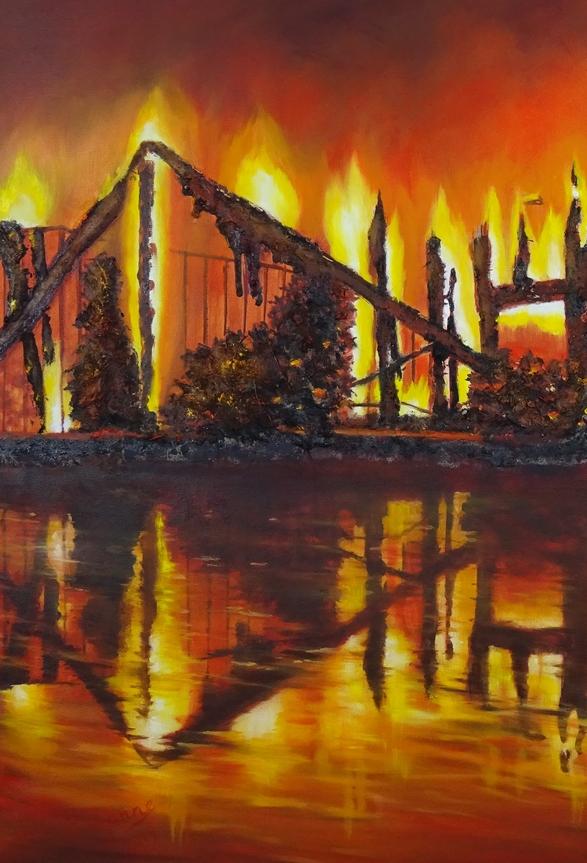
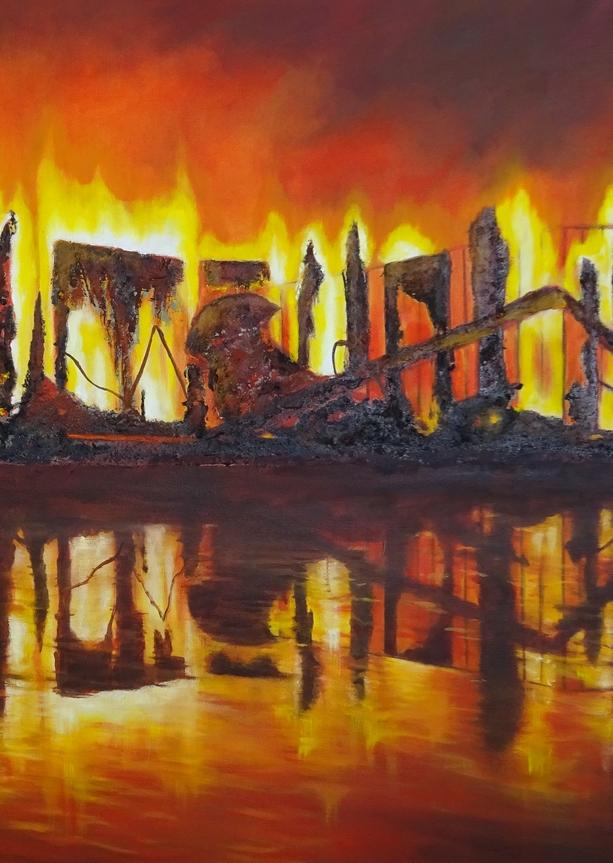
ash fought to extinguish the vibrancy of colour. I began to apply it gesturally to express the wild, ferocious activity of the fire and the transcient textures that resulted.
Your paintings reflect a sense of connection with your surroundings: how does your everyday life's experience fuel your creative process?
Suzanne Gibbs: My sketchbook is like the addition of the modern phone; my personal way of recording and responding to life. As with most artists, drawing is often the beginning of my creative process. Life’s experiences, whether significant moments, events in the past or just every day; they are a part of whom we are. How we react or respond to them, is the significance and what matters. I like to believe as young as I can remember that misfortune, trauma, depression, poverty or loss were temporary and challenges to overcome. I have learnt this from experience. Inwardly, I am blessed with the ability to see the good, the positive and cyclic nature of our surroundings, possessions and life itself. From a literal point of view, as far back as I can remember, when I look at scenes, objects, and even people, I immediately see shape, proportion, colour and tone. It wasn’t until I became an art teacher, however, that I fully realised this. Even today, I find myself ‘air ‘drawing when I don’t have my sketchbook with me.
Recently, I have become very fortunate to live and work in both England and Northern California. In England I am inspired, enthused and motivated by all the London galleries, exhibitions, its artistic culture, history and museums. In California I am compelled to respond, express and attempt to capture, the natural beauty of my surroundings, its awe inspiring wonder and soul. Sketches of people and scenes
As you have remarked in your artist's statement, The Carr Fire brought about devastation and loss, but it also brought humanity together, inflicted challenge and change. It was responsible for so many stories and reports of heroic deeds, of a
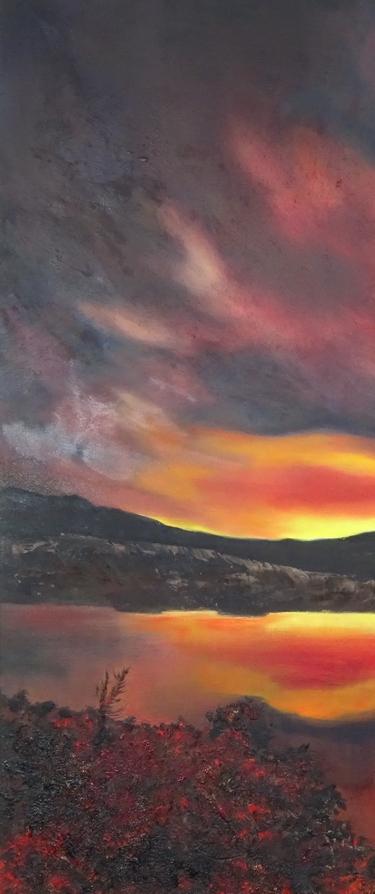
scape CONTEMPORARY ART REVIEW Land Special Edition

scape CONTEMPORARY ART REVIEW Land
Suzanne Gibbs
Whiskey town a light at night
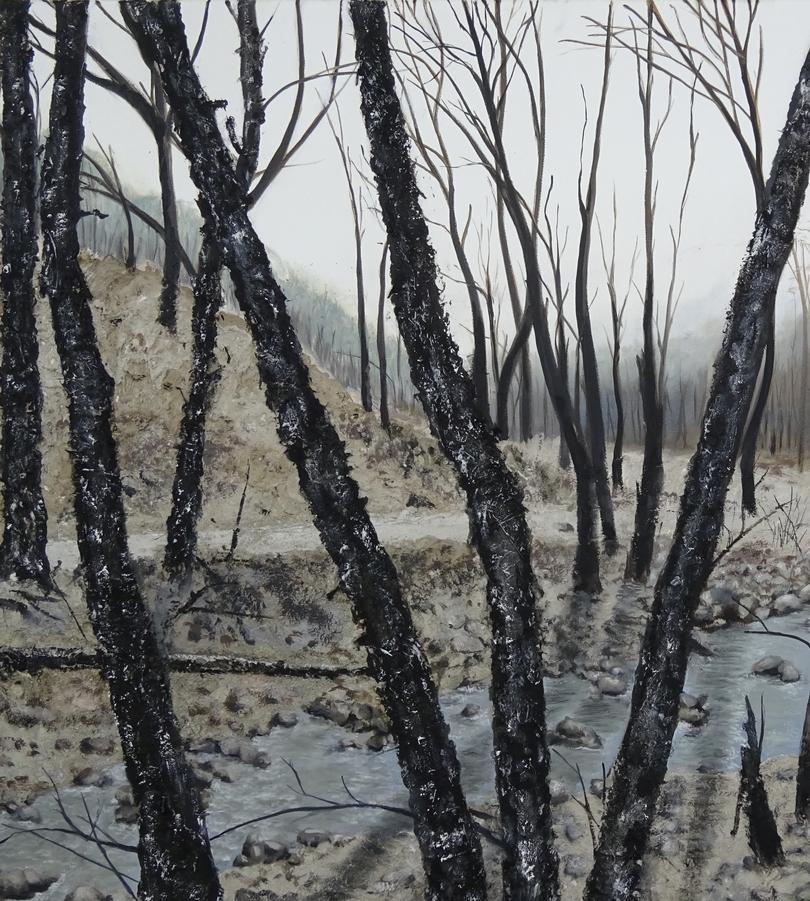
scape CONTEMPORARY ART REVIEW Land Special Edition
The Creek in Relief
community’s strength, resilience, caring and charitable nature. Gabriel Orozco once stated, "artists's role differs depending on which part of the world they’re in": does your artistic research respond to a particular cultural moment? In particular, do you think that artists can raise awareness to an evergrowing audience on topical issues, as sustainability and environmentalism, in our globalised age?
Suzanne Gibbs: I totally agree with Gabriel Orozco. From a superficial point of view, had I not been living in the area and experienced the Carr fire in Northern California last year, I would not have been compelled to create an exhibition on it. After the Carr fire, I couldn’t stop thinking about the devastation, the trauma and personal loss that people close to us were experiencing. I felt a desperate need to respond to it and to raise money for the local Red Cross. Wildfires are increasing in length and destruction. Although California fires are natural and many of its ecosystems evolved to burn frequently, however, according to the National Geographic, over the last 20 years the wildfires are significantly increasing in size due to climate change. This topical issue is definitely something that my artwork addresses and fortunately with the help of LandEscape, will become more accessible to a greater audience.
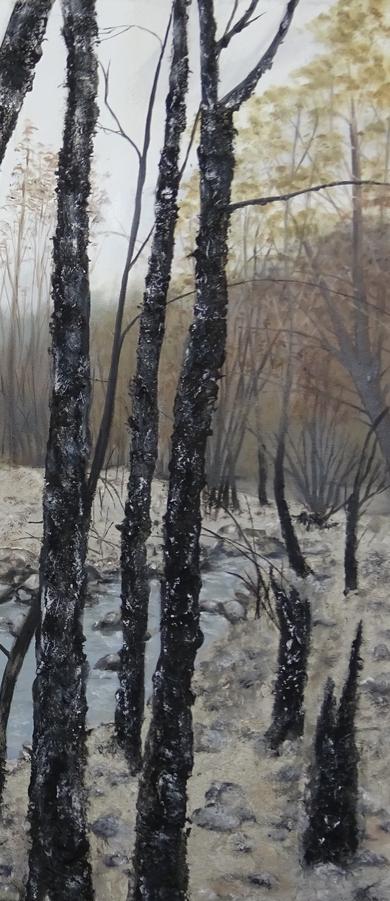
Since time began artists, writers, philosophers and performing artists, despite repercussions, have taken a stand against injustice, oppression, political, religious and social conditions. For example Goya, Turner, Hogarth, The German Expressionists, to name a few. Unfortunately, not everywhere around the world respects freedom to expression and today there are many contemporary artists in exile as a consequence. Artists such as the Iranian artist and filmmaker, Shirin Nashat, the famous Chinese artist Aiwei Wei, Lebanese artist Mona Hatoum and Korean artist Sun Mu.
With their unique visual identity, your artworks feature such a powerful combination between figurative reference with effective expressionistic
CONTEMPORARY ART REVIEW
Suzanne Gibbs scape Land
Green Trees diptych
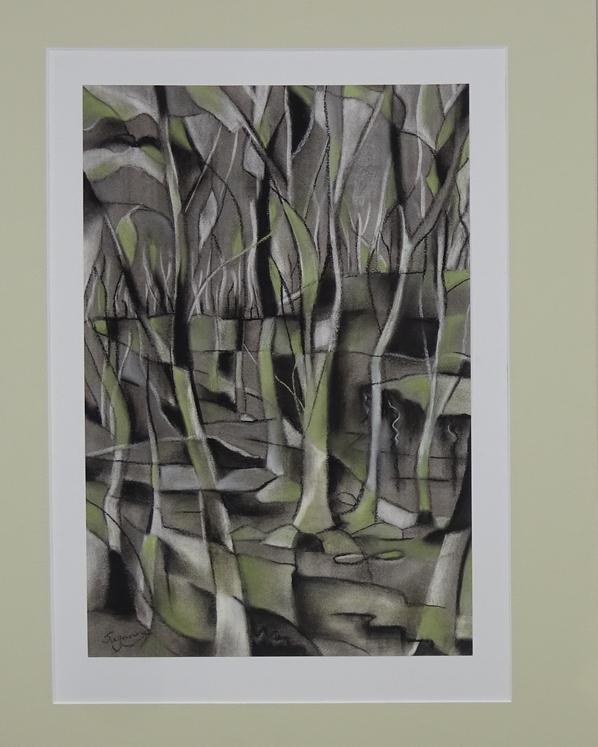
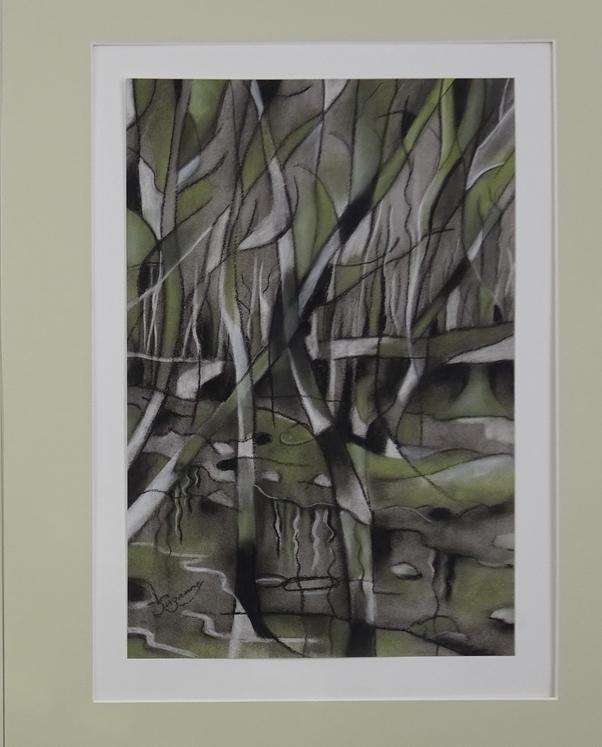
qualities, to challenge the viewers' perceptual parameters and inviting them to capture the hidden beauty in such torment and destruction: we daresay that your artistic practice seems to aim to look inside of what appear to be seen, rather than its surface, providing the spectatorship with freedom to realize their own perception. Austrian Art historian Ernst Gombrich once remarked the importance of providing a space for the viewers to project onto, so that they can actively participate in the creation of the illusion: how important is it for you to trigger the viewers' imagination in order to address them to
elaborate personal interpretations? In particular, how open would you like your works to be understood?
Suzanne Gibbs: Although it’s extremely important to me to trigger the viewer’s imagination in all my artwork, some pieces obviously provide a greater freedom to actively participate in the creation of the illusion than others. For example, ‘Abstract Moment’ The Ash triptych, from the Carr fire exhibition, is more subtle but equally evokes different responses, depending on the viewer’s imagination. I would like to think my unique
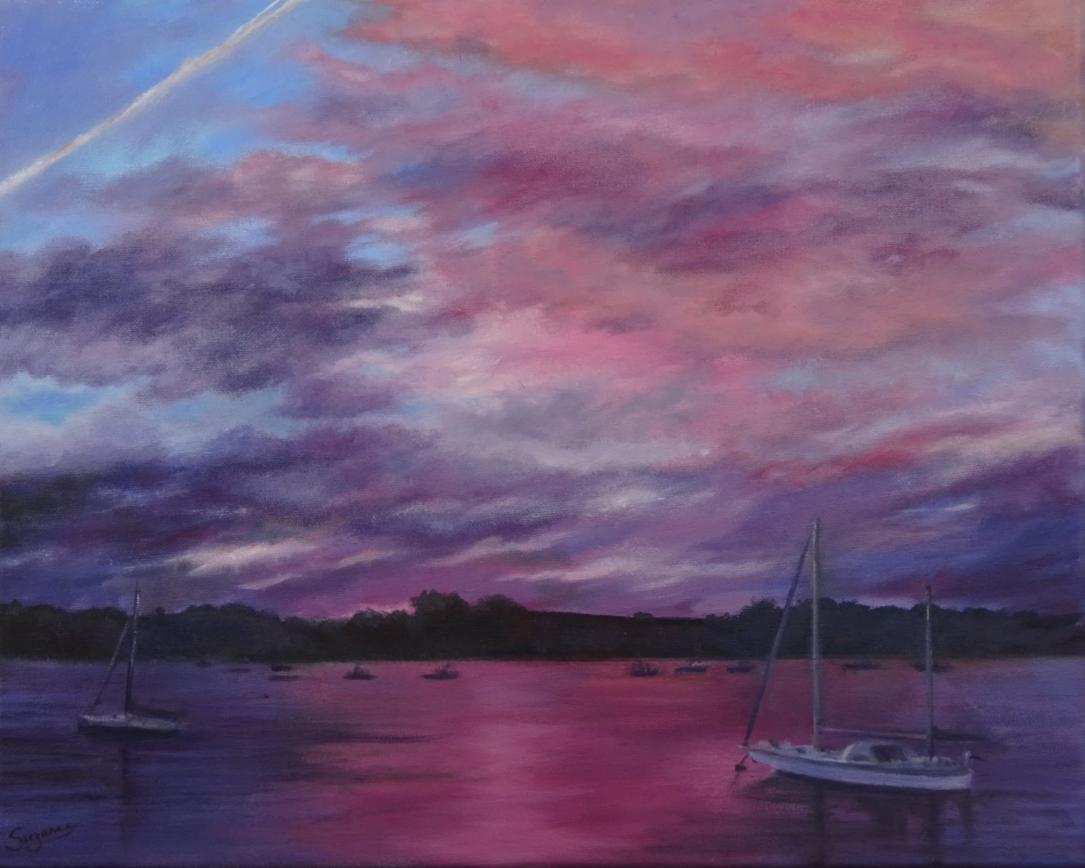
Special Edition scape CONTEMPORARY ART REVIEW Land
River Medway, UK
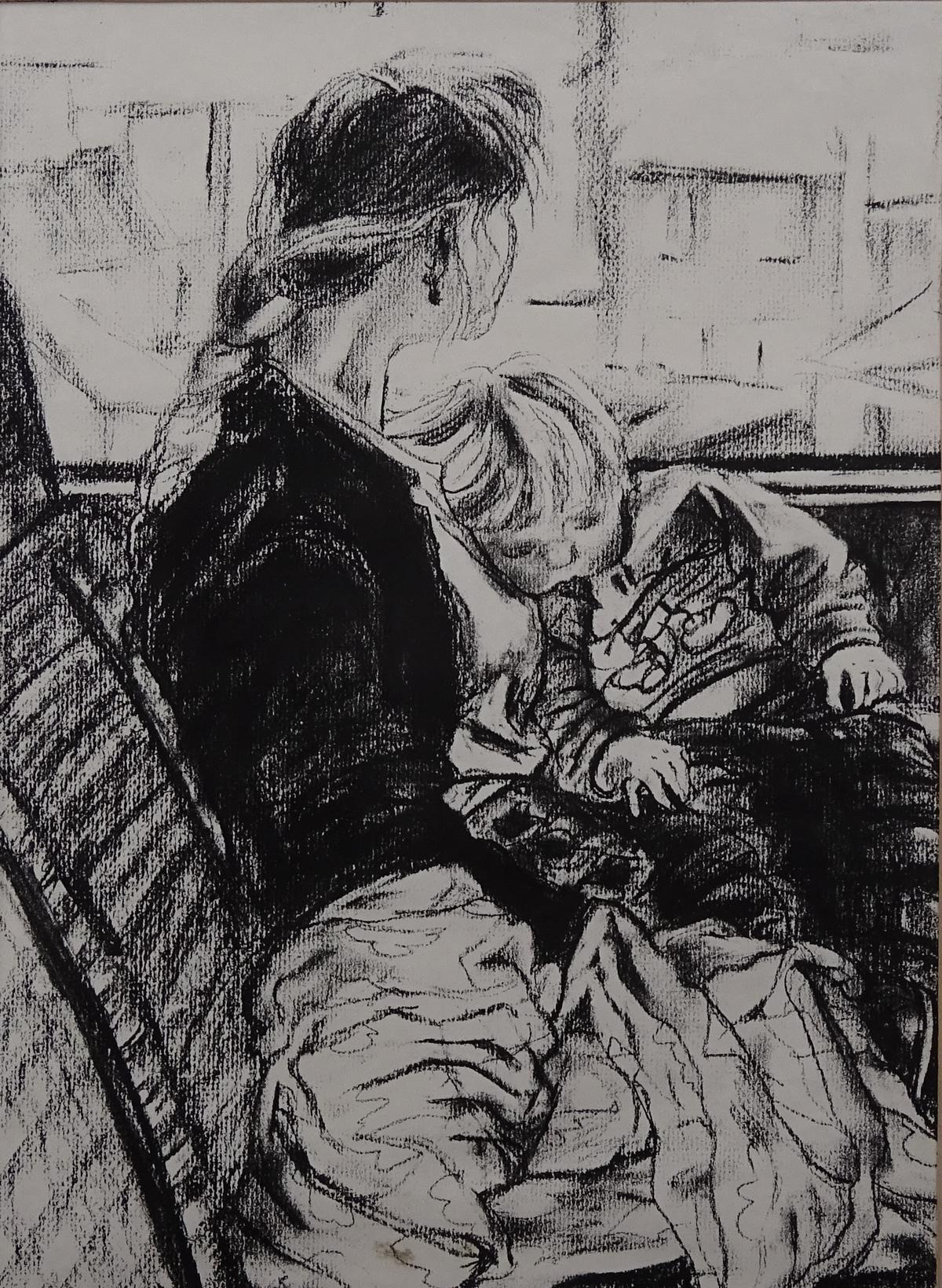
Journey
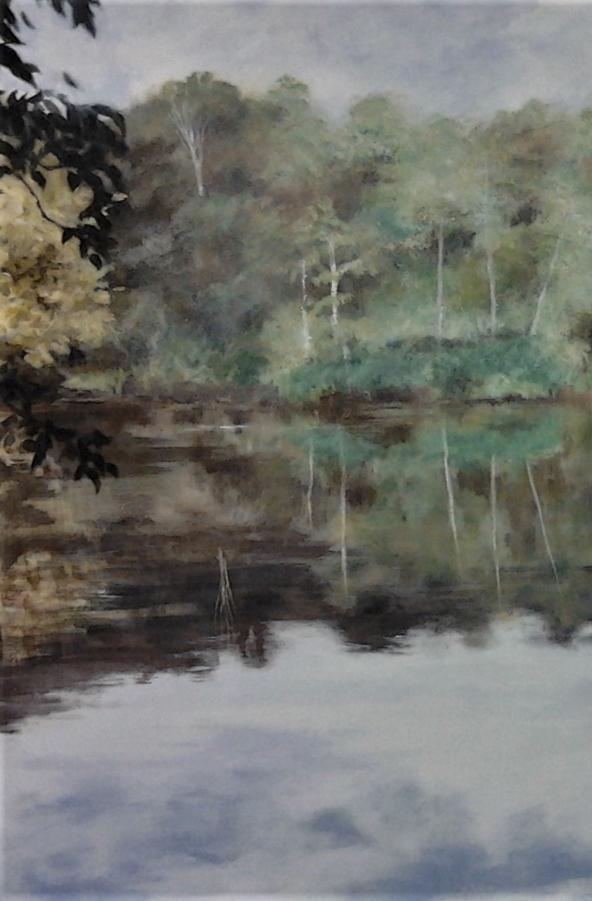
Surrey UK
Lightwater,
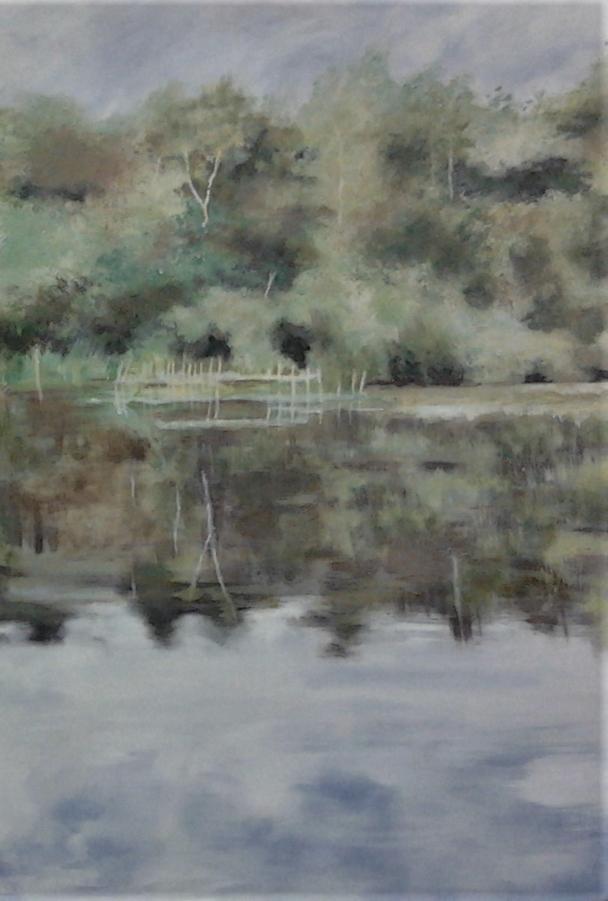
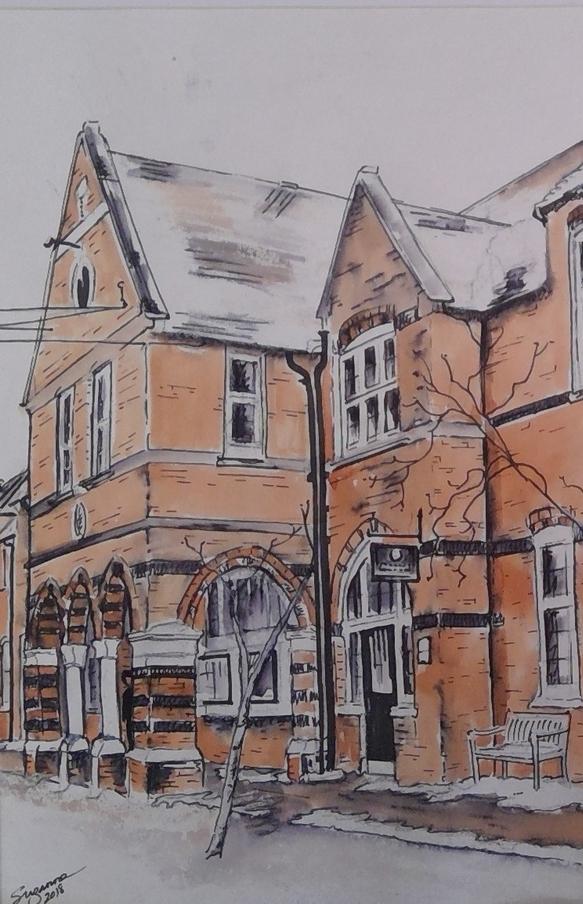
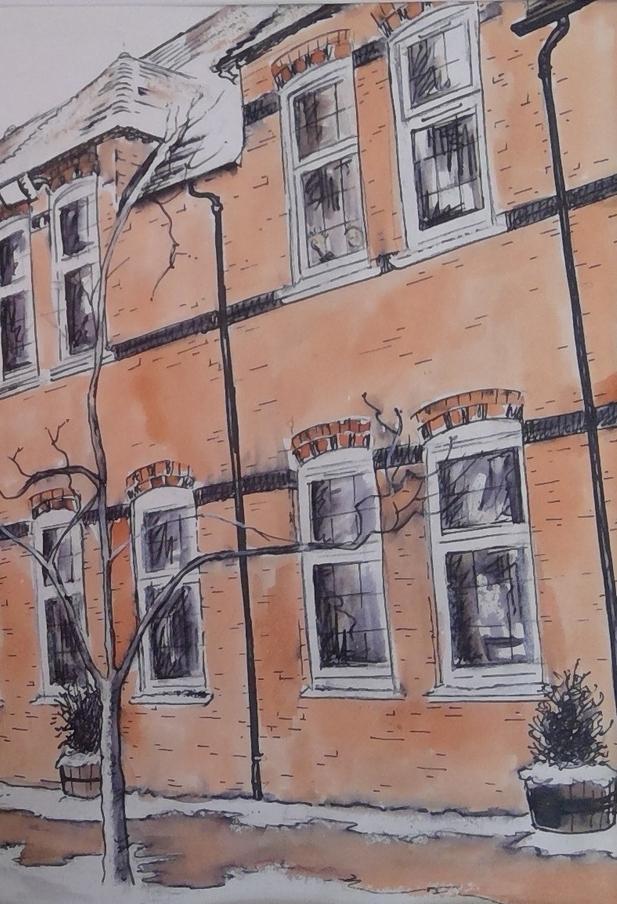
Gravesend
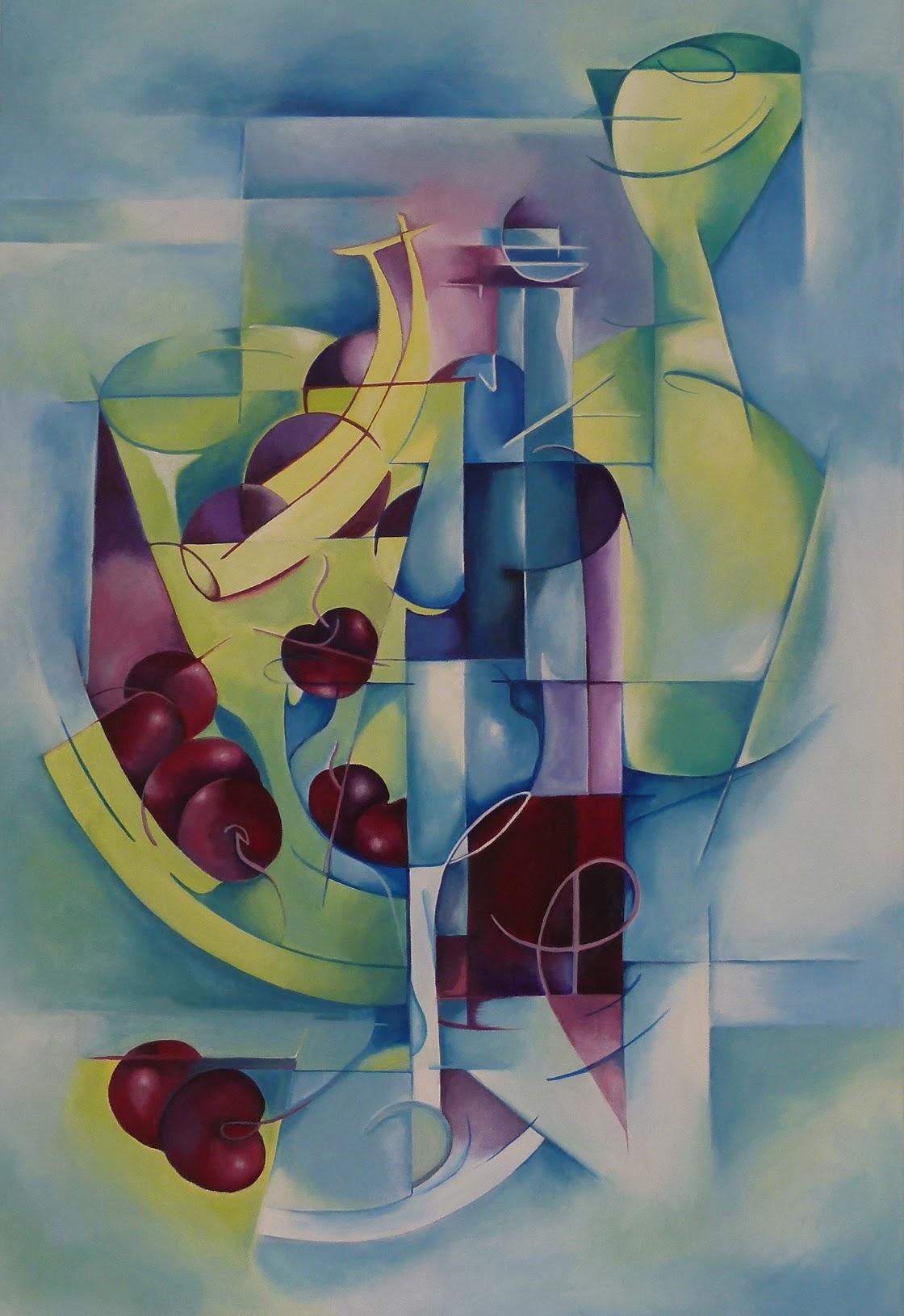
and Wine
Fruit
technique and the absence of colour allows for personal interpretations. When I applied the ash I had collected from around my property to my black canvases, I intentionally erased the ash, (using an eraser), to strip away at the painting. This was to give it form, structure, bone and shadow, as if I were revealing the black, resilient darkness of nature. The white ash I left on the surface, contrasts to highlight its beauty, fragility and innocence. The personal message I wanted viewers to consider was how our surroundings, possessions, nature and life itself is so temporary. I
want the viewer to understand that change can be cyclic and like the butterfly painting titled Rebirth, whether the viewer believes there is an end or not, we cannot escape the inevitable transformation of our personal existence.
Over the years your artworks have been showcased in several occasions. French artist Edgar Degas, once said that “Art is not what you see, but what you make others see": how do you consider the nature of your relationship with your audience? By the way, as the move of Art from
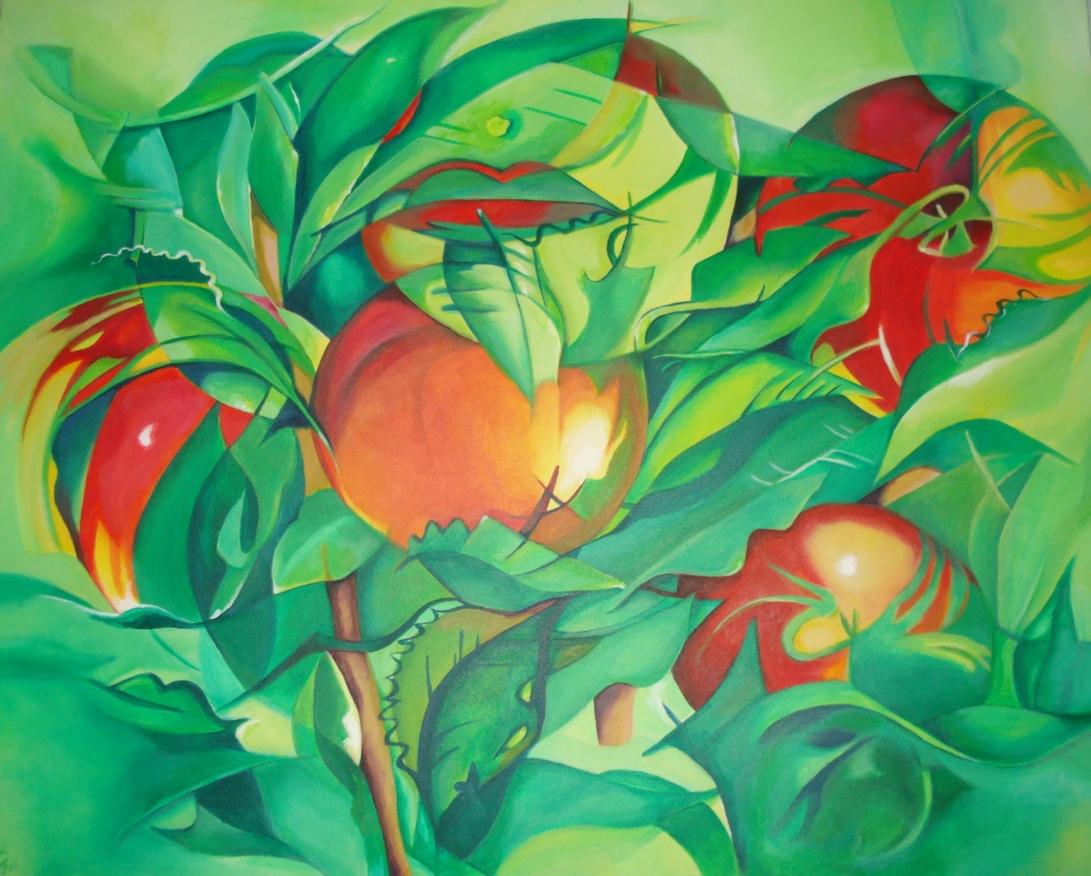
CONTEMPORARY ART REVIEW
Suzanne Gibbs scape Land
Summer Apple Scrumping
Abstract Moment
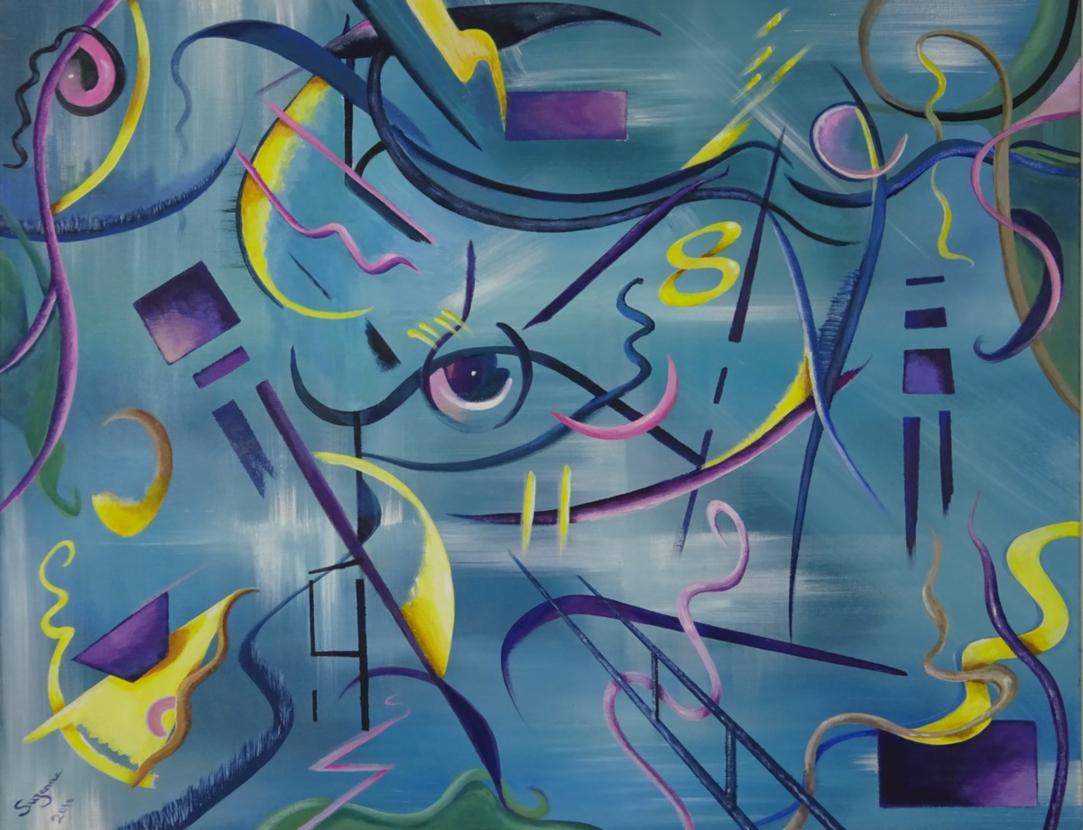
traditional gallery spaces, to street and especially to online platforms — as Instagram — increases, how would in your opinion change the relationship with a globalised audience?
Suzanne Gibbs: Degas spoke wise words and I have often used that quote in the art room with my art students. However, I’d like to add that, depending on one’s interpretation of the word ‘see’, it’s important to also consider as an artist, how we can make others feel. This may be as subtle as evoking a mood, enticing a memory to encouraging an emotive response. Following my exhibition on at the moment, Assistant Curator,
Amanda Kramp wrote on a blog: ‘Suzanne has managed to capture the disastrous tragedy and transform it into a hauntingly beautiful tribute. The exhibition is a poignant testimonial to the devastation of the Carr fire, as well as the resilience, strength, and humanity that flooded in the wake of that tragedy.’
People who viewed the exhibition, responded with comments like, ‘The picture with Norm watching the fire unaware of what was coming broke my heart’, Bonny Mcconnell and the portrait of Lou White who stayed behind to fight the fire, trapped for 18 days, said he cries when he
scape CONTEMPORARY ART REVIEW Land Special Edition

scape Land CONTEMPORARY ART REVIEW
Suzanne Gibbs
Autumnal Tree
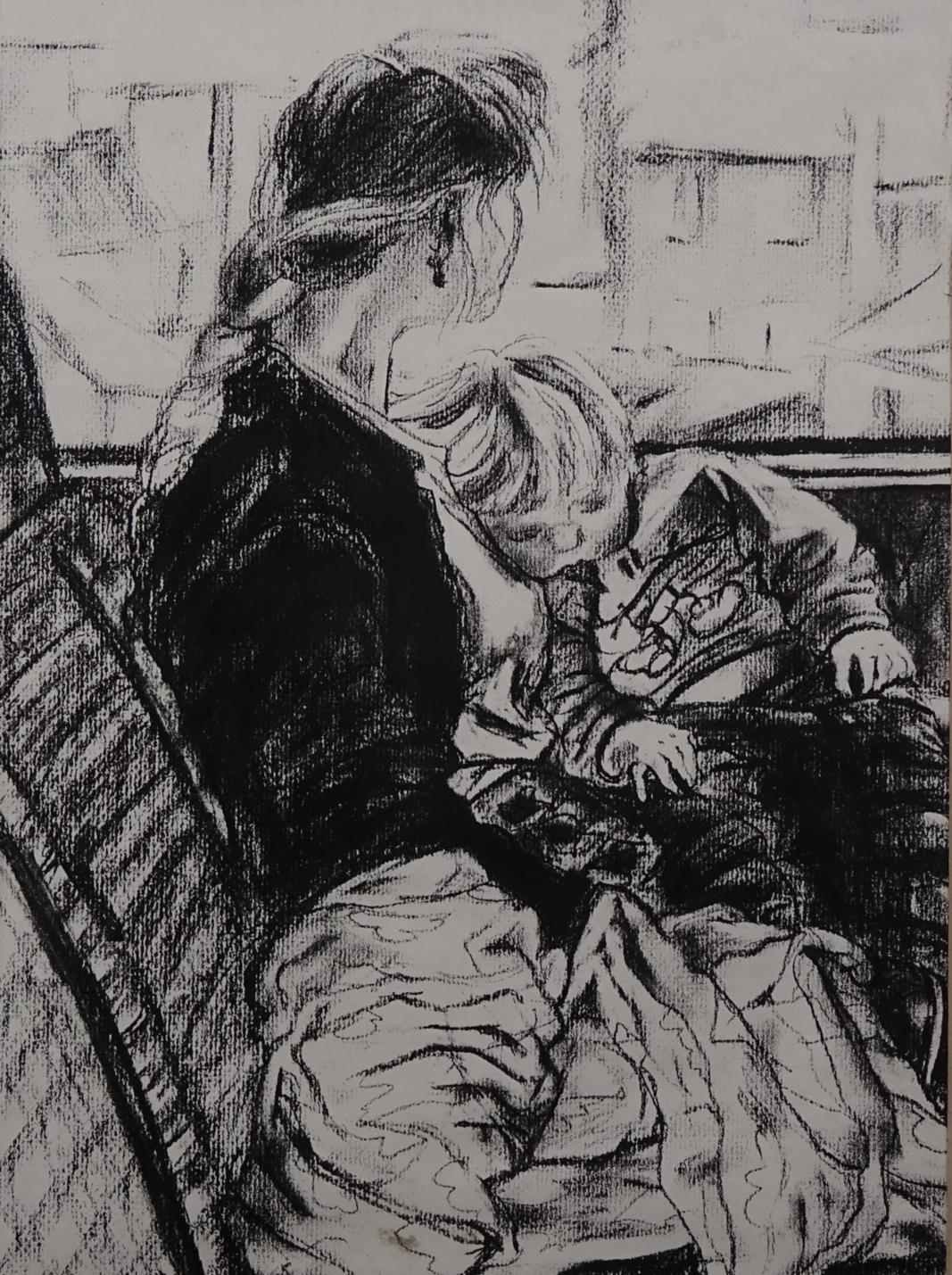
Land scape CONTEMPORARY ART REVIEW Special Edition Journey
looks at his portrait of distress and despair. Although these pieces can still be appreciated as images, they and the rest of the ash on canvas paintings need to be seen at first hand in order to appreciate the application of the ash, its multi layered surface and its texture. The scale of the paintings also add to their impact, which is impossible to experience, when viewing artwork in a magazine or online. My art students were often disappointed when they finally saw the Mona Lisa at the Louvre for the first time, merely because they expected it to be much larger. Some artworks depend on scale to create an impact, for example David Hockney’s exhibition, ‘The Bigger Picture’, Monet’s famous water lilies and the paintings of Rothko.
What technology does do wonderfully well, however, is make art accessible to all walks of


life. It reaches people who don’t have the time, practical or intellectual abilities to visit galleries. It can also break down the political, religious and social barriers. It can reach a much wider audience in a fraction of time. My feeling is if one does have the opportunity to view artwork live, it should be taken in order to fully appreciate its scale, texture and true colour.
All these visual elements are important parts of a painting. Some art installations and conceptual art depend on being viewed in a gallery. Duchamp’s inverted urinal, ‘fountain’ would not only lose its powerful message and meaning, but would have never inspired future installations or conceptual artwork, like Tracey Emin’s ‘Unmade Bed’, that totally relied on the Tate Modern’s environment for its impactful message.
scape Land CONTEMPORARY ART REVIEW
Suzanne Gibbs
Rebirth
Impending doom
We have really appreciated the multifaceted nature of your artistic research and before leaving this stimulating conversation we would like to thank you for chatting with us and for sharing your thoughts, Suzanne. What projects are you currently working on, and what are some of the ideas that you hope to explore in the future?
Suzanne Gibbs: Although I am focusing at the moment on publicizing my 3 month solo art exhibition (on the Carr Fire, which closes at the end of October), I have begun preparing for a piece that is closer to home. Very recently my sister was diagnosed with endometrial cancer and is undergoing chemotherapy. She has lost her hair, but is taking it well and has gladly agreed to be the focus of my next body of work. I will work from direct observation, from initial sketches and painted portraits to compose a final, impactful portrait.
My intention is to find a way of using her hair in a creative, subtle way, incorporating it into a striking powerful piece. If I manage to succeed and attach a personal, yet universal message I will then enter it into the National BP Competition. I am also going to be working towards a solo 2 month Art Exhibition for the Bedford Gallery, at the Library in Walnut Creek, (CA USA) for 2020. The exhibition will focus on the effects of global warming; the increasing size and devastation of CA Wildfires. This is inspired by another wildfire, the Camp Fire, in Paradise, CA on Nov 8th last year. The Camp Fire was the deadliest and most destructive wildfire in California history. It is also the deadliest wildfire in the United States since the Cloquet fire in 1918 and is high on the list of the world's deadliest wildfires;
The purpose is once again to raise awareness and help donate money to the Red Cross Charity. This is following the great success of the current 3 month Carr Fire exhibition, where 50% of the sales are going to the Red Cross. I’ve currently sold 10 of the 15 paintings since it opened, with over 2 months still to go
An interview by Ralph Landau, curator and Katherine Williams, curator landescape@europe.com
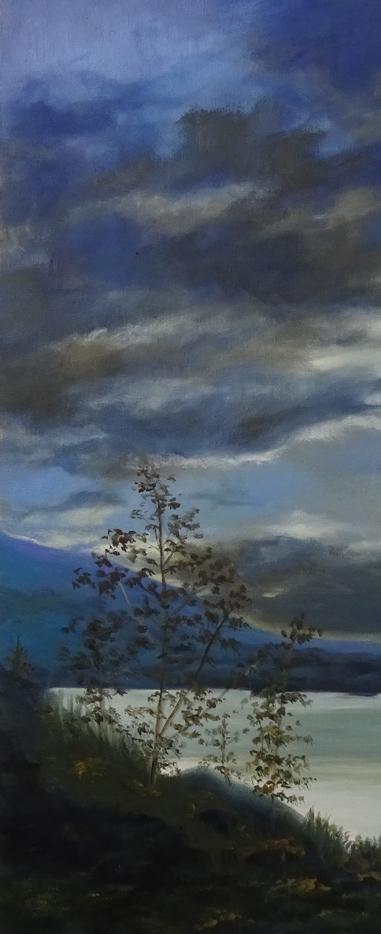
scape CONTEMPORARY ART REVIEW Special Edition Land
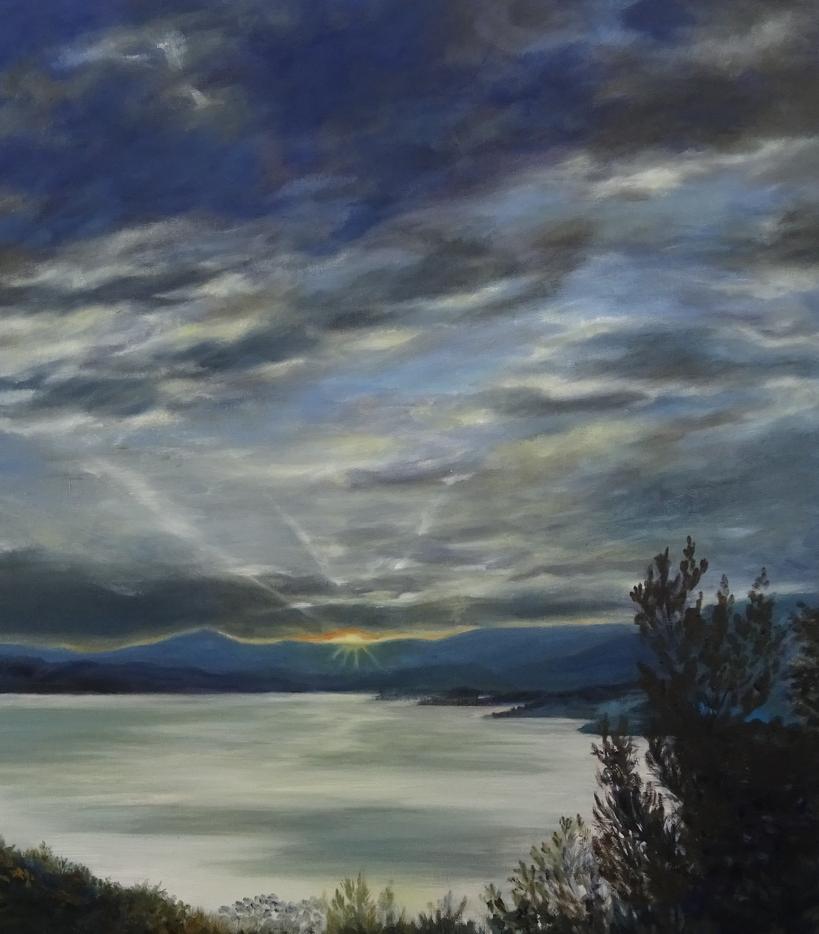
scape Land CONTEMPORARY ART REVIEW
Suzanne Gibbs
Whiskeytown Lake, CA, USA
LandEscape meets
Kayla Hunnicutt
My process begins with the moment. The energy, the emotion, a thought or a message. A vision arises in my mind, then I take that image and convey it with acrylic paint on stretched canvas for a final piece that encapsulates everything from that instance. I use a technique I named fluid fractal where I manipulate the paint with breath, essentially breathing life into it.
Fluid fractal is used as representation of energy just like vivid colors are influences to the emotion. There’s a deep, profound love of the universe and the intricacies within it that pushes me to create with a humanitarian intent. Art is meditation for myself and universal communication.
Where words fail, art will prevail.
C. Hilborn, curator landescape@europe.com
Hello Kayla and welcome to LandEscape. Before starting to elaborate about your artistic production we would like to invite our readers to visit https://fromaquarianhands.wixsite.com/k
aylahunnicutt in order to get a wide idea about your multifaceted artistic production, and we would start this interview with a couple of questions about your multifaceted background. You have a solid formal training and you
attended art classes in middle and high school: how did those formative years influence your evolution as an artist? Moreover, how does your cultural substratum direct the trajectory of your current artistic research?
Kayla Hunnicutt: I wouldn’t say solid formal training but self-taught. Art classes in schools do a great job of introducing the basics in middle school while it’s more historically motivated in high school, however they lack allowing the full creative capabilities that an individual might possess due to the limitations of each project. Middle school we were
scape Land CONTEMPORARY ART REVIEW
An interview by Josh Ryder, curator and Melissa
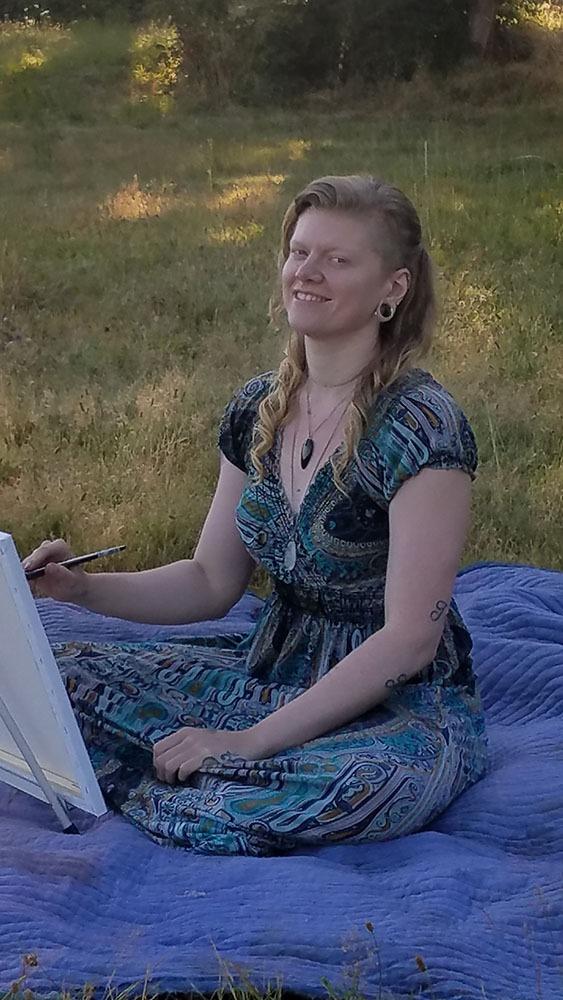
Strength to Release
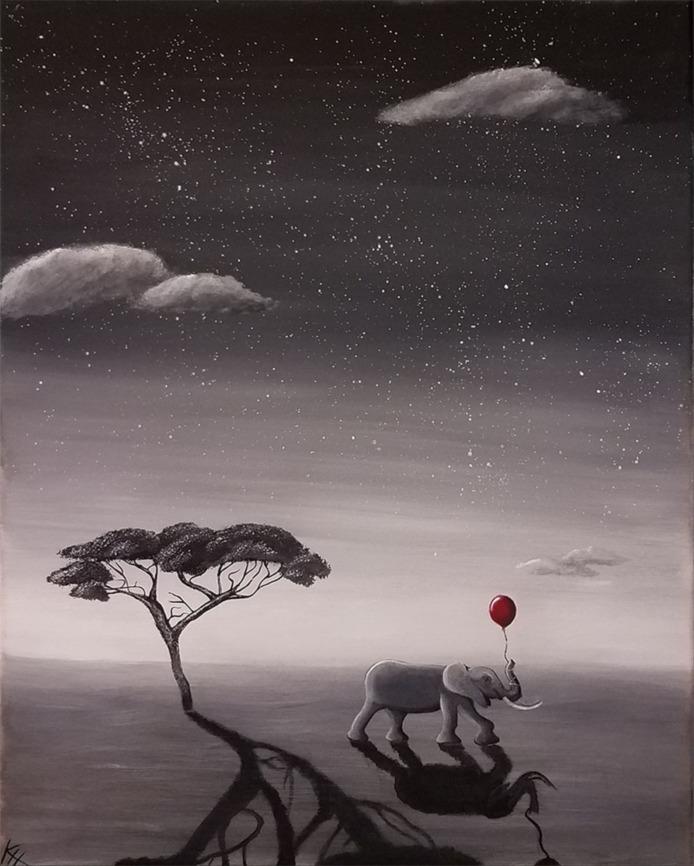
Special Edition scape CONTEMPORARY ART REVIEW Land
literally shown the difference in lines alone, very elementary projects. High school was where I learned the different styles of art throughout the years and getting the opportunity to try out everything from pencil to paint and spray paint, even dabbled in ceramics. Ultimately, painting was not something I fully grasped until 2018 when a friend had gifted a pack of stretched canvases to me. The next day my fiancé bought me acrylic paint and Enter the Fractal was created shortly after.
My cultural substratum is non-existent but did not leave me without a good foundation. I was built on good morals, a love for life and living beings and an understanding of different aspects of life by having been through impactful events. Loss is a hard one to get past, and I experienced it young with my family cat, my great grandfather then lastly my great grandmother, all by 5�� grade. That really started to transpire into something it shouldn’t have been at the time, which was a dark place called depression. My story continued and everything that happened beyond only proved my worth to press on and it built that desire to share a more inspirational view of this crazy journey we call life. I have a loving and supportive mother and father that both taught me so many lessons that positively impacted the person I have become. Because of them and other great influences in my life, it fanned the flames
of what was to be the drive towards my current artistic research.
The body of works that we have selected for this special edition of LandEscape has at once impressed us of for the way your insightful exploration of the tension between figurative subjects and such compelling dreamlike atmosphere, as you did in the interesting Strength to Release and Feeling Blue, that our readers have already started to get to know in the introductory pages of this article: when walking our readers through your usual setup and process, would you tell us how do you usually develop the initial ideas for your artworks?
Kayla Hunnicutt: Well, back in 2014, I started my own study of the metaphysical, chakras and the energy which encompasses everything around us and I wanted to share the vision there’s more to life than meets the eye. Through lots of meditation and self-exploration I realized the potential of the validity in what I was reading. Putting it to use, I balanced my chakras and opened my third eye, allowing me to explore a realm beyond only what is seen. For Feeling Blue I envisioned a common scene, a basic cityscape, and I added my own abstraction to the moon as a portrayal of the energy emitted. See in the light, feel in the night. Strength to Release was a lighthearted, fun image as a whole, but, more intricately was allegorically
CONTEMPORARY ART REVIEW
Kayla Hunnicutt scape Land
influenced. The background sets the setting, the tree is growth, the elephant is strength and the red balloon represents the angst we as humans have. In this instance the balloon is hate, anger, past regrets that hang around that we don’t let get too far. It’s easier to be angry than to be at peace with things. What we don’t see is that we get further from growth when we refuse to let it go.
I’m driven by enlightenment and humanitarian views. Every individual has the power to make themselves better,
and starting with yourself, the world could transpire into something greater, think Lumen Octave.
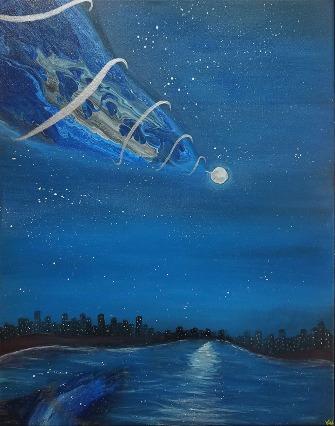
Meticulously refinished in their details, your artworks has struck us for the way you sapiently conveyed effective combination between spontaneity and with such unique rigorous aesthetics. New York City based artist Lydia Dona once stated that in order to make art today one has to reevaluate the conceptual language behind the mechanism of art making itself: do you create your works gesturally,

Special Edition scape CONTEMPORARY ART REVIEW Land
Feeling Blue
Mirage

Kayla Hunnicutt scape Land CONTEMPORARY ART REVIEW
Cityscape
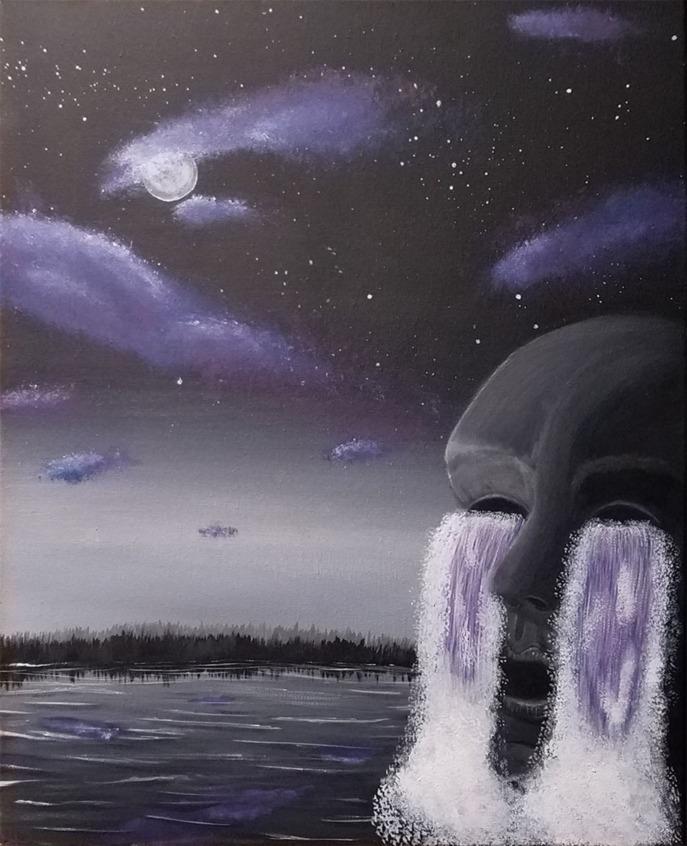
scape CONTEMPORARY ART REVIEW Land Special Edition
Gift of Tears
instinctively? Or do you methodically transpose geometric schemes?
Kayla Hunnicutt: Instinctively, no doubt. For example, Clouds on a String was thought up when I saw a cloud that looked like a bunny and somehow combined it with the song World on a String by Frank Sinatra. I thought, wouldn’t it be cool to have clouds as kites? To be able to hold on to something that’s so distant, but still in your control? It’s not possible, but that’s what makes it possible in art. Most paintings were a spur of the moment, like
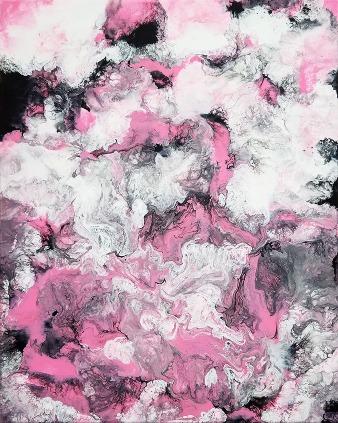
most of my abstract works, while the more surreal imagery is almost like a premonition. I see it in my head and reconstruct it directly to canvas. Pre drawing my paintings is more of a distraction and is just something I won’t do. The shapes are much more alive when each stroke of the brush slowly sews it all together. The end result can sometimes even be a surprise to me, that’s why most of my paintings are named after completion. My art is spontaneous.
We have really appreciated the vibrancy
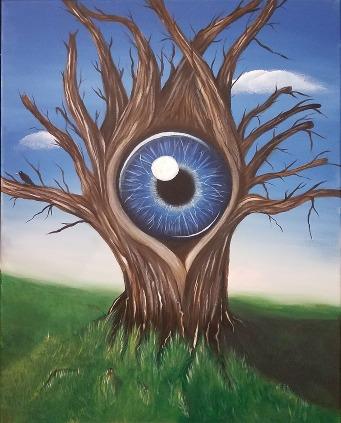
CONTEMPORARY ART REVIEW
Kayla Hunnicutt scape Land
Dance
All Seeing Tree 2
of thoughtful nuances that mark out your paintings, and we like the way you sapiently create tension and dynamics in Cityscape and Mirage: how did you come about settling on your color palette? And how does your own psychological make-up determine the nuances of tones that you decide to include in a specific artwork and in particular, how do you develop your textures?
Kayla Hunnicutt: The color palette was determined by its representation. The fun of teal, the life of yellow, the grounded brown. Cityscape was maneuvering of paint with quick strokes of a palette knife. Mirage was slightly Salvador Dali inspired with the desert setting being the most influential for the color choice. Red has a sense of mystery and intrigue while the yellows and the browns keep it natural and real. When picking color palettes it’s accomplished by feeling. Understanding the story behind what I’m painting as well as feeling what the story tells. It’s a very intimate experience to live the painting before it’s painted. Psychologically, it’s known that colors can influence a person’s mood and by tuning that in, emotion is direct and prominent.
Acrylic paint has an array of manipulations that can be used for actual texture, like building paint up
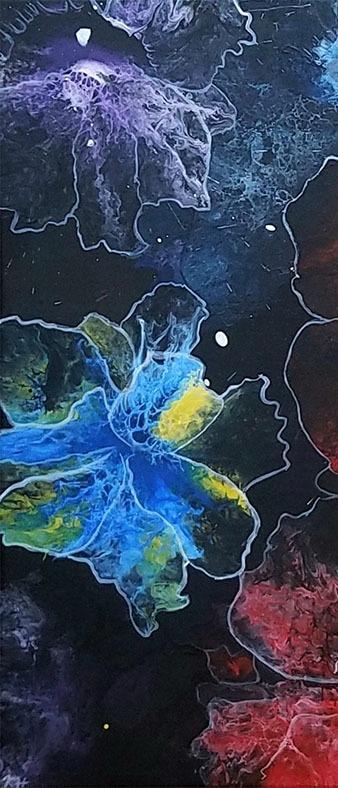
scape CONTEMPORARY ART REVIEW Land Special Edition

scape CONTEMPORARY ART REVIEW Land
Kayla Hunnicutt
Fractal Flowers
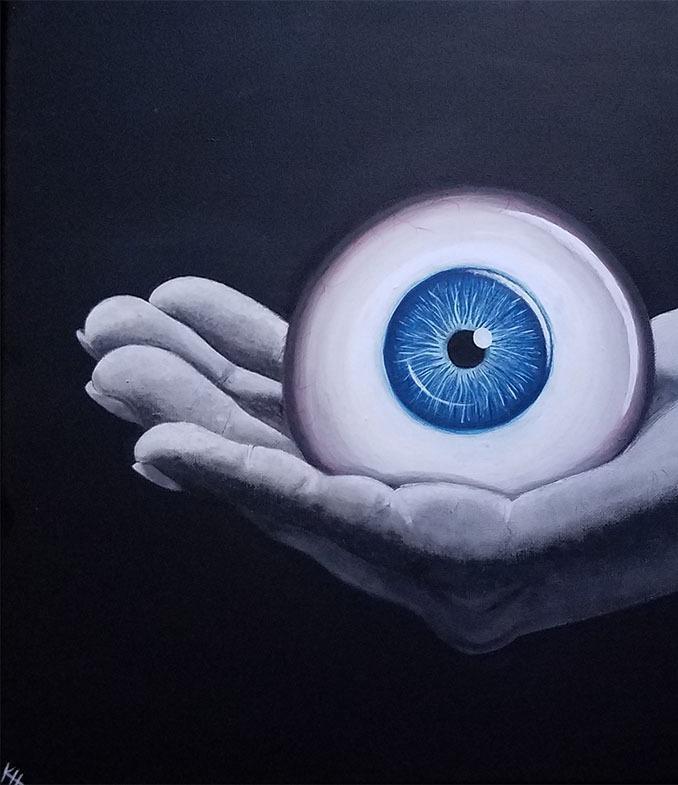
scape CONTEMPORARY ART REVIEW Land Special Edition
The Eye in the Hand
with a palette knife. When what is being painted, like the hollow figure in Mirage, it resembles wood because of the multiple lines that make up the different elevations of the bark, to create the look of wood texture. The flying eyeballs are much more blended so as to come across smooth. Cityscape was created to get the sharp angles and lines as well as the scattered blending and layering so as to create a choppy and fast paced appearance.
With its powerful narrative drive, your style is both figurative and rich of surrealistic atmosphere, that marks out Gift of Tears, providing it with recognizable identity: how do you consider the relationship between the real and the imagined playing within your artistic practice?
Kayla Hunnicutt: What’s real is real but what’s unreal is still real, just unseen. Gift of Tears was a zodiac painting to start. The purple color on monochrome with the face crying life as you can see for the trees in the distance. Gift of Tears was Aquarius, the water bearer. From the Aquarians gift of water comes life. It could also be interpreted to represent the emptiness we experience in our sorrow. Defining the “real” as anything that all individuals perceive and the unreal as that that isn’t, to me it’s all real. It’s showcasing imagery in a fun and interesting angle so as to share an
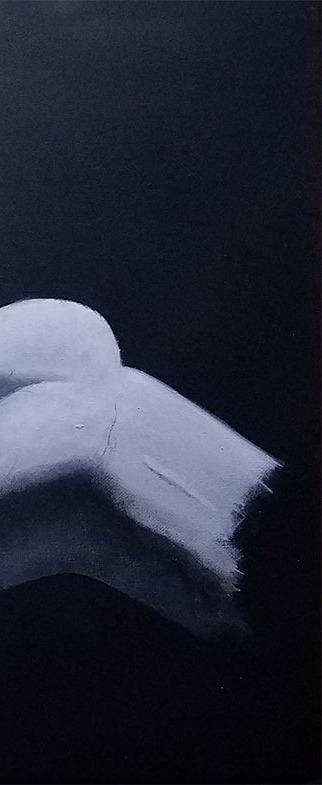
CONTEMPORARY ART REVIEW
Kayla Hunnicutt scape Land
enlightened vision. Combining life experience with abstract thinking is an opportunity to realize that we can’t see everything, that’s why it’s interpretations. The other aspect of merging the real with the unreal is to provoke viewers to question it. Everybody should question everything, that’s how we learn and grow and truly learn to encapsulate the full life experience.
With its unique visual identity, Fractal Flowers challenges the viewers' perceptual parameters, inviting your audience to discern and interpret. In this sense, we daresay that your artistic practice seems to aim to look inside of what appear to be seen, rather than its surface, providing the spectatorship with freedom to realize their own perception.
Austrian Art historian Ernst Gombrich once remarked the importance of providing a space for the viewers to project onto, so that they can actively participate in the creation of the illusion: how important is it for you to trigger the viewers' imagination in order to address them to elaborate personal interpretations? In particular, how open would you like your works to be understood?
Kayla Hunnicutt: I agree with Gombrich in that statement. Having space for viewer projection and interpretations is as much fun as it is important. When creating Fractal Flowers I was barely even using
brushes yet, it was actually the second painting I had completed. The joy of designing on a whim, this painting opened my eyes to that notion that this could be looked at in so many ways and that made it even more interesting to me. It’s very important to have that room for interpreting, otherwise it loses that appeal and desire to connect with it. It’s exciting as a viewer too, to look upon a masterpiece and almost start a hidden object game. Imagination should be practiced by every being, it opens a lot of doors when you can allow yourself to branch out from the mundane.
Art is to be shared and cherished by more than just the individual creating it. Imagery itself is powerful and leaving room for interpretation is a top must when spreading a little light is the least you’d like to accomplish. Particularly, I’d hope my works are viewed openly. It’s what connects myself to the real world and the world to me, in a way.
We have appreciated the way you develop the expressive potential of symbols, as the eyes that you included in Waterfall, All Seeing Tree, Third Eye and The Eye in the Hand: how important do symbols and metaphors play in your artistic research? In particular, how important is it for you to create artworks rich of allegorical qualities?
Kayla Hunnicutt: My direction in my artistic research is focused on strong use
Special Edition scape CONTEMPORARY ART REVIEW Land

Hunnicutt scape Land CONTEMPORARY ART REVIEW
Kayla
Waterfall
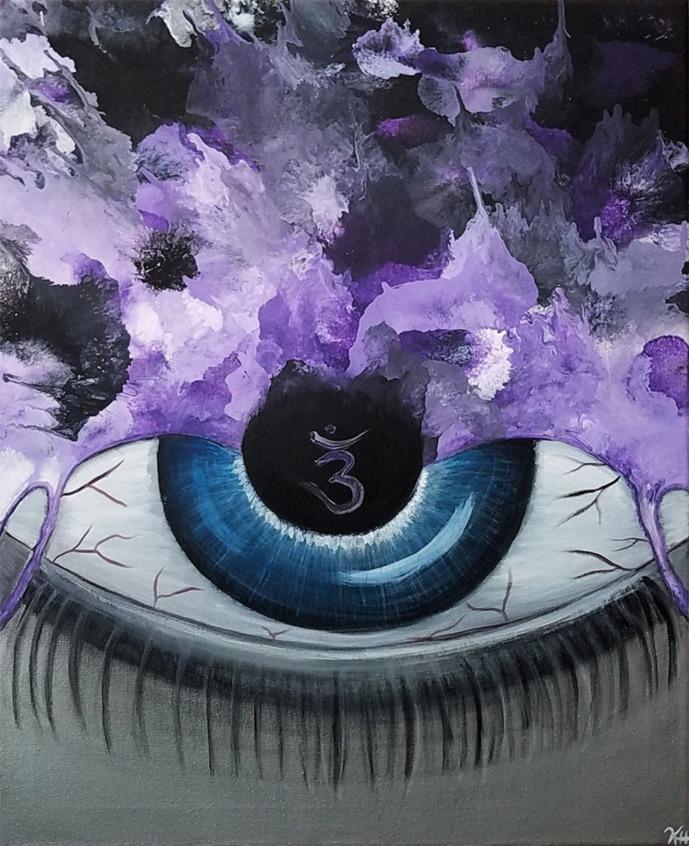
scape CONTEMPORARY ART REVIEW Land Special Edition
Third Eye Chakra
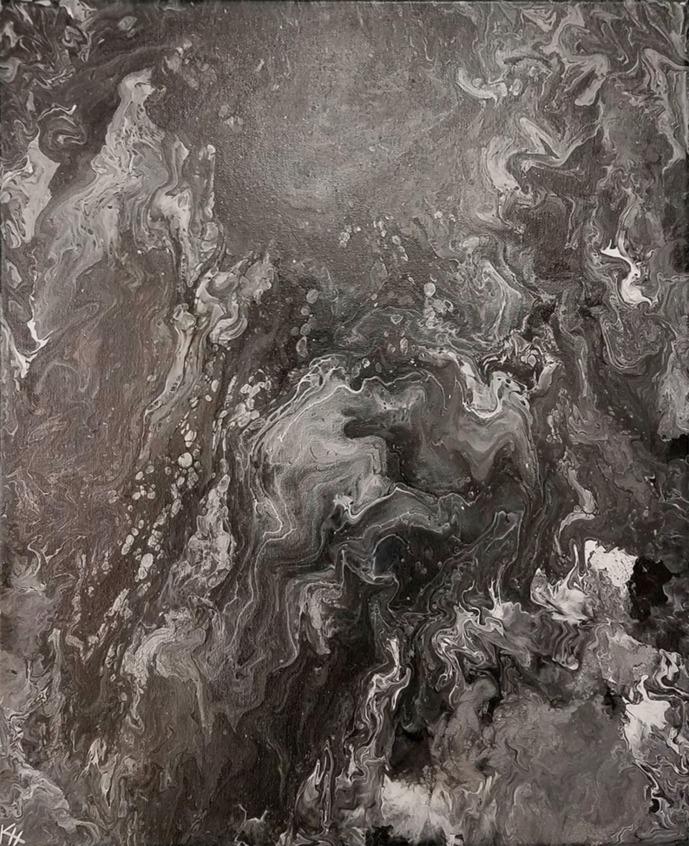
Kayla Hunnicutt scape Land CONTEMPORARY ART REVIEW Touch of Modern
of symbolism and metaphors. Both offer a more powerful view into reality that words struggle to convey. I find myself to be a more visual individual so sharing my creative imagination, theories and beliefs is leading aim. They’re universally translated as well as multi-interpretable. Eyes are among my favorite symbols to use. They’re the windows to the soul, the beholder of beauty. They also represent intelligence, truth, clairvoyance, intuition, consciousness, sight, observation and much more. The knowledge of metaphors and symbolisms in literature comes from being an avid reader as well as my awesome teacher who I had as an advanced English teacher in 10�� grade. The variety of materials she had us read as well as the way she engaged the class to understand the depth of what we were reading has immensely influenced my ability to project that in my paintings. The most symbolic story I remember reading was “A Perfect Day for Bananafish” by J.D. Salinger. The description of the room, the names of the characters and the interaction involved in the story were all symbolic. It made the story more emotional and memorable, much like the purpose of symbols and metaphors when introduced in art.
Allegory is also a huge factor, for the soul intent of enlightening the world, as crazy as that sounds. There’s a bigger
picture out there that is refused to be seen because the limitations of the human mind. It’s by expanding and practicing to use our imaginations that we can more abstractly dissect everything to a surreal level. It encourages more insightful ideas that can transform a small idea into a major innovation or a new lead into research. Allegorical painting has been the intent of my paintings before I had the ability to create it. Self- taught free form painting is a constant lesson, but with each passing painting completed, hidden messages will remain to be a common trend.
You also draw from universal imagery and another interesting works of yours that has particularly impressed us is entitled Bob Marley Tribute: how do your memories and your everyday life's experience fuel your creative process?
Kayla Hunnicutt: Life is a roller coaster but being in the moment to appreciate the ups and experience the downs is what grows the understanding of being alive. I capture that and transform these times as stories or realizations. After these incidences happen and remain as memories, we continue our paths and mature along the way so we can reflect and interject new meanings and lessons from those times that you may have not noticed before. It’s what keeps us on track to becoming the best version of
scape CONTEMPORARY ART REVIEW Special Edition Land
Waterf all

Kayla Hunnicutt scape Land CONTEMPORARY ART REVIEW
Pyramid
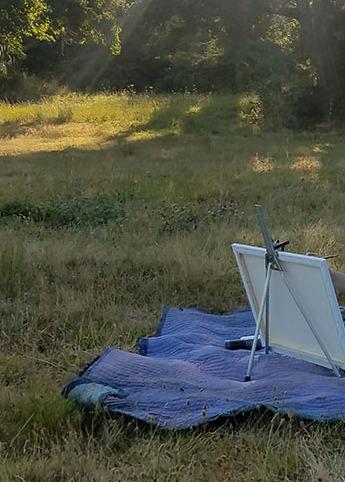
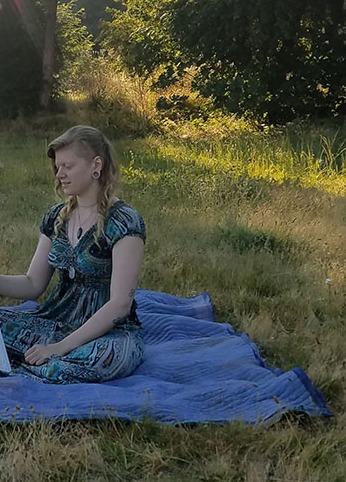

Land scape CONTEMPORARY ART REVIEW Special Edition
Bob Marley Tribute
ourselves. Directing that to my creative process, it’s much like parents not wanting their children to make the same mistakes they did. In fueling my process, I did a lot of self-exploration and realization that could come to assist somebody else dealing with a similar situation. It’s the humanitarian and counselor in me that dreams of making that impact to help. New experiences in everyday life is still viewed at this mental state but could encourage even more reflection in the future. For now, expressing the values and beliefs that I’ve come to understand from past and present will push me further to make impactful art.
How do you consider the nature of your relationship with your audience? By the way, as the move of Art from traditional gallery spaces, to street and especially to online platforms — as Instagram https://www.instagram.com/fromaquari anhands — increases, how would in your opinion change the relationship with a globalized audience?
Kayla Hunnicutt: The nature of my relationship with my audience is depending on which audience. Having art sales and getting to meet and converse with people that appreciate what I’m trying to accomplish has been very rewarding and reaffirming. My audience on either Instagram or Facebook is relatively lacking, but still
noticed. The beautiful thing about the social media platforms is it can get far fast, which in art is a good thing. It also allows variety. There’s several artists on Instagram that I follow for the sheer joy of seeing their perspectives of life and how they recreate it. A more globalized audience could increase the relationship between artist and audience tremendously for interaction and becoming more personable.
We have really appreciated the multifaceted nature of your artistic research and before leaving this stimulating conversation we would like to thank you for chatting with us and for sharing your thoughts, Kayla. What projects are you currently working on, and what are some of the ideas that you hope to explore in the future?
Kayla Hunnicutt: Thank you so much for having me. This has been an inspiring conversation. Currently I have a list of ideas that I’m still in the process of, a strong allegorical one is my next debut. I’m excited to play around with monochrome and color splash designs in the future as well and continue to transcend viewers beyond the realm of the imaginable. Stay tuned!
An interview by Josh Ryder, curator and Melissa C. Hilborn, curator landescape@europe.com
Kayla Hunnicutt scape Land CONTEMPORARY ART REVIEW
LandEscape meets
Julia Hadrich
Julia Hadrich is an aspiring photographer living in Peoria, AZ. Majoring in photography and a minor in photo-editing, she received an Associate in Arts from Rio Salado College. From camera obscura to the immensely challenging world of digital, Julia has been emerged herself in the history of photography. Not only does Julia continue to learn different techniques, she challenges her photography skill by entering online photography sites such as; Viewbug but also, in local art competitions. In February 2012, during the Arizona Centennial, her photographs were displayed at the Phoenix Art Museum.
An interview by Josh Ryder, curator and Barbara Scott, curator
landescape@europe.com
Hello Julia and welcome to LandEscape. Before starting to elaborate about your artistic production and we would like to invite our readers to visit https://julesp18.myportfolio.com in order to get a wide idea about your multifaceted artistic production, and we would start this interview with a couple of questions about your
multifaceted background. You have been working on your photography since you were eleven years old and you later nurtured your education with an Associate in Arts, that you received from Rio Salado College: how did those formative years influence your evolution as an artist? Moreover, how does your cultural substratum direct the trajectory of your current artistic research?
Julia Hadrich: I began to be obsessed with photography after learning
scape Land CONTEMPORARY ART REVIEW
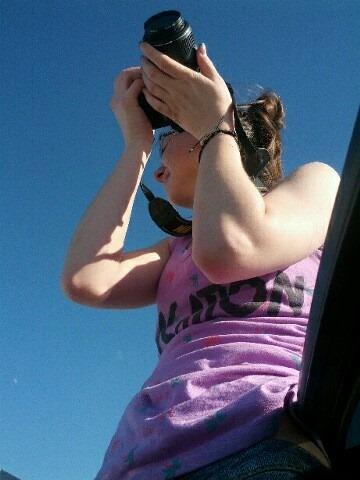
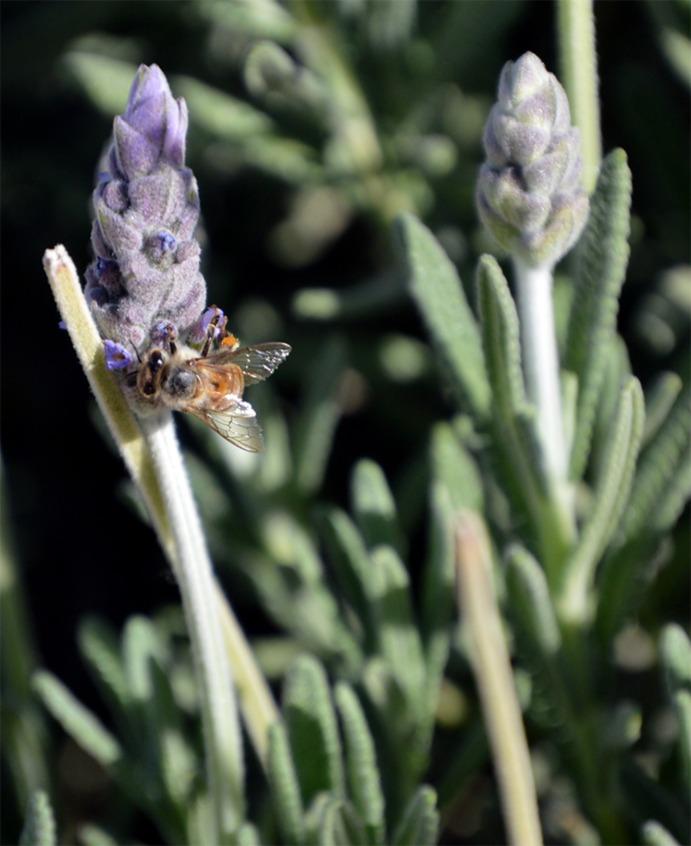
Special Edition scape CONTEMPORARY ART REVIEW Land
about George Eastman who is the founder of the Kodak Camera Company. I remember reading his biography thinking, “This is what I want to do. I want to be a photographer.”
Once I progressed to high school, everything I did evolved around photography and art. Every semester was an art class of some sort. From Art 100 working with paint to dance class.
With all of those classes taken, it made me appreciate photography more. I took all of the photography classes my school offered for three years until I was able to take more in college. Those adolescent shaped me to realize I loved photographing landscapes and objects in macro.
My work is all me. I photograph what I feel. As a child, my parents always told us we could do anything we wanted as long as we are happy. I’m at my happiest when I’m photographing. Everytime I photograph, I forget who I am with and what’s around me. I concentrate on what’s happening through my viewfinder. The energy I put in to my
images, I hope exudes through my images.
The body of works that we have selected for this special edition of LandEscape has at once impressed us of for the way you provide the viewers with such a multilayered visual experience: when walking our readers through your usual setup and process, would you tell us how do you usually develop the initial ideas for your artworks?
Julia Hadrich: My ideas for my artwork usually stem from random conversation.
For instance, my idea for photographing my macro dessert series came from me walking through a grocery store. I was strolling through the pastry area and POOF! I realized I could photograph up close images of food on brightly colored background (Which for my use are poster board). The ideas come to light when I don’t think too hard about it.
They tend to evolve as I’m photographing. I continuously converse with people about my
CONTEMPORARY ART REVIEW
Julia Hadrich scape Land
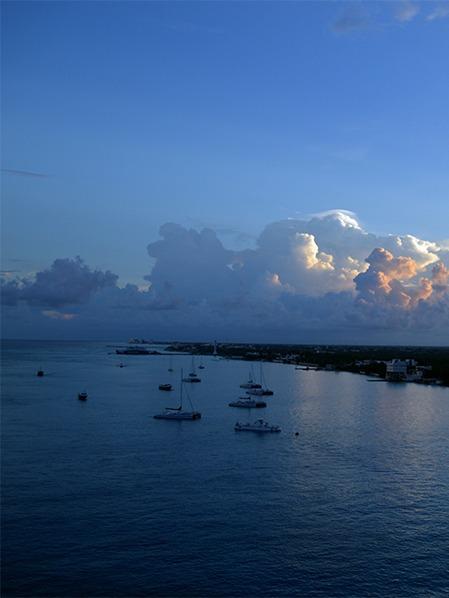
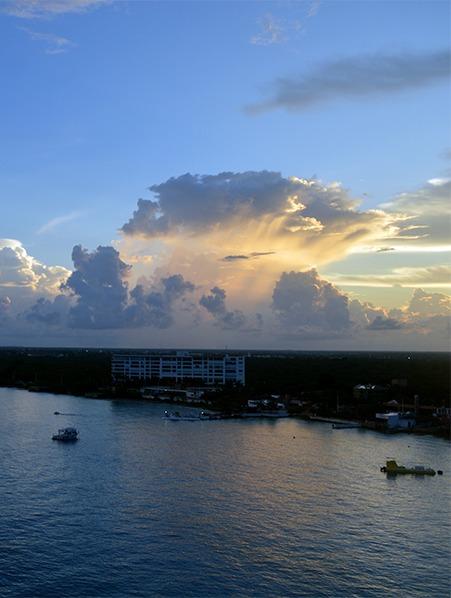
ideas, that is how they build until I get a final product.
Your works seem to be laboriously structured to pursue such powerfully thoughtful visual impact: what was your working schedule like? Did you carefully plan each shot?
Julia Hadrich: Honestly, I shoot what I feel. As bad as this may sound, I photograph in the moment. Of course, there is a little planning involved. For the most part, I don’t overthink my craft. I shoot what I like because I want to share it with others. Each shot I take, I merely try every position possible until I get a shot that works for me.
For your Arizona Mystery Castle series you have drawn heavily from the peculiar specifics of its environment and we have highly appreciated the way you have created such insightful resonance with the landscapes: how do you select the specific locations and how do they affect your shooting process?
Julia Hadrich: The reason I decided to photograph the Arizona Mystery

Special Edition scape CONTEMPORARY ART REVIEW Land
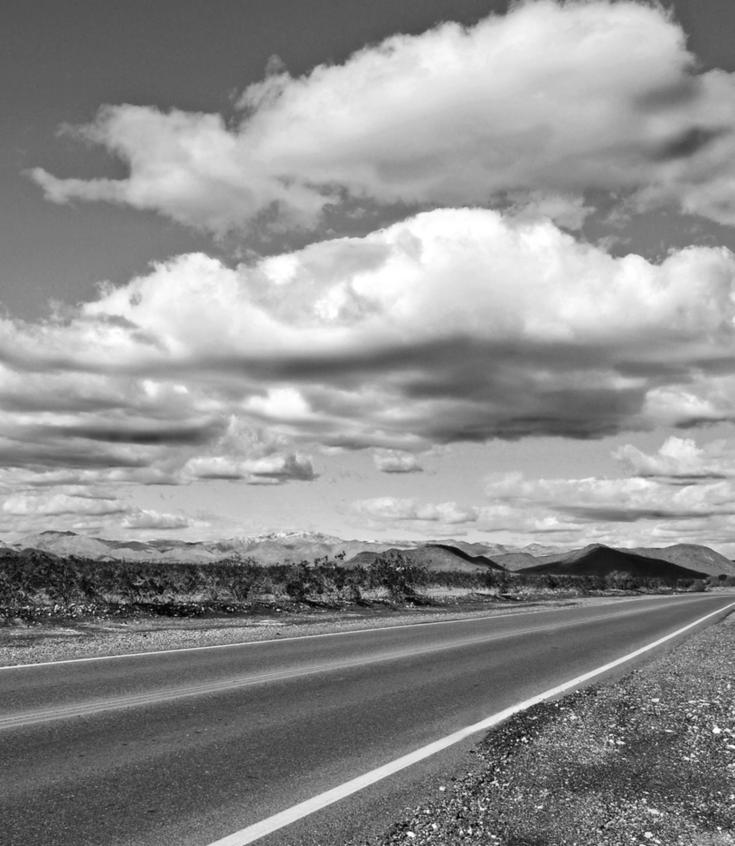
scape Land CONTEMPORARY ART REVIEW
Julia Hadrich
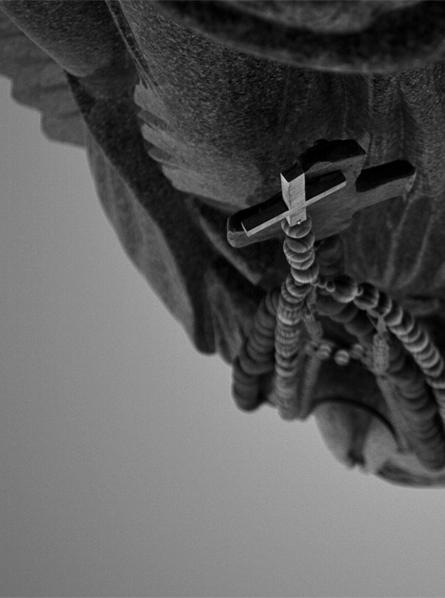
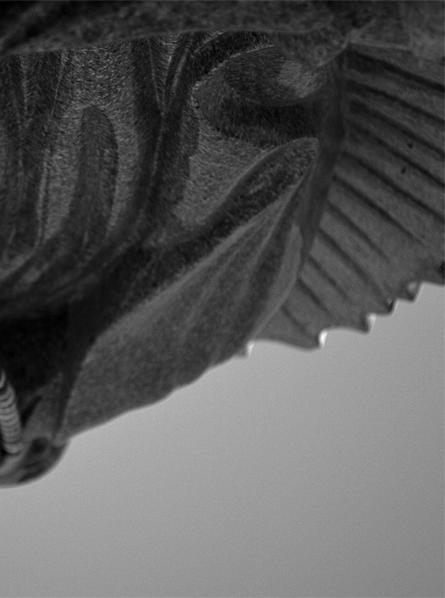

scape CONTEMPORARY ART REVIEW Land Special Edition
Castle was because I was given a brochure about the castle. I thought the castle was a beautiful place and figured it would be completely different thing for me to photograph.
I’ve barely seen any images of the Mystery Castle before the day of the shoot. Choosing places to photograph are simple for me. I simply look up destinations near me to photograph that someone else my not necessarily see as interesting or beautiful. I go to photograph and put my own artistic spin on every shot.
The biggest issue of where and when I am shooting is the heat. Living in Arizona and being a photographer is difficult. Shooting comes with challenges when sweat is speeding in to your eyes against a camera. With the added challenge of having to wear glasses as well.
How does your travels and your everyday life's experience fuel your creative process? In particular, how do you consider the relationship between experience and imagination playing within your artistic practice?
Julia Hadrich: I believe experience plays a big part in what I photograph.

CONTEMPORARY ART REVIEW
Julia Hadrich scape Land
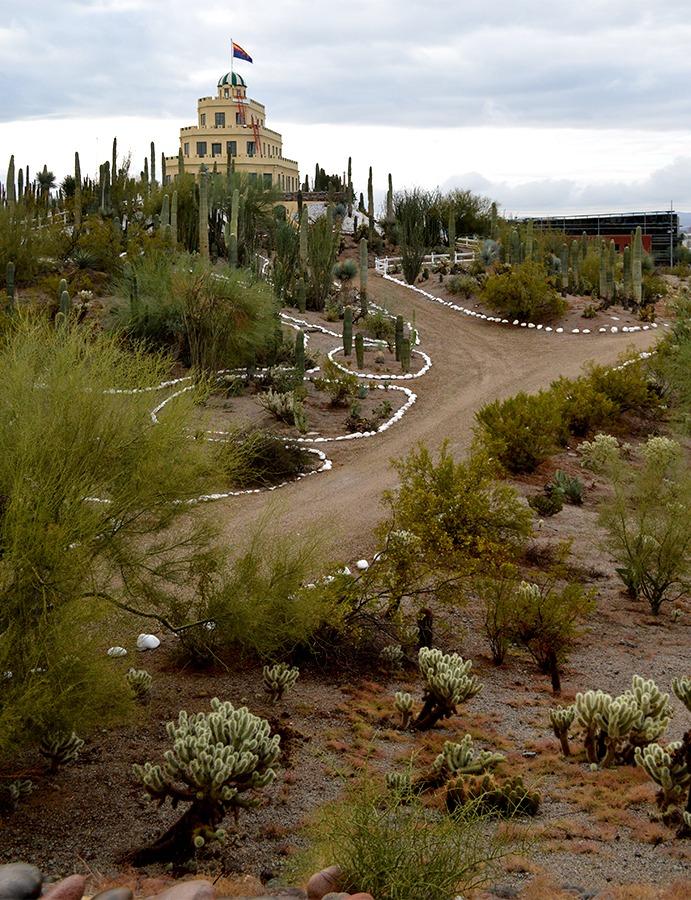

A photographer can’t truly photograph something unless they take the beauty of what they are
looking at first. For instance, several years ago, I photographed in Sedona. Before I picked up my camera, I took

scape CONTEMPORARY ART REVIEW Land Special Edition
in the scenery. I breathed in the crisp cool air while gazing upon the vast red rocks. Thinking about all of those who
walked there before me and all who may be there after me.

scape CONTEMPORARY ART REVIEW Land
Julia Hadrich

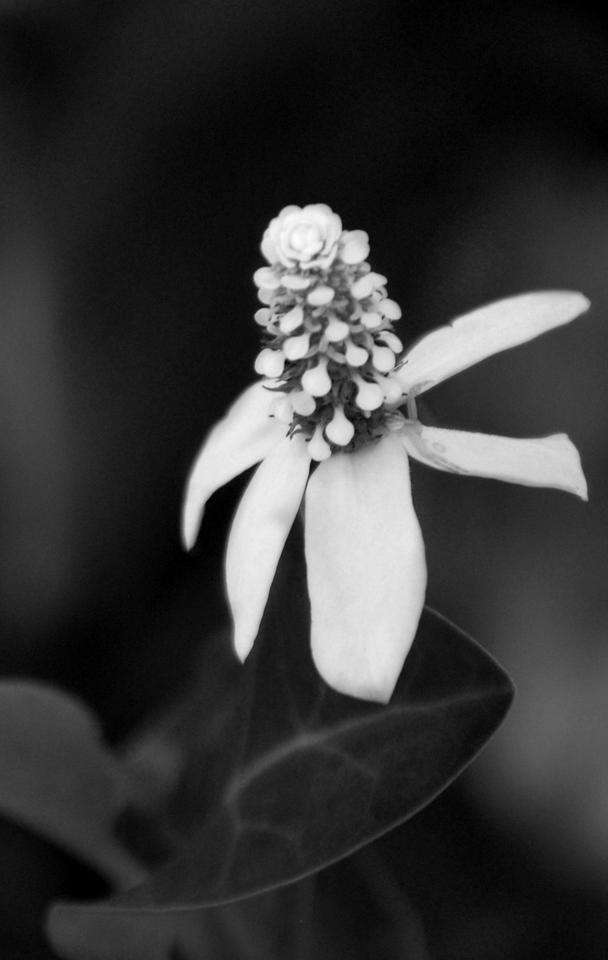
It's important to mention that you also studied photo-editing. Manipulation in visual arts is not new, but digital technology has extended the range of possibilities: how do you consider the role of technology playing within your artistic practice?
Julia Hadrich: Studying photoediting and being a photographer go hand-in-hand. It is important to know how to use Photoshop or Lightroom because knowledge is power. For me, I do not like to change the integrity of my photographs. The most editing I use for my images is to bump up the saturation or to sharpen parts of the image if need be. Anytime I shoot, I get what I need in camera. There is a time and place to use editing software. I am not against photo-manipulation, because I know there is a lot of studying and practice for it.
We have really appreciated the way your work breaks the emotional barrier with the audience: what do you hope the viewers will take away from your Tovrea Castle series?
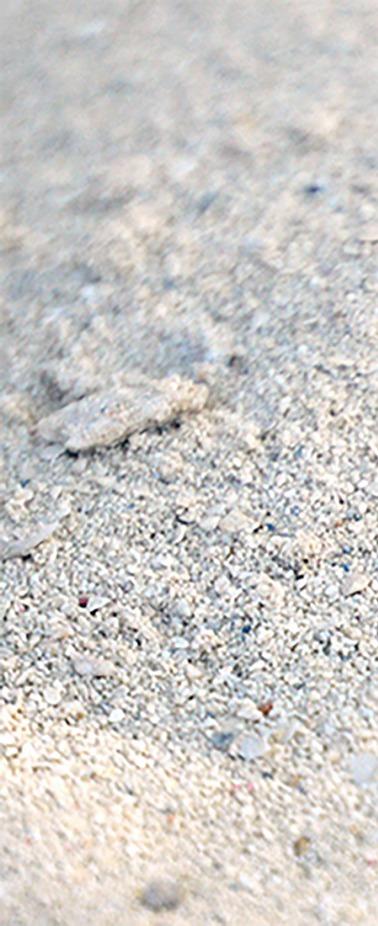
scape CONTEMPORARY ART REVIEW Land Special Edition
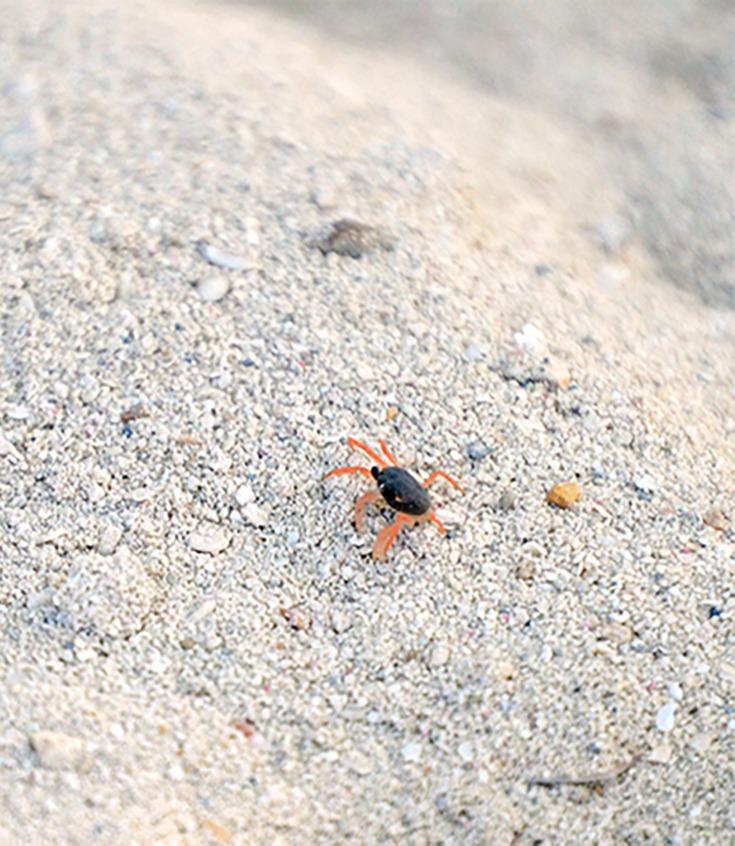
Julia Hadrich scape Land CONTEMPORARY ART REVIEW
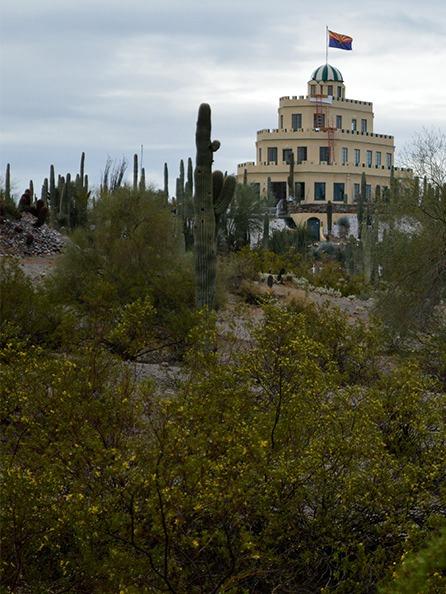


scape CONTEMPORARY ART REVIEW Land Special Edition
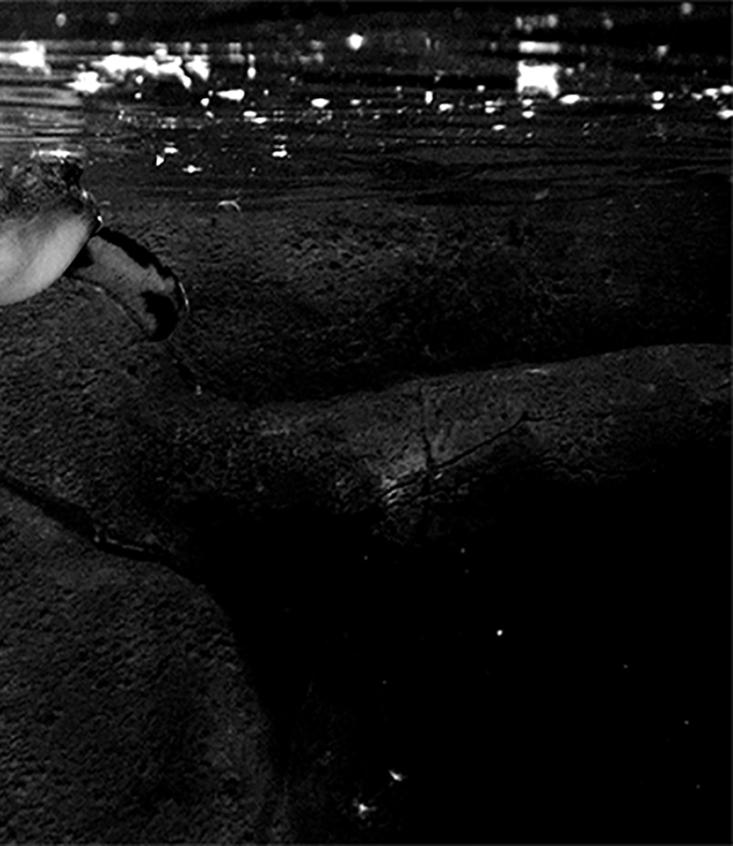
scape Land CONTEMPORARY ART REVIEW
Julia Hadrich
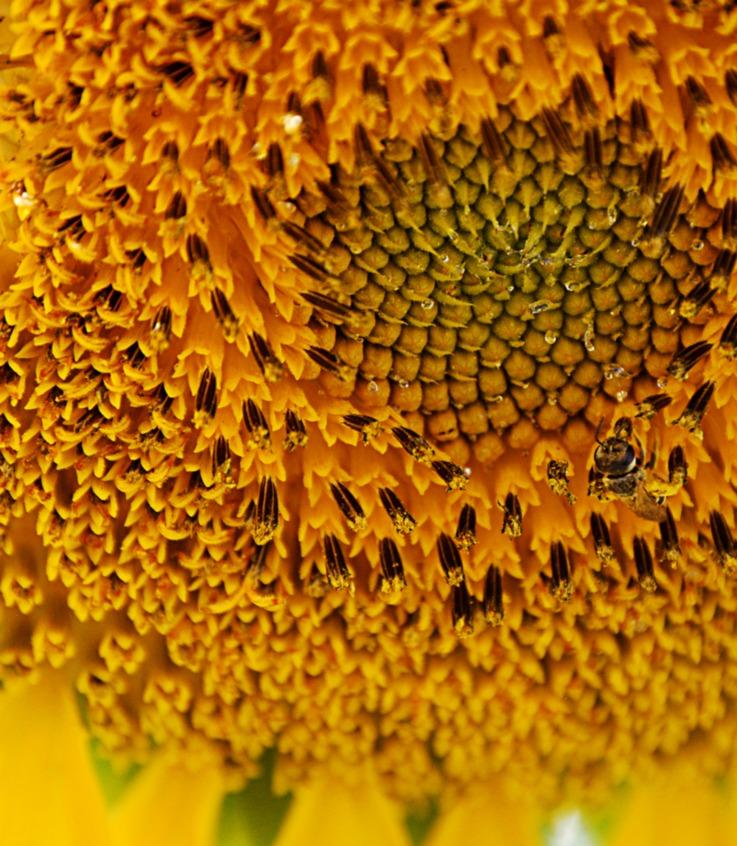
Special Edition scape CONTEMPORARY ART REVIEW Land
Julia Hadrich: Tovrea Castle has been at its location since 1929. The castle is nestled in the heart of Phoenix. As you look out at the city from the windows at Tovrea Castle, the sound of the city quietly echoes in your ears as you watch planes descend toward the airport. I hope viewers appreciate the beauty as I did when I first walked up to the castle. If there is an opportunity to see Tovrea Castle while visiting Arizona, whether you are a photographer or not, the castle is worth seeing.
Provocatively, German photographer Thomas Ruff stated once that "nowadays you don't have to paint to be an artist. You can use photography in a realistic way". You can even do abstract photographs. What is your opinion about the importance of photography in the contemporary art?
Julia Hadrich: Pictures show the truth. My photographs aren’t manipulated. They are what I see in front of me. As a photographer, it is imperative to remember that we are story-tellers. Artists see the world differently. Those who have a gift in the arts have to remain mindful of who may be influenced For instance, there is a

CONTEMPORARY ART REVIEW
Julia Hadrich scape Land
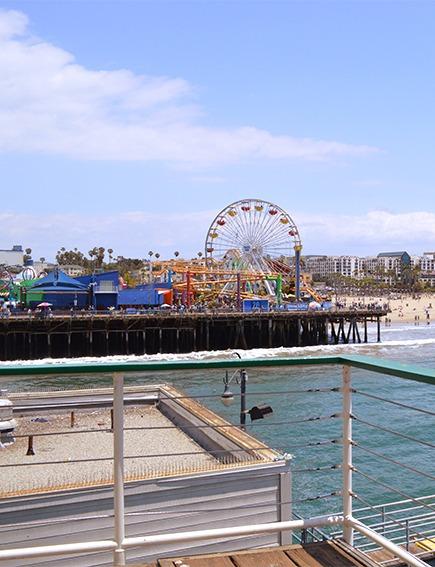

photograph I took while in Cozumel, Mexico. It was sunset, boats were docking. Looking upon the water, one may assume Cozumel is a quiet and peaceful destination.
However, once the day begins with the port gates opening for cruise ships, the city turns loud and crowded. With this being said, the moment I captured shows the ending of a bustling day. Which truly represents no matter where you are, the quiet moments are the best. This moment will forever be engraved in my mind. This photograph makes me realize how small I am compared to the rest of the world.
We have really appreciated the multifaceted nature of your artistic research and before leaving this stimulating conversation we would like to thank you for chatting with us and for sharing your thoughts, Julia. What projects are you currently working on, and what are some of the ideas that you hope to explore in the future?
Julia Hadrich: A new project I have been dabbling in is photographing animals as close as I can get to them.

scape CONTEMPORARY ART REVIEW Land Special Edition
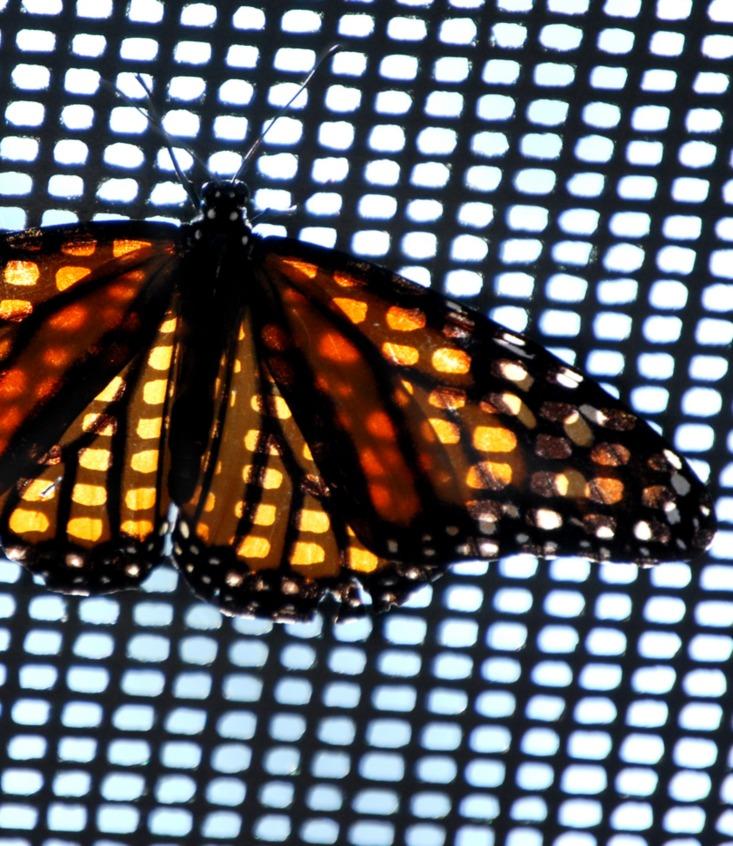
scape Land CONTEMPORARY ART REVIEW
Julia Hadrich

Land scape CONTEMPORARY ART REVIEW Special Edition
I have two cats and I have a real fascination with photographing animal faces up close. There is so much detail between the fur and whiskers.
Of course, one of my biggest goals is to travel all over the world. I’m really hoping I can go to Ireland for
my 30th birthday. There are no plans set in stone, yet. I am hopeful, though.
An interview by Josh Ryder, curator and Barbara Scott, curator landescape@europe.com

Julia Hadrich scape Land CONTEMPORARY ART REVIEW




















































































 Copper
Copper



































































































































































